Student Exchange Program
Tama Art University has concluded student-exchange agreements with numerous leading art universities around the world, and we regularly accept exchange students from our partner schools.
As a destination for international exchange students, the university is highly appealing for various reasons including the following:
- Progressive, hands-on classes taught by some of Japan's top artists and designers
- Among the most extensive facilities and environment for artistic production in the Asian region, including the Hachioji Library, one of the world's most beautiful libraries
- Creative and exciting interactions with extremely gifted and competent students who have passed our very competitive entrance examinations
Tama Art University welcomes outstanding international exchange students who want to gain new perspectives as artists and designers in Tokyo, Japan, a city where history, tradition and culture are in magnificent harmony with world-leading economic and technological development.
For application methods and procedures, please consult the staff of your school's international exchange center.
- * All classes are basically conducted in Japanese. While some faculty members are able to offer support in English, we strongly recommend that you acquire basic Japanese proficiency before participating in the exchange program.
- * We are not currently accepting applications from those who attend schools with which we do not have student-exchange agreements. If you would like to enroll in the University as a regular student, please contact our Admissions Office ( nyushi@tamabi.ac.jp).
- * We are not offering any spring / summer short course at present.
Contact: International Exchange Section ( intl-ex@tamabi.ac.jp)
Student Reports
Year 2025
Momoko Margarete Baumgart
| Home school: | Berlin University of the Arts |
|---|---|
| Accepted: | Sculpture |
| Period attended: | April 2025 to August 2025 |
My exchange semester at Tamabi was an exciting and enriching experience. Coming from general fine arts studies, I applied for the Sculpture Department to step out of my comfort zone and experience an art university that is more structured into the different disciplines.
Naturally not everything was easy - sometimes I felt lost in translation, both linguistically and creatively - those moments shaped the experience just as much as the inspiring ones and I was met with kindness and understanding. Artistically, I was intrigued by the works of the students and the teachers in the Sculpture Department. Their approaches were very interesting often different from mine, which made me reflect on my own practice in new ways.
Beforehand I expected a weekly schedule of some kind, with lectures and seminars. Instead the Master’s program was very self-organized and independent. So, if you're thinking of going to Tamabi, especially to the Sculpture Department, I’d recommend reflecting early on what kind of work you’d like to explore - especially material-wise.
Do you want to cast, carve, mold, build and with what materials? This place gives you access to amazing workshops, let the teachers know what you’re aiming for - they are supporting, but they won’t chase you. I want to thank the International Exchange Office too. Having them as an open door to walk through and talk to on campus is great. I recommend doing an exchange semester at Tamabi if you want to broaden your perspective. Be open – they are too.
Yeonwoo Chang
| Home school: | University of Applied Arts Vienna |
|---|---|
| Accepted: | Ceramic, Glass, and Metal Works – Ceramic course |
| Period attended: | April 2025 to August 2025 |
I chose Ceramic course to discover the different infrastructure in ceramic facilities and skills from Japan. In my home university, there is a workshop for ceramics to work on one's own project demand, instead of the department that gives the wholesome experience of learning in a full-time department program like Tamabi.
The learning in Tamabi was very detailed in technique, and Tamabi definitely has one of the most well-designed workshop infrastructures to learn and try out different types of ceramic experiment, so I was very blessed to have an experience of those directly and indirectly.
I could truly feel that the teachers and faculty members of the department and the entire school were very dedicated to the university. My supervisor professor was very enthusiastic to help with my uni and personal projects and to build a bridge between me and Japanese culture. Because the art education in Europe and Japan seems to have many differences, not only in practice but also in concept, there was a great need for a sophisticated translation between my artistic expectation and the department’s semester project. The entire department tried very hard to provide and communicate the context of the semester with me, and I felt very grateful for all the supports and understanding. And I must also mention that the International Exchange Center was so kind and supportive that we international students could feel free to contact and ask for important and unimportant questions to navigate life in Japan.
Life in Tokyo and Tamabi as an international student was one of the most exquisite experiences. By integrating and learning through the differences, my perspective became much wider. I was able to discover many beautiful corners in Japan and fulfilled my curiosity through my personal research project outside of the university. Since the art education in Japan can only be an unexpected discovery and sometimes a challenge, I would highly recommend the new incoming exchange students to have their own personal goals or projects to achieve besides the university itself.
It was a great challange, but definately an interesting experience to live in Tokyo and to study at Tamabi. I fulfilled my goals, thanks to all the support from Tamabi through the International Exchange Center. I stayed safe through Japanese health care system; Tamabi even had an extensional service for the foreigners booked for us students. The university library had the best art magazine collection. There were so many places to visit and explore in Tokyo and Japan. I will miss the time in Tokyo so much, and my learnings from this period will stay and grow continuously! 多摩美で知り合った皆さんに心から感謝します。今後もまたお会いできますように。

Matilde Bjørnstad
| Home school: | Oslo National Academy of the Arts |
|---|---|
| Accepted: | Graphic Design |
| Period attended: | April 2025 to August 2025 |
My exchange semester at Tama Art University was a very fulfilling experience, and one that I will always value both artistically and personally. I chose Tamabi because of its strong reputation in the arts, and because I wanted to experience art education in a different cultural and academic environment than my home institution. Japan’s unique artistic traditions, combined with its contemporary design culture, made it a very attractive destination for me as a student.
Studying at Tamabi was rewarding, although at times also a little challenging. As an exchange student, it was sometimes difficult to get the practical information I needed in order to understand what kinds of classes I could join or how things were organized. Unlike in my home university, we did not have personal space such as a desk or even a locker, which at times felt frustrating. However, this also taught me to adapt quickly, stay flexible, and find my own ways of organizing materials and projects.
Despite these small challenges, the experience was incredibly valuable. One of the best aspects of Tamabi is the creative energy on campus. The atmosphere is very inspiring—students are dedicated to their work, and there is a strong sense of community in the studios and classrooms. The faculty and staff were supportive, and I felt encouraged to experiment and try new approaches in my own practice. Tamabi’s facilities, such as workshops and technical support, gave me opportunities to explore new techniques that I would not have had access to at home.
Living in Japan also contributed greatly to my exchange experience. I learned a lot about daily life, traditions, and culture, and I was able to develop both as an artist and as a person. I would highly recommend that future exchange students try to live as close to campus as possible. This makes it much easier to participate fully in classes and in student life, since the commute in Tokyo can otherwise be very long and tiring.
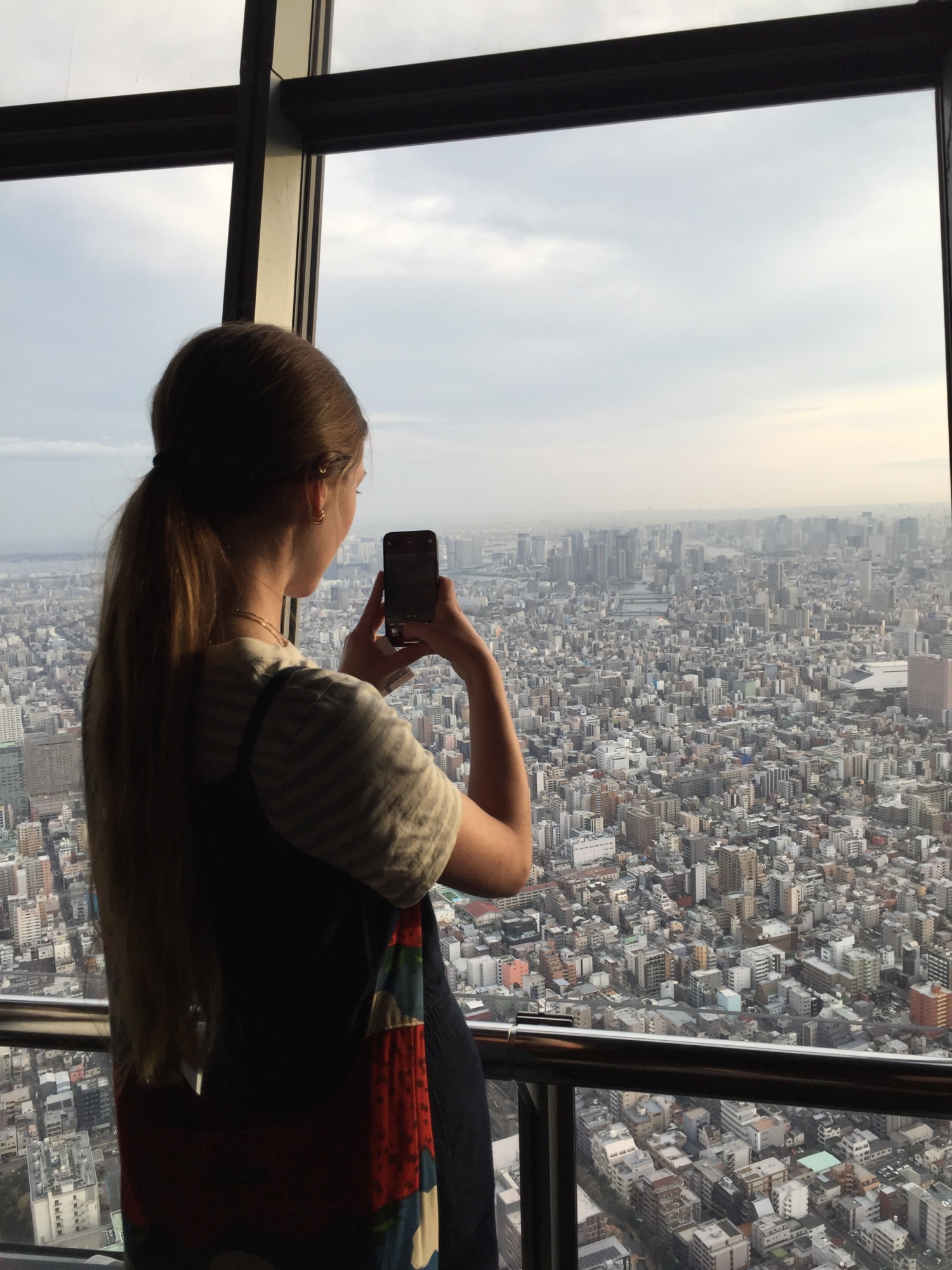
Roxana Tayefeh Mohajer
| Home school: | University of Gothenburg |
|---|---|
| Accepted: | Graphic Design |
| Period attended: | April 2025 to August 2025 |
The opportunity to do an exchange in another country has always been something I aspired to - especially outside of Europe.
I chose to study at Tamabi for many reasons, primarily because the school seemed incredibly promising, with its wide range of facilities and workshops. I enrolled in the Graphic Design department because I wanted to explore nonwestern design methods and modes of expression, particularly in illustration and typography.
My interest in Japanese culture and art began a long time ago, so I was very excited to visit Japan for the first time. When it came to communication, I only had a basic understanding of Japanese, which made me unsure of my ability to interact with others. Fortunately, the people I spoke to were very kind and patient despite my limited language skills. This encouraged me to improve and memorize as many words and phrases as possible. I believe my Japanese has improved significantly during the exchange, even though I still have much to learn.
What impressed me most was the level of care and dedication students put into their work, especially during presentations. Coming from a background in Scandinavian design, I found it fascinating to experience a different design culture and to see the trends that are popular in Japan. This exposure has definitely influenced my personal approach to graphic design.
My advice to future exchange students is to learn as much Japanese as possible—and don’t be afraid to use it once you're in Japan! Talk to as many people as you can and ask lots of questions, even if it feels uncomfortable at first.
I will always cherish the experiences and memories I gained at Tamabi and in Japan!
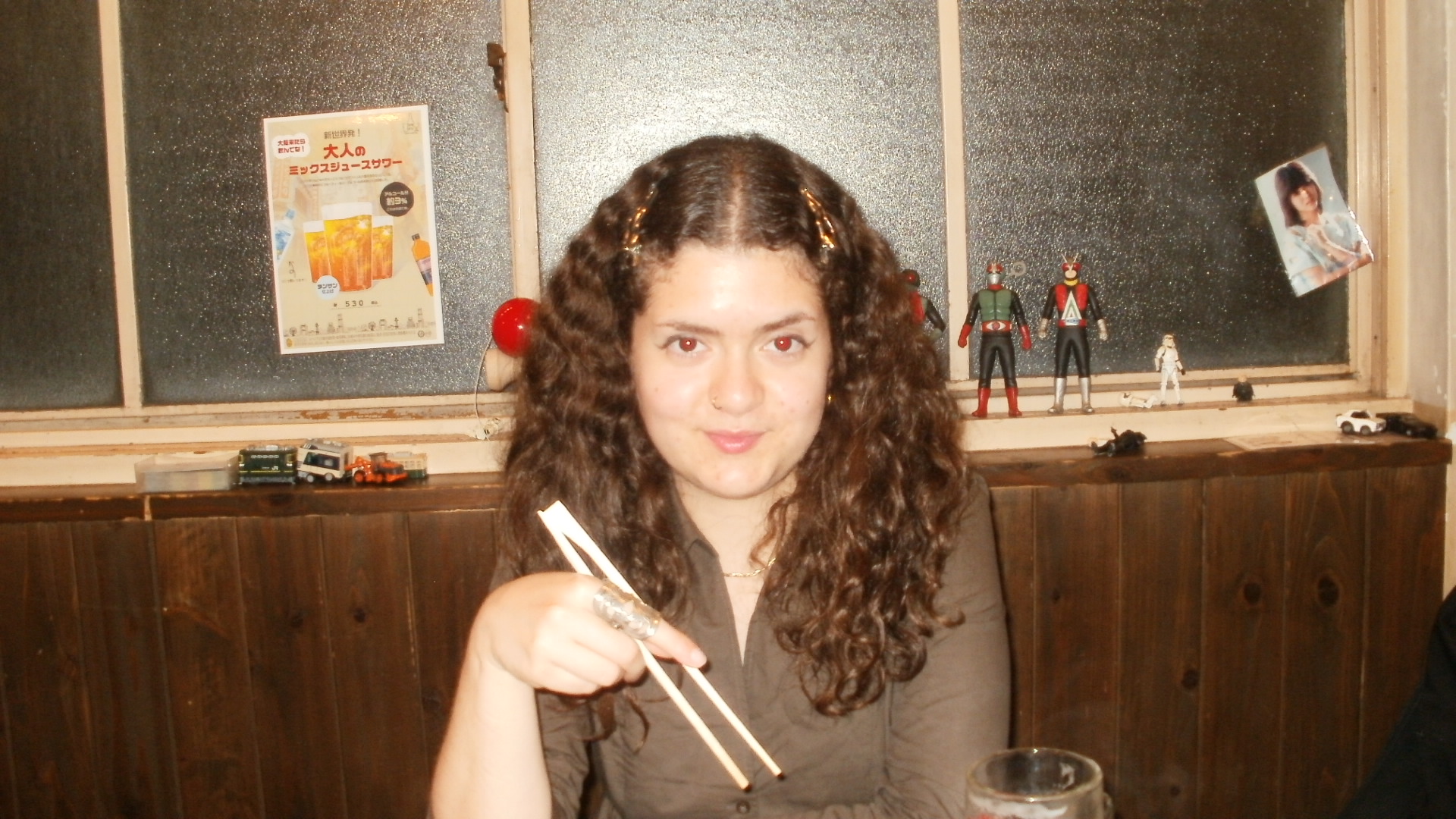
Anna Sofia Starck
| Home school: | Aalto University |
|---|---|
| Accepted: | Product Design |
| Period attended: | April 2025 to August 2025 |
When I decided to go on exchange, I knew I wanted to get as much out of the experience I could by going as far away from home as possible. Japanese culture, such as food, cinema, and art, have always been a part of my life since I saw my first studio Ghibli movie at 4 years old. Therefore, Japan seemed like the obvious choice for my exchange country. Tamabis’ campus is close to nature, which contrasts with the brutalist architecture of the university. The surroundings of Tamabi provide a nurturing environment for creativity, in addition to reminding me of my home country.
Studying product design at Tamabi differed from my home university in many ways. I joined the second-year students in their coursework. There were no lectures and during my 4-month exchange I worked on 3 longer term projects. We had a lot of freedom on what we could design, while getting weekly feedback from teachers. I enjoyed the freedom and working with my hands-on physical products, my favorite being a set of wooden stools. Back at my home university, we have stricter steps and guidelines, and work mainly on concepts, rather than making end-stage products. I struggled a bit with the language, since everything starting from the assignments, was in Japanese. While the language barrier was frustrating and challenging at points, I could prove my own capability to adapt to different surroundings. The 6-day school weeks were also a bit difficult to adapt to at first.
All in all, I loved living in Tokyo and experiencing many different aspects of Japanese culture. The students at Tamabi were very welcoming and friendly. I recommend exchange at Tamabi to anyone who is interested in learning more about Japan in a new environment, and who is ready for a bit of a challenge in adapting to a different language and culture.
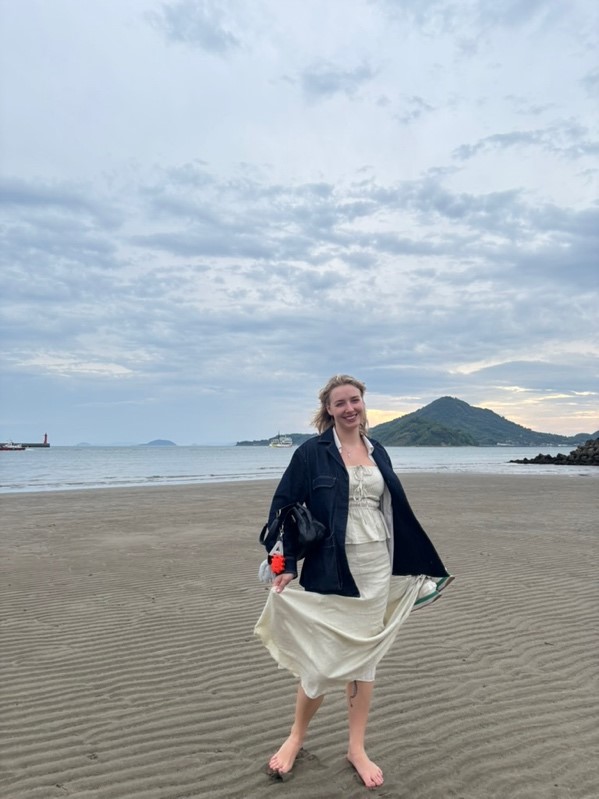
Chandana Shivaram
| Home school: | National Institute of Design |
|---|---|
| Accepted: | Textile Design |
| Period attended: | April 2025 to August 2025 |
As I had already mentioned in my letter of purpose, since childhood my father and I have had a great appreciation towards Japan’s philosophies, value systems, and technological innovations. This was one of the major reasons for me to opt to come to Japan and to experience it first-hand. I chose Tamabi because of its strong reputation in art and design, and its focus on nurturing creativity through both traditional and contemporary approaches. Tamabi represents the ideal environment where I can immerse myself in these values while engaging with global perspectives in design.
In India, especially at NID, my design education is rooted in the diversity of crafts and cultural traditions. Tamabi, on the other hand, provides a platform to explore Japan’s unique blend of minimalism, innovation, and aesthetics in design — across architecture, textiles, and lifestyle. Beyond academics, I was also able to see the differences in systems of how things function in Japan. One thing that has extremely impressed me is the efficiency with which these systems operate, and how well they work for the people. Life here feels very organized, and yet welcoming. I have also found people in Japan to be very nice and friendly, which makes adapting to a new culture and environment much smoother. This contrast between India’s vibrant, community-driven crafts and Japan’s refined, efficient, and disciplined way of life excites me, as it allows me to explore design from two very distinct yet complementary cultural lenses.
The university’s support for exchange students and structured programs helps create a smooth cultural and academic transition. The environment is very student-friendly and positive, with a beautiful campus and warm, welcoming people. Everyone is hardworking and punctual, which creates a motivating atmosphere. Personally, I loved working in the library — I have never been so efficient and focused as I was there. I also thoroughly enjoyed the exhibitions during the open campus, which offered valuable insights and inspiration. Living in Japan itself is an enriching experience. Its blend of tradition and modernity, respect for nature, and everyday aesthetic sensibility continues to inspire me both personally and professionally.
I would encourage future applicants to approach the exchange program with an open mind and readiness to embrace differences. At Tamabi, you will not only learn about design but also about values and perspectives that shape how design is practiced in Japan. It is important to be willing to contribute your own cultural insights while remaining receptive to new ideas. The program is not only about academic learning but also about personal growth through cultural immersion.
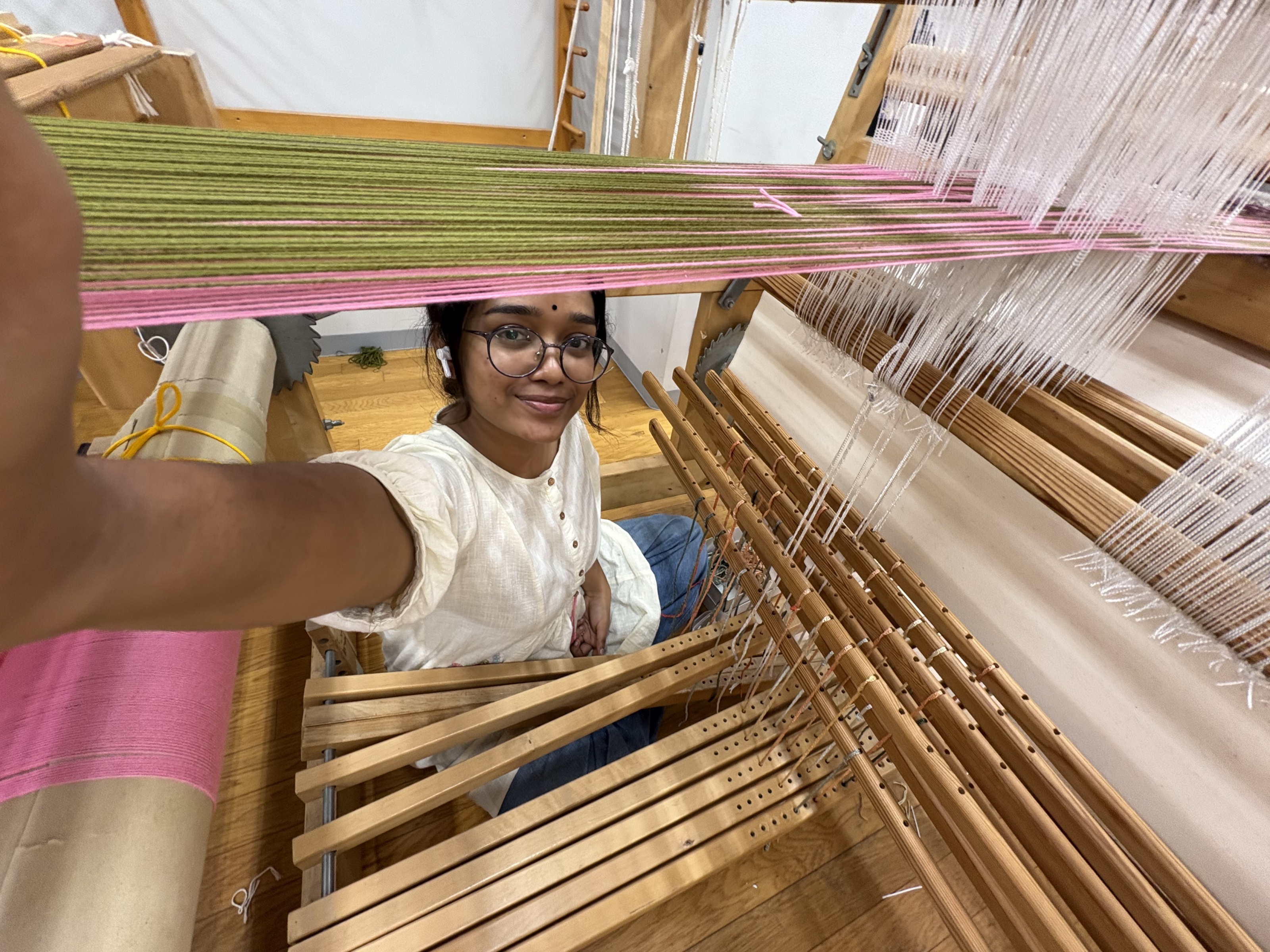
Joel Patrice Nikles
| Home school: | University of Applied Arts Vienna |
|---|---|
| Accepted: | Architecture and Environmental Design |
| Period attended: | April 2025 to August 2025 |
Since I can remember, I’ve been fascinated by Japanese architecture, food, and subculture. After traveling to Japan, my interest only deepened, and I wanted to gain a better understanding of the things I had only briefly experienced during my visit. In particular, the architectural patchwork of cities like Tokyo and Osaka, and the way they balance tradition with futuristic ideas, inspired me to learn more about their context and history. So, when the opportunity arose to do an exchange in Tokyo at Tamabi, I didn’t hesitate.
The Tamabi campus itself is beautiful, and seeing it come alive during cherry blossom season was a real highlight. I loved browsing the library’s wide range of books and exploring its extensive DVD collection. The workshops were also very impressive. Even though I couldn’t use most of them, simply walking by and seeing what other students were working on was incredibly inspiring.
Although all the professors and assistants were very kind, I found it quite overwhelming at first to create a schedule that met the expectations of my home university. At my home institution, departments are less divided, which allows students to take classes across many different fields. At Tamabi, however, enrolling in courses outside the prescribed schedule required considerable effort.It was also challenging to earn enough credits for my home university, since the architecture master’s program at Tamabi is essentially structured around a single class. Interestingly, while the schedule itself was rather rigid, the project work within that class offered far more freedom. The topics were so broad that students could pursue almost any direction as long as they had a strong idea, some even dedicated the entire semester to sculpture. I found this very refreshing, as it encouraged me to experiment with new approaches in my own work as well.
One last piece of advice I have for incoming exchange students is to start planning and budgeting for housing as early as possible. I greatly underestimated the cost of securing an apartment in Japan. While monthly rent can be relatively affordable, the initial costs are often very high, and some fees are hidden during the early stages of the application process. I would strongly recommend asking for a full list of costs upfront to avoid any unpleasant surprises.
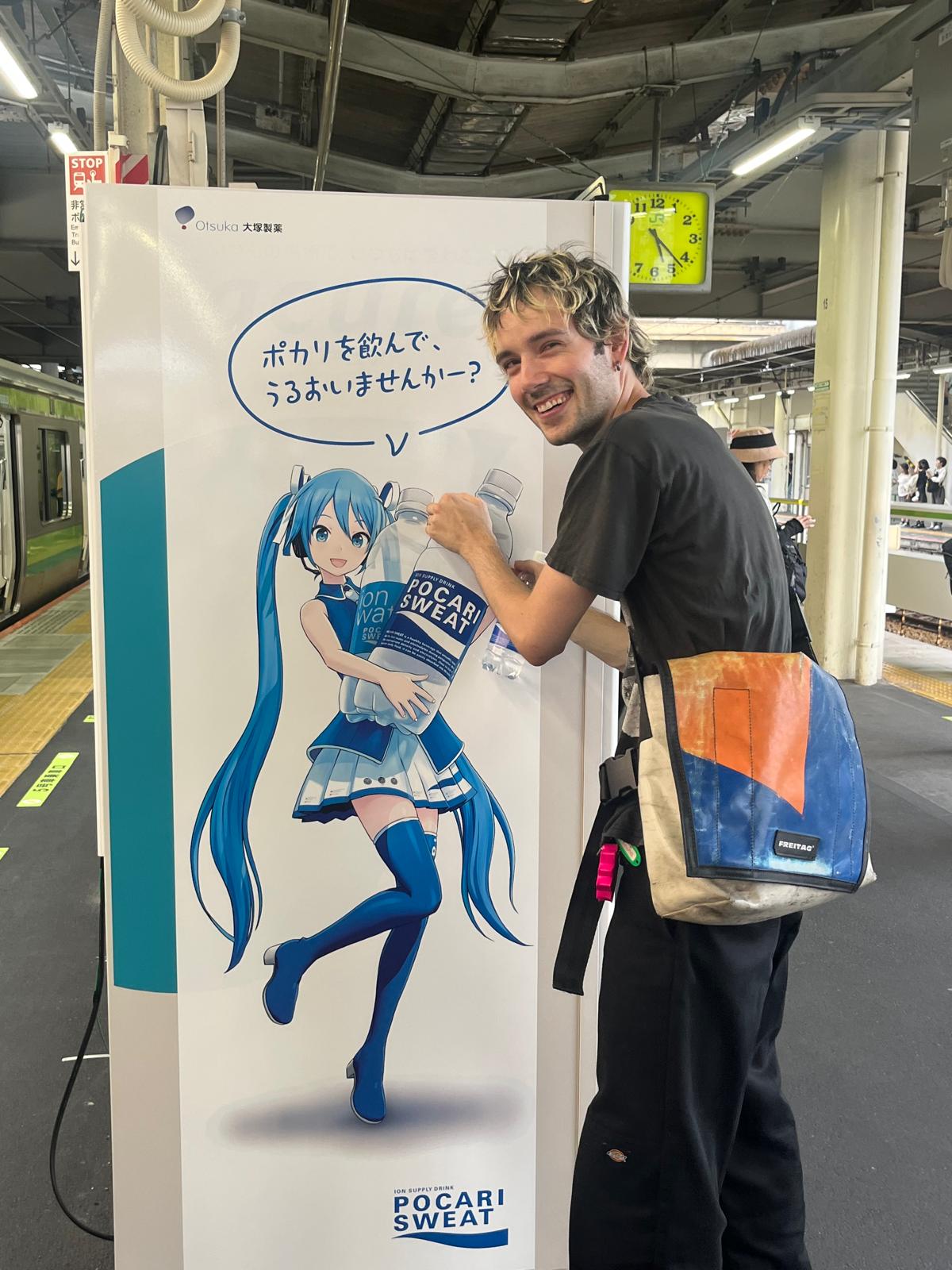
Paula Antonia Tritto
| Home school: | Berlin University of the Arts |
|---|---|
| Accepted: | Architecture and Environmental Design |
| Period attended: | April 2025 to August 2025 |
I am very thankful for my time spent in Tokyo at Tama Art University. I have learned a lot about architecture, people and ways of life and thinking.The students at Tamabi take a bit of time to thaw, being relatively shy, but are very kind, interested and inviting. I really hope to cross paths again.
Japan and Tokyo in particular have taught me especially in unexpected ways. The unmatched size of the city and how much that impacts Tokyo’s architecture, infrastructure and simply your daily life, is something I couldn’t have imagined. The whole time I was in Tokyo there was never a time where I couldn’t have gone to a new exhibition, tried new restaurants or specific activities from Japanese culture like karaoke nights or tea ceremonies.
The studios in the architecture department work differently than what I have experienced in Berlin. The semester is split into two parts so I chose two studios. In Berlin my major is purely architecture whereas at Tamabi architecture is combined with interior architecture, landscape design and environmental design. In their design approaches and teaching style they are also very different than what I had expected. While this is challenging, it is a great opportunity if you are interested in expanding your practice.
Unfortunately, in the architecture department for different reasons many classes and even some of the Studios were not available to exchange students. Since the requirement of hours is much lower for exchange students though, if it is manageable with your home university, I would recommend using your time to travel through Tokyo and learn by immersing yourself fully.
Lastly it is important not to underestimate that you will need financial stability/support and patience for bureaucratic processes. Apartments for example will take relatively high fees for contracts with foreigners who stay less then two years. Processes at city hall (f.e. national health insurance and the address registration) will take time and effort. But while you will need to put in effort and be welcoming of an adventurous time, it will surely be paid back by the wide range of new experiences.
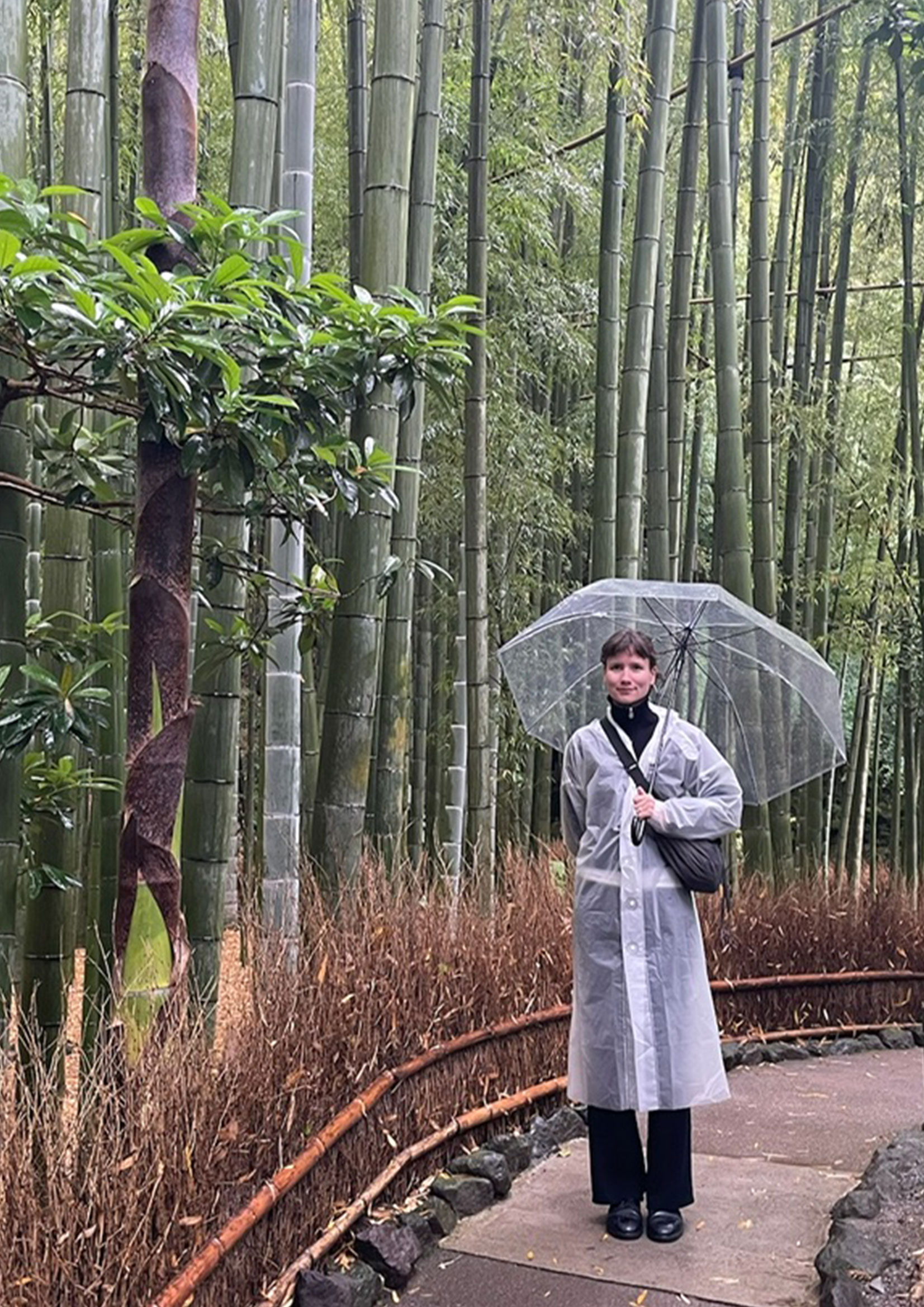
J
| Home school: | Aalto University |
|---|---|
| Accepted: | Information Design - Art and Media Course |
| Period attended: | April 2025 to August 2025 |
Tamabi was my first choice for an exchange university and I’m really happy for the semester I spent studying there. My uni also had connections with other top art universities in Tokyo, but I chose Tamabi mostly because of the beautiful campus, and the location in the green and relaxed western Tokyo - I love nature and was excited to live close to the mountains.
Compared to my home university, the teaching at Tamabi generally felt more personal. I really liked the seminar lectures I had – they felt very intimate, and it was nice to share my progress and get feedback from the professors and my classmates each week. Most of the school work happened outside the lectures - gathering material for my project, visiting the locations suggested by the professors and preparing presentations. I feel the teachers gave us freedom to explore and work independently, while still checking on our progress every week and expecting results at the end of the semester. All of this made studying feel really fun and rewarding, and I think my final work turned out well thanks to the perfect ratio of freedom and support I received from the teachers. The studying was often quite intense, but I'd say this stemmed more from my personal goals than pressure from the professors.
Japan is a really beautiful country in itself, and living in western Tokyo gave me many opportunities for exploring different parts of it. The western mountains are close to Tamabi and I went there regularly to hike and explore. The center is just a train ride away as well, and offers all the opportunities one might expect in a big city. It really felt like a good balance between natural and urban environments.
I was nervous about my minimal Japanese skills at first, but it turned out that Japanese people are extremely kind and helpful, and even the most complicated bureaucracy always worked out, because people really want to help you regardless of the language barrier. My classes were technically only in Japanese, but my professors and classmates would always translate the important bits to English, which allowed me to follow the teaching. I was really thankful for their help. Still, I would suggest any future exchange students to learn some of the basics of the language before coming. It will make your life so much richer and easier, and you will feel great about positively surprising local people who appreciate your interest in their native language.
All in all, if you are thinking of applying to Tamabi, just do it! They will be some of the most happy, exciting and intense months of your life, and you'll create so many beautiful memories that you’ll remember for the rest of your life. At the end of the semester, you’ll be looking forward to your next trip to Japan - I know I sure am!

Samuel Cal Engel
| Home school: | Berlin University of the Arts |
|---|---|
| Accepted: | Information Design - Art and Media Course |
| Period attended: | April 2025 to August 2025 |
In my exchange semester at Tamabi I visited the master program classes of both Minato Sensei and Kubota Sensei in the Media Art department. These classes allowed me to put great focus on my personal project - a video game I am developing - with the opportunity to present and discuss my progress on a regular basis and talk about issues or important decisions to receive invaluable feedback. The feedback from both professors and students always felt insightful, genuine, smart and inspired. It felt really good to discuss references from both the fine arts and pop culture, often from beyond the scopes of pure media art, with obscure deep cuts. The knowledge of the professors in particular and their ability to connect it back to my project was really impressive. At the same time, I got insight into the projects of the other students and saw them progress as well. The engagement with these other projects also inspired and enriched my project, leading to new ideas, experiments and solutions.
In some instances, our classes visited exhibitions or did unique workshops, which was also greatly inspirational. We visited the silk road museum, learned to solder and assemble radio transmitters, had an introduction into 3D-sculpting in Blender and more.
My game project “Tampopo” made a ton of progress during this semester, as I got to work on it independently on most weekdays. I had a dedicated work station close to our seminar rooms in our department, but also had the option to work in the excellent library or any other place. During my semester, I was able to qualify for the video game conference “BitSummit 13” in Kyoto where I got to exhibit my game, in preparation for which I received great help from the class of Minato Sensei in particular. It was very encouraging to see how this exhibition fitted in with and worked in synergy with my classes, making it a big success.
I also got recommended countless exhibitions and events to visit on my own time, which led me to check out the “Machine Love” exhibition in Roppongi or the World Expo in Osaka among others. I also made good friends in my classes, who I met for fun or to help each other out with our projects, which made my stay at Tamabi even more fun and productive.
I feel really thankful for the opportunity to study at Tamabi and would love to come back for a full masters program or PhD program in the future. I especially appreciate the trust I received from the professors to follow my intuition and work independently while still being deeply involved and approached with thoughtful input throughout.
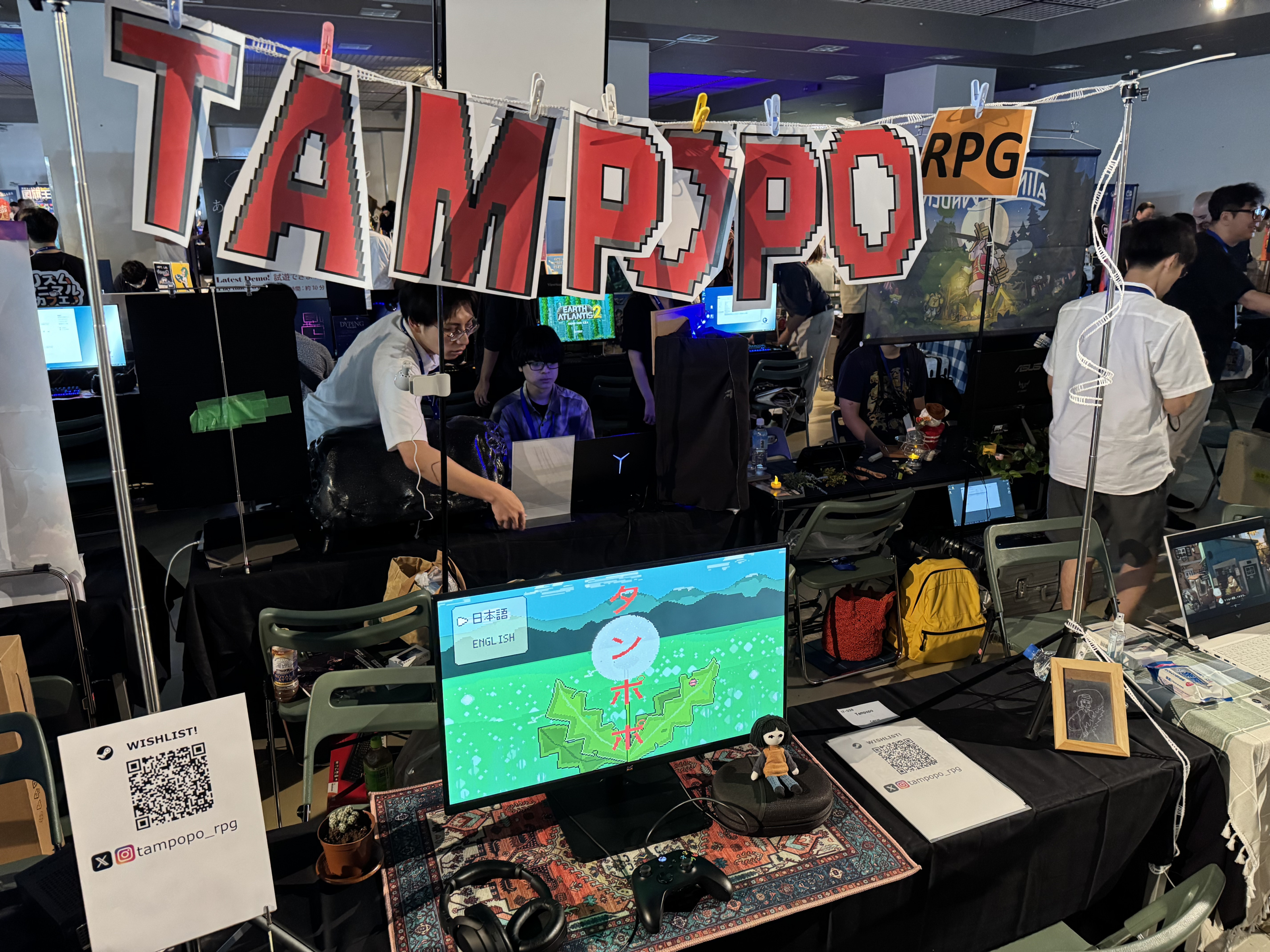
Year 2024
Hyowon Im
| Home school: | Hongik University |
|---|---|
| Accepted: | Graphic Design |
| Period attended: | September 2024 to January 2025 |
Since I was young, I have been curious about Japanese culture and interested in Japanese art. I was particularly interested in animation, and while watching Tamabi's graduation work, I thought that I wanted to learn within the curriculum where I could create works like these.
Classes taken in other places in Japan, not in the space where I have lived, were able to see art in various directions resulting from cultural differences. I am confident that art with styles that I have not encountered before in other cultural environments will give me new experiences, and this will inspire me in my works. And the works of students in the same class was also unique and creative, so I was able to receive a lot of inspiration. In addition, all professors gave me kind and active feedback, and I was very grateful that they were deeply interested in my works.
And what I want to say to those who come as exchange program students afterwards was that I had more difficulties communicating in Japanese than I thought, so I thought it would be better to study Japanese more to learn more. So, if you can communicate actively by Japanese, I think it is a period where you can get a lot of things.
I recommend you have new experiences and learnings in Tamabi!
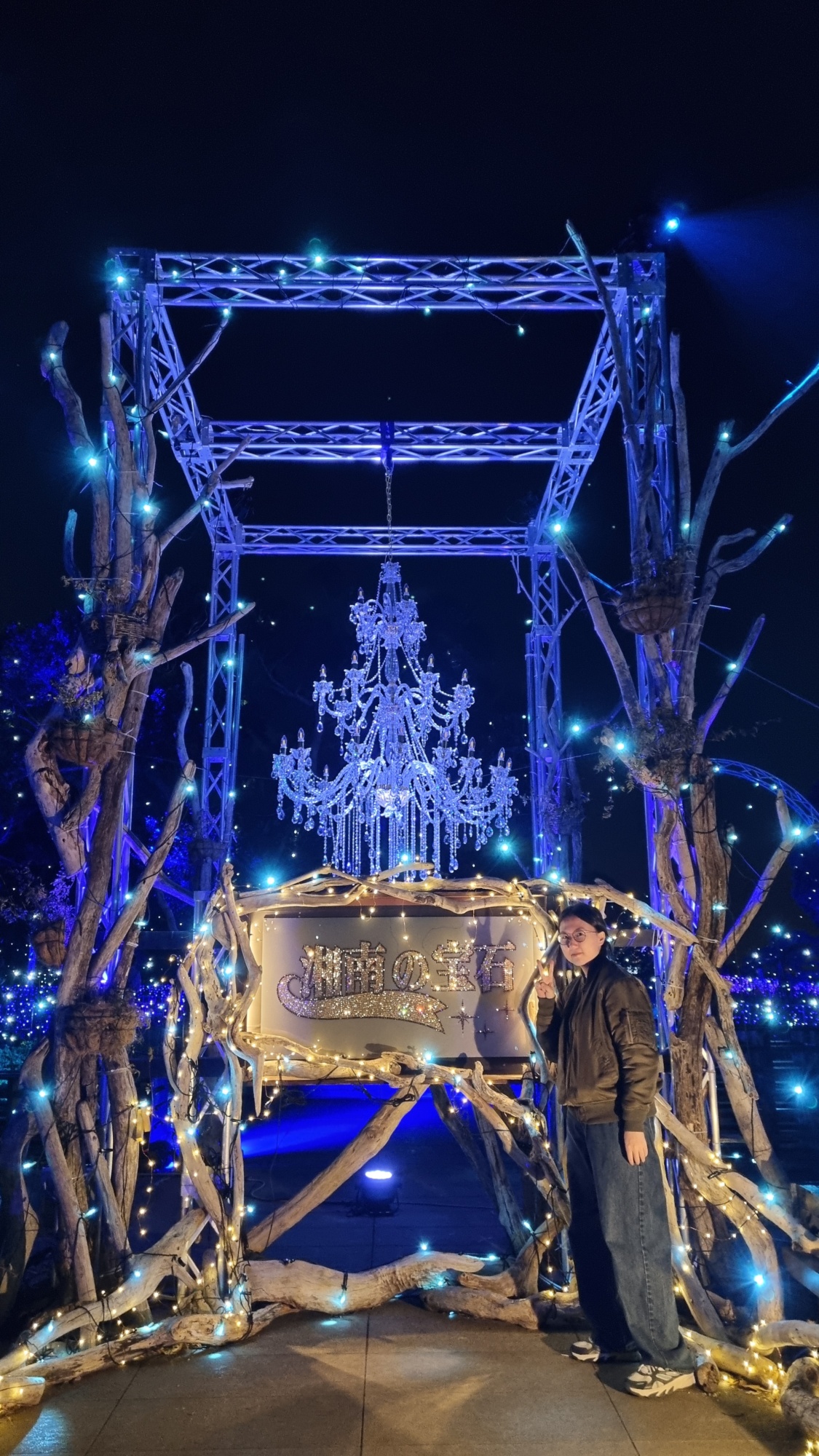
Xuejun Lin
| Home school: | Central Academy of Fine Arts |
|---|---|
| Accepted: | Graphic Design |
| Period attended: | September 2024 to January 2025 |
My time studying at Tamabi has been unforgettable. One of the first things that left a lasting impression on me was the natural environment and architecture of the entire campus. Although I occasionally found myself complaining, “This hill is way too steep while climbing up and down“, the beautiful scenery and stunning buildings still made a profound impact on me.
As someone who has always admired Japanese design, anime, and culture, I had long heard of Tamabi’s reputation. In fact, I had planned to apply to this university quite some time ago, but due to the pandemic, my plans were put on hold. Having this opportunity now feels incredibly fortunate.
Moving on to my academic life, I am truly grateful to my professor, Mr. Saga, for giving me a great degree of creative freedom. Despite my less-than-fluent Japanese, he showed immense patience and encouraged me to express my thoughts about my work as much as possible. I am deeply thankful for that. In class, I had the opportunity to see how friends from different countries and backgrounds approached graphic design. This dynamic exchange of ideas was truly inspiring. Additionally, the facilities in the Graphic Design Department are excellent, making it possible to complete most printing processes right on campus. This convenience was invaluable to me. I often used the cutting machine, and every time I watched it slice paper into perfect edges, I couldn’t help but feel a sense of satisfaction.
I’m also grateful to the teachers and friends at the International Exchange Center. It’s natural to feel a bit anxious before arriving in a new country, but the teacher was always patient in answering any questions I had and were well-prepared for unexpected situations, such as illness. I hope more people can come here with peace of mind and enjoy their time to the fullest.
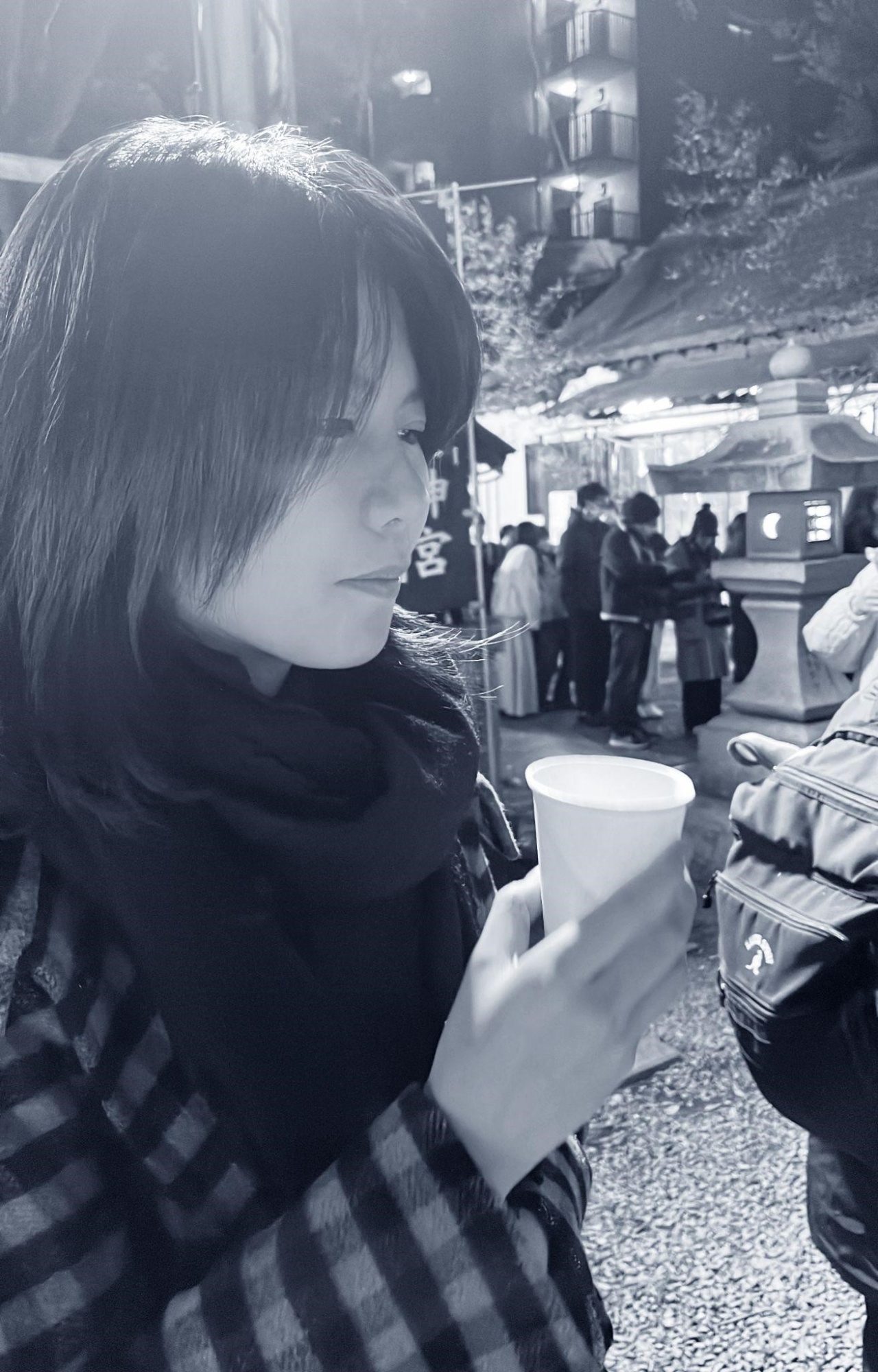
Yuxuan Xia
| Home school: | Chelsea College of Arts |
|---|---|
| Accepted: | Textile Design |
| Period attended: | September 2024 to January 2025 |
The six months at Tama Art University felt like a high school military training camp, fulfilling yet undeniably exhausting. Stumbling through emotionless Japanese presentations, dealing with tangled strings that should have been tied before drying, and realizing that flat shoes are the best choice for climbing hills on campus and sprinting to the station. I have said I regretted it a few times, but it was mostly just talk. Still, I would go through it again. Some moments and experiences are best left frozen in the past.
Hachioji is actually a pretty livable area, covering most daily needs. Wandering around on days without classes, feeling the sunlight on my face, could be quite pleasant. The Asian grocery store at the top of a flight of stairs was half supermarket, half restaurant. In the same building, there was a McDonald's selling hot fries and a coffee bean shop selling white peach sparkling wine. A single butterfly orchid stuck in a wine bottle cost 800 yen. The matcha pineapple bun was the worst bread I've ever had, and the bun shop only stocked Zhenjiang vinegar. Every month, new stores appeared at the station, selling local specialties from other regions. After a thrilling round of Avalon, I finally got to try the ice cream cake I had missed before. The candy apples from Daikanyama were so sweet that after one bite, I had to lock them up in the fridge.
In Tokyo, I met many kind and warm-hearted classmates and teachers, met some people I will miss after that. I went on a few blissful trips with old friends. The scarf selection in Umeda is much better than at Keio, I must go back next time and take my chubby friend on a roller coaster. After years of chasing snow, I finally saw it in Nagano, only to find out a month later that someone I wanted to run into had also checked in at the same forest. The two shop owners at the same morning market had completely opposite personalities, but luckily, I managed to capture fireworks from both angles in my photo album.
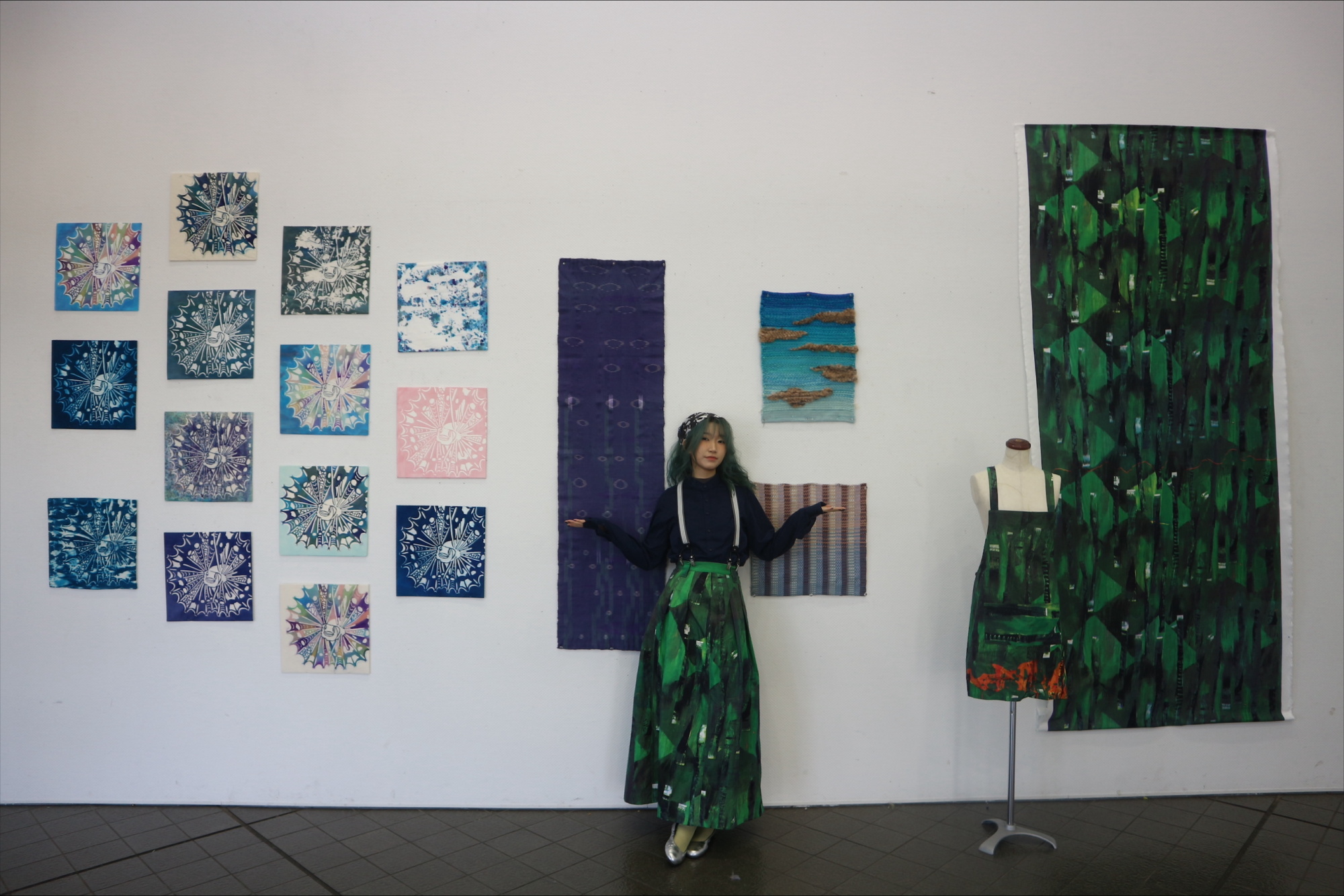
Maia Elisabeth McLaren
| Home school: | Glasgow School of Art |
|---|---|
| Accepted: | Textile Design |
| Period attended: | September 2024 to January 2025 |
I wanted to come to Tambi because I wanted to learn more about Japanese culture and experience something different. Within my course at Tambi they offer lots of different dying classes which I don’t get at my home university. The difference between studying in Glasgow and Japan is the independence. At Glasgow School of Art we get given a brief and a deadline and its up to the student to decide when to come in, whereas, Tamabi have a registration daily and each class is taught by a teacher. Adjusting to this was strange however it motived me to get work done and also offered additional daily support.
From my own experience I think that there could be more of an international translation. Only speaking English I found the Japanese very hard and made learning challenging. I thought that the Textile Design department was amazing and the staff were so helpful. Again I think there should be more than one member of staff that can speak English. I also felt the relationship between myself and other students was hard. I would have liked more events at the start of the year within the classes so that we can all get to know each other.
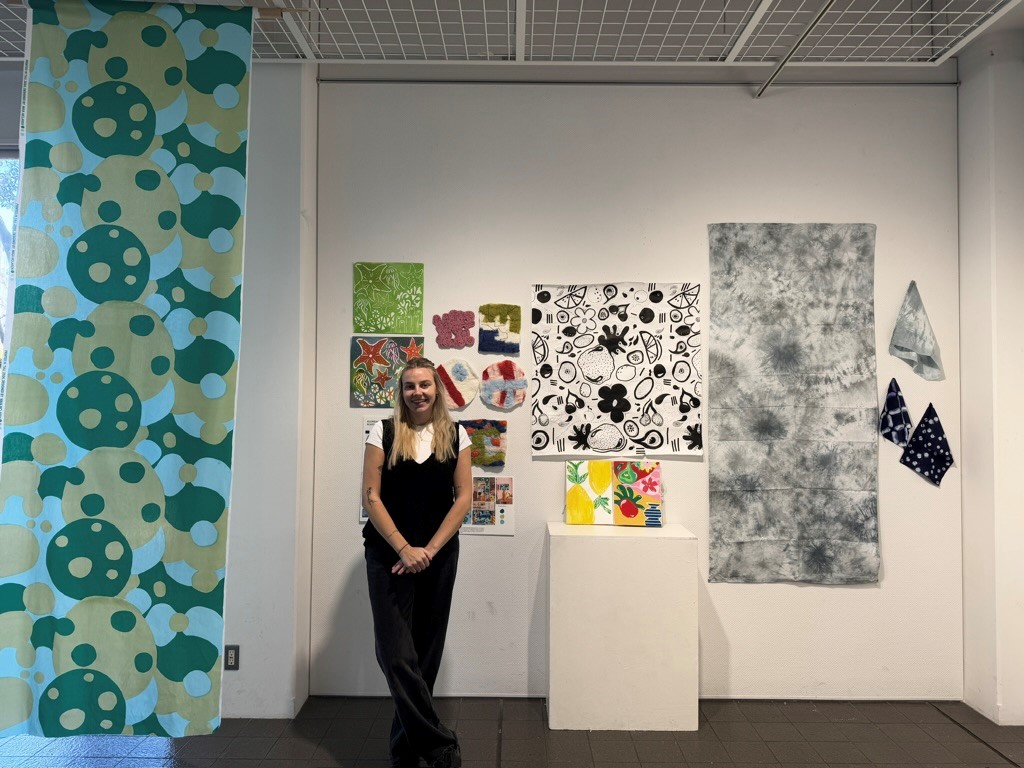
Youngmin Na
| Home school: | Hongik University |
|---|---|
| Accepted: | Information Design - Art and Media Course |
| Period attended: | September 2024 to January 2025 |
The reason why I chose to study in Japan and at Tama Art University is the physical distance and cultural proximity between Korea and Japan. Also, there was linguistic advantage because I have been studying Japanese for several years. What I liked about studying at Tama Art University is that they give students a lot of freedom to work, but they also provide detailed feedback. I thought this was a great way for the tamabi to help students create the work they wanted to create.
I also really enjoyed the program that was organized for us to go sightseeing in Tokyo once we arrived in Japan. There were other programs that I didn't get to participate in because they conflicted with my class schedule, but I'm sure they would have been fun.
During my semester of study at Tama Art University, I rarely felt uncomfortable. The staff of tamabi were very responsive to emails, so I had no problems communicating with them. Personally, I thought it would be fun to have a local ‘mate’ to help foreign exchange students adjust to life in Tamabi. The reason I thought of this was because when I visited the International Exchange Center, there were students sitting there who were interested in exchange students. Also, in terms of living conditions, I thought it would be nice to have a dormitory for male students as well. If that’s not possible, I think it would be better to give students traffic pass.
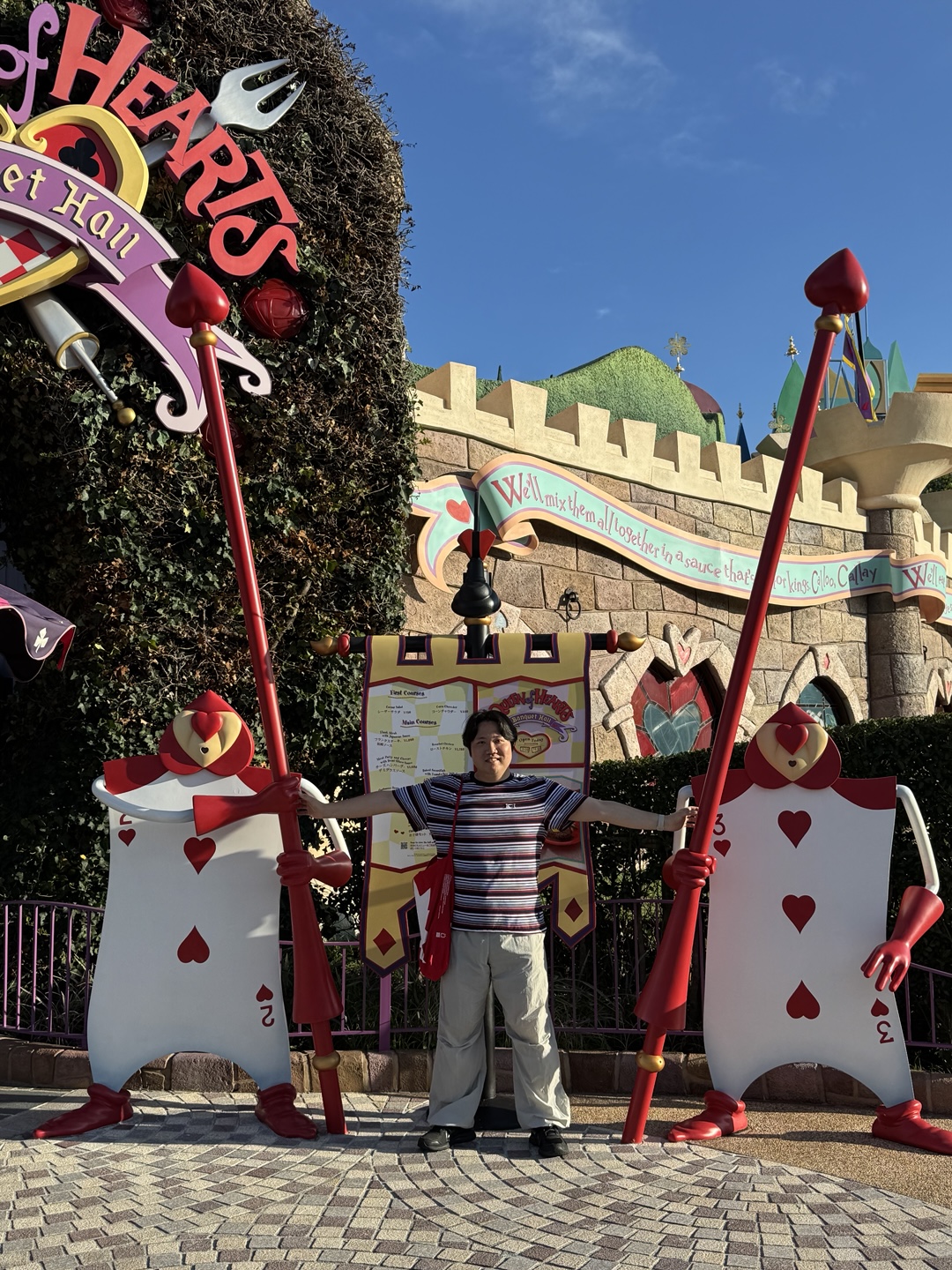
Leon Eckard
| Home school: | Berlin University of the Arts |
|---|---|
| Accepted: | Information Design - Art and Media Course |
| Period attended: | September 2024 to January 2025 |
From the moment I applied to the University of Berlin, I was eager to explore study exchange opportunities. When I learned about the TAMA exchange program, it immediately caught my interest. While I had never been particularly drawn to Japan before, I had always been fascinated by the Japanese language and culture in a more abstract way. My curiosity grew as I listened to Japanese bands and composers, and I became increasingly intrigued by the country’s artistic and musical landscape.
During my two and a half years of studying in Berlin, I deepened my knowledge of Japan and East Asia through friends and academic discussions. Over time, I developed a strong interest in Japan’s media art, ambient music, and experimental electronic scene—fields that resonated with my own artistic practice. At some point, I realized that experiencing this creative environment firsthand was essential for me.
Upon arriving in Japan, I noticed not only the obvious cultural differences but also certain disparities in academia and daily life. Of course, the food is amazing, the people are incredibly polite, and the infrastructure of both the university and the country as a whole function smoothly—something that is not always a given in Germany. While German universities have two semesters per year, Japanese universities have four periods, which allows for more variety in studies. My classmates were a bit shy and more difficult to approach, partly due to the language barrier. In general, I highly recommend studying as much Japanese as possible. Although I couldn’t bring my skills to a conversational level, they helped me in many situations. It was definitely enough for "Japenglish" conversations in izakayas.
My professor, Akihiro Kubota, was very kind and supportive, translating students’ work for me and integrating me into the course. He also provided valuable and inspiring feedback on my own work, which I presented at the semester’s final exhibition. Overall, everything was very convenient, and I had plenty of time outside of classes to explore life in Japan. I had the chance to connect with the local music scene, attend numerous concerts and exhibitions, and build invaluable contacts and friendships. I highly recommend living in a shared house to connect with people outside the university.
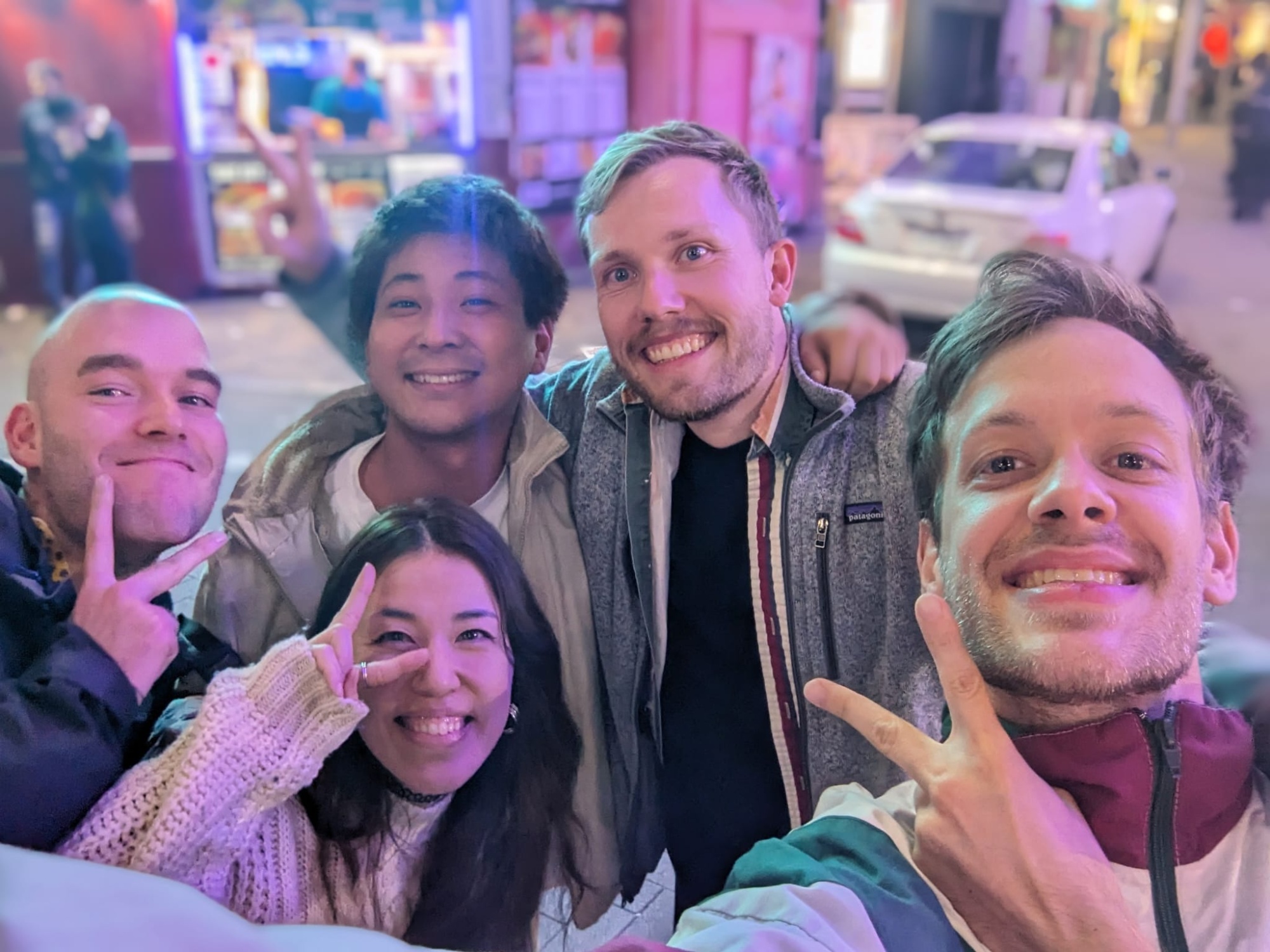
BingJhen Chang
| Home school: | Taipei National University of the Arts |
|---|---|
| Accepted: | Information Design - Art and Media Course |
| Period attended: | September 2024 to January 2025 |
Many well-known artists and designers have graduated from Tama Art University. When I saw that Tama Art University was on the list of schools that accept exchange students from my university, I spent some time browsing the school's and the Media Art Course’s websites. The students’ artworks showcase great variety, which was the main reason I chose Tama Art University.
I took classes in both the second year of the undergraduate program and the graduate school. The course arrangement was quite new to me. The second year of the Media Art Course is divided into four parts, and students choose one class from each part. Each part lasts between one and a half to two and a half months. These classes allow students to explore different types of media art and gain preliminary practice in each. Since the classes do not overlap, students can fully concentrate on each topic and project.
Another new concept to me was JOSHU (助手). There are many JOSHU in the office who provide advice on students’ artworks, such as guidance on materials and technical skills. Each JOSHU has different expertise based on their own artistic experience.
The facilities at Tama Art University are excellent. For the Media Art Course, there are high-quality printers and a small workshop space. The library not only has a beautiful design but also offers a wide selection of great books. The International Exchange Center provided us with significant support before and after we arrived in Japan. It was reassuring to have their assistance during the initial stage of our school visits. Classmates, professors, and teachers were all very kind. The professors and teachers gave valuable feedback to help improve everyone’s artwork and were always willing to offer help when needed.
The environment around the school and the dorm is peaceful, which I really liked. Being far from the busy areas of Tokyo, I was able to focus more on challenging myself rather than constantly comparing myself to other artists and feeling anxious.
Six months is really a short period to explore a new place. I think having basic Japanese skills can save time and energy in daily life, such as grocery shopping, allowing students to focus more on what truly interests them. I had a fantastic time at Tama Art University. I tried new types of artwork that I had never done before and met many great people.
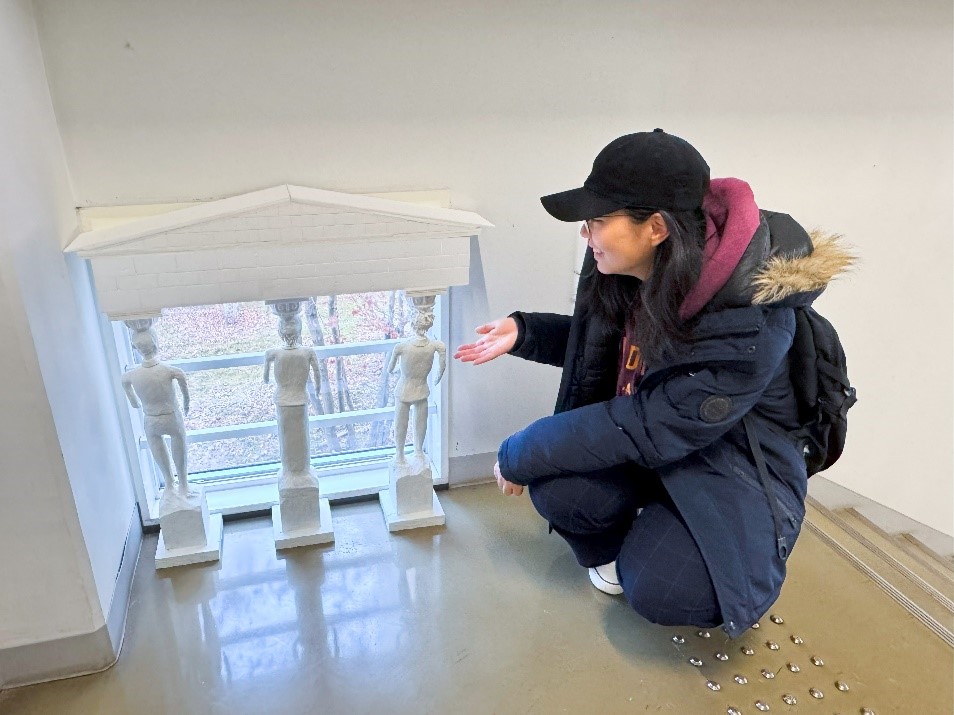
Naglis Kranauskas
| Home school: | Gerrit Rietveld Academie |
|---|---|
| Accepted: | Architecture and Environmental Design |
| Period attended: | September 2024 to January 2025 |
Between the green suburban fields, you will find the concrete buildings of Tama Art University. Campus shaped like a park, turtles in the pond and more sky than usual. Craft and pretty things for the sake of pretty things and craft.
Depending on the faculty and class some teachers do and some don’t speak English. So best case scenario you will have a lot of special attention in English just for you.
Many words will get lost in translation, which gives freedom to for the student to take as much as he has energy to take, to attend what he wants and to not do anything much if he wishes. For me, it was a time to spend a lot of time figuring out myself.
And the staff of Environmental Design Department are even nicer than the regular amount of Japanese niceness. Thank you so much.
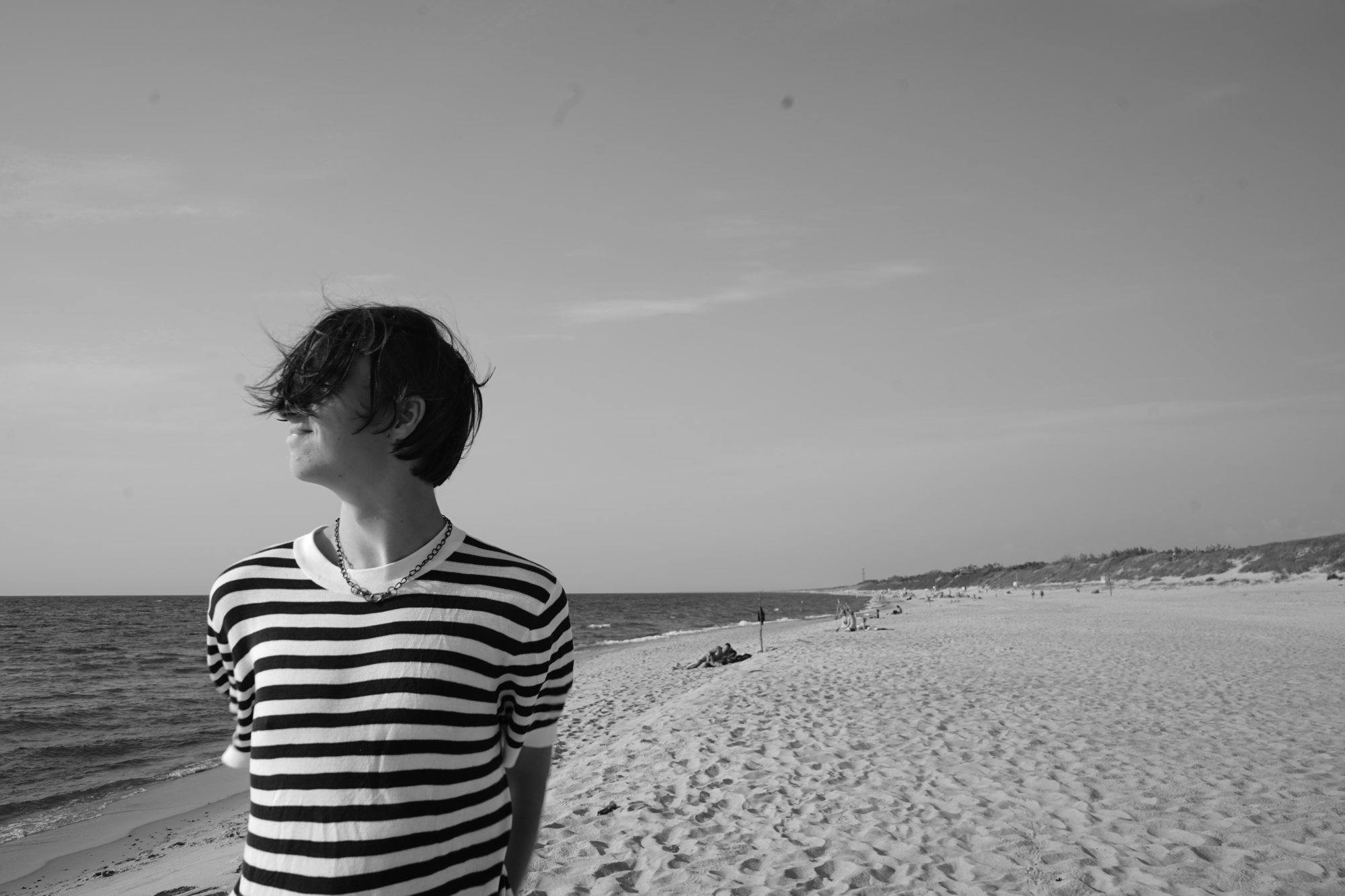
Tipanya Somjit
| Home school: | Silpakorn University |
|---|---|
| Accepted: | Sculpture |
| Period attended: | September 2024 to January 2025 |
This is my first time traveling abroad and living alone. Coming to Japan is a great choice because it is known for its discipline and safety. I feel very safe and comfortable living in Japan.
In terms of the learning system, it is quite similar, but Tamabi has a more conducive learning atmosphere, due to the cool climate and the friendliness of the students and teachers. I was able to do work that I wanted to experiment with and received good support from the teachers.
Because I can't speak Japanese and I'm not good at English. But Tamabi has courses taught in English and the teachers and friends helped me a lot. This trip to Japan was a great experience in my life.
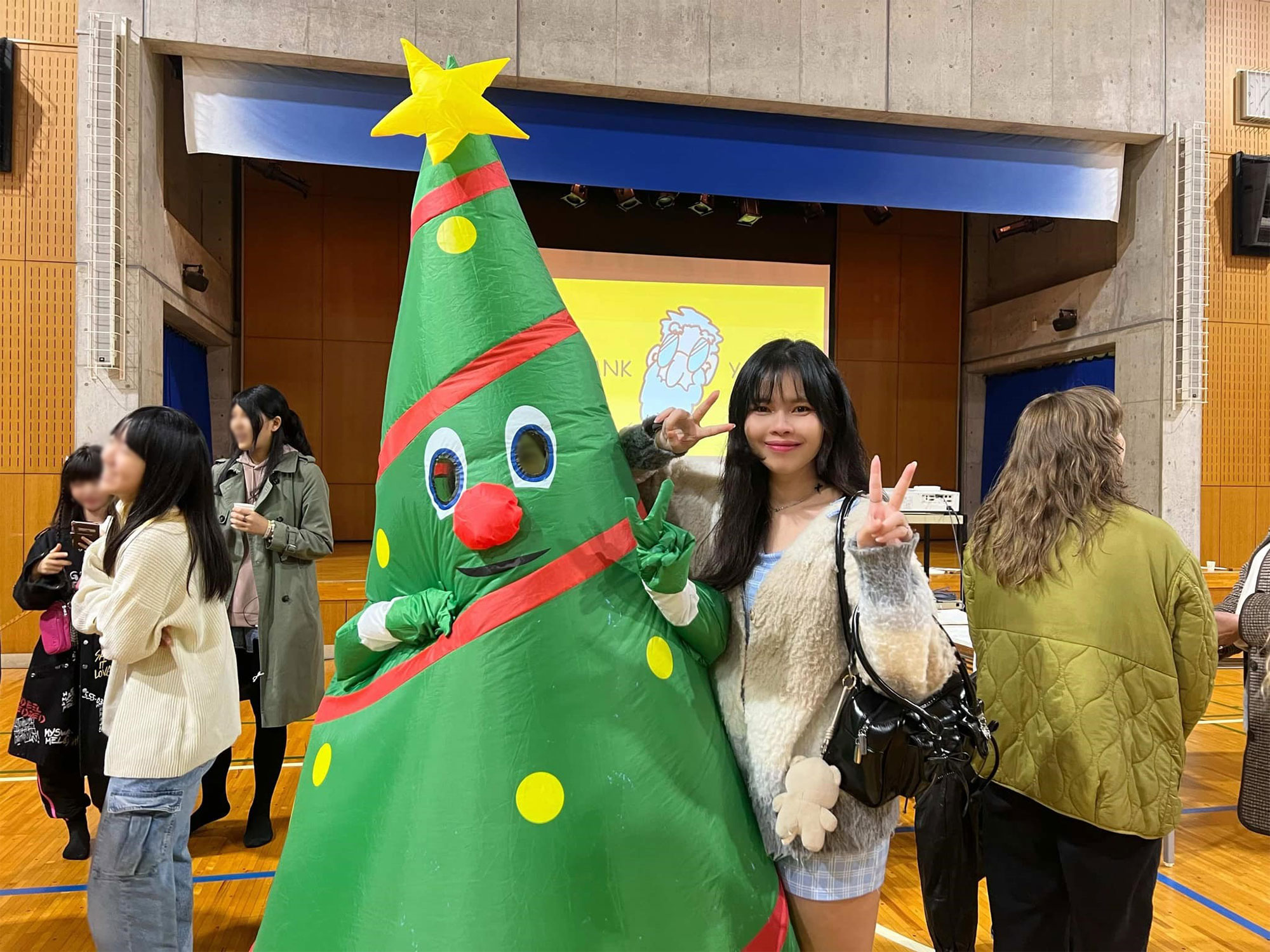
Pierre Deshais
| Home school: | École nationale supérieure des arts décoratifs |
|---|---|
| Accepted: | Japanese painting |
| Period attended: | September 2024 to January 2025 |
I applied to Tama Art University to change my educational environment and to discover the practice of Japanese painting, which I could only learn in this context. Also, I had wanted to go to Japan for a while to live there and better understand the culture and language.
In Paris, my school is squeezed between buildings in a dense city, but at Tama Art University, I discovered a vast space surrounded by nature. I truly enjoyed walking around the campus between brushstrokes on my canvas.
The support from the professors and the entire administration made me forget that I was on the other side of the world. I quickly felt at ease and never had the impression of being lost. I could see in the way the professors taught that they were driven by a deep passion for their work and what they were teaching. All the students at the school welcomed me warmly, especially the people in my class, whose kindness I will never forget.
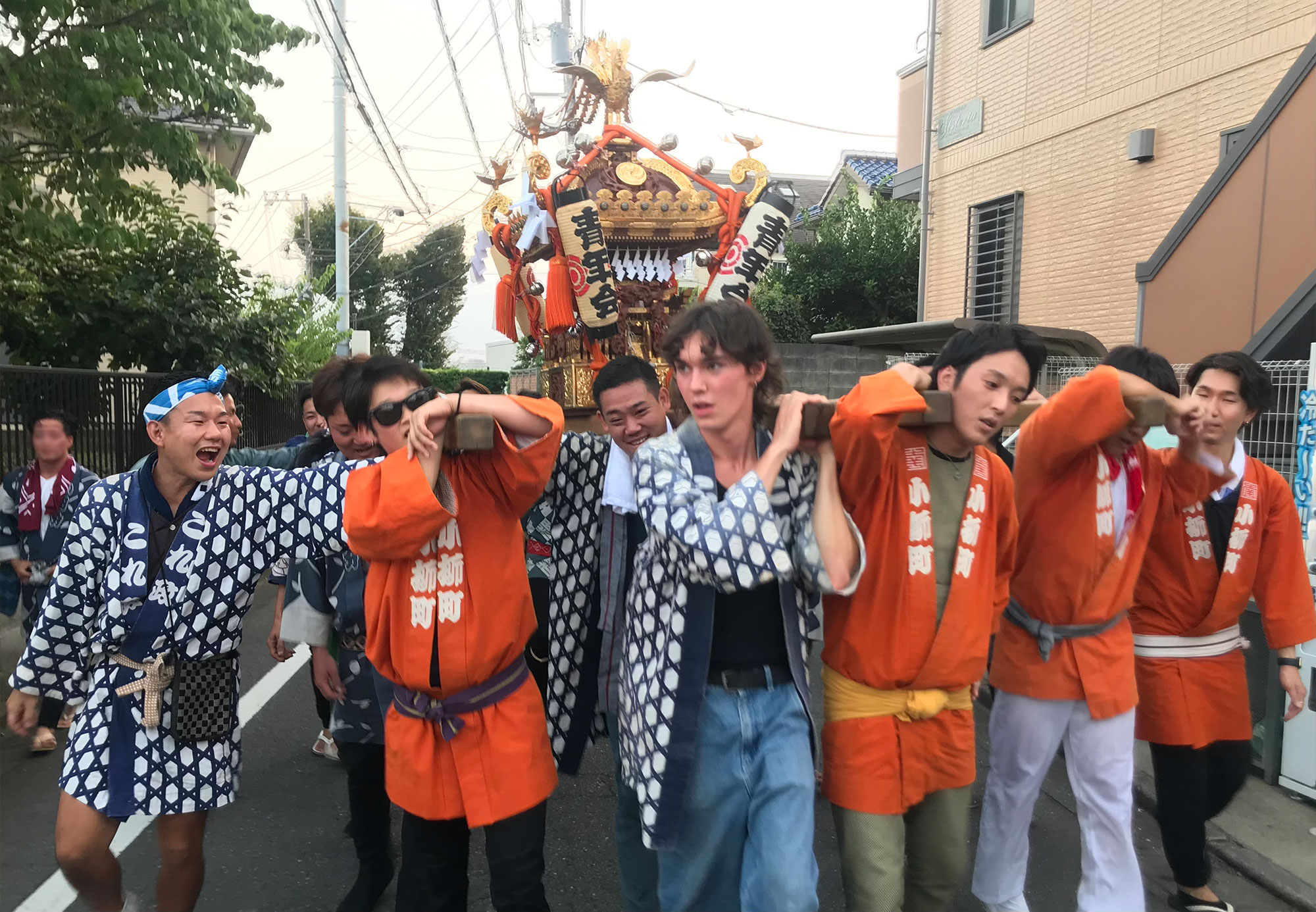
Cemre Bayatlier
| Home school: | Berlin University of the Arts |
|---|---|
| Accepted: | Information Design - Art and Media Course |
| Period attended: | April 2024 to August 2024 |
The reason I chose Tamabi University for my exchange semester was its reputation in the field of art and my passion for Japanese culture and design. I also wanted to explore a remote country with its unique culture. The combination of traditional and modern elements in Japan’s art and technology was a significant pull for me.
One notable difference between Tamabi and my home university is the approach to education. At my home institution, the focus is largely on contextual projects and conceptual thinking. In contrast, Tamabi emphasizes technical skills, practice and aesthetic precision. This shift allowed me to refine my practical abilities and develop a deeper appreciation for practical work.
The facilities at Tamabi, particularly in the Information Design department, are exceptional. The campus environment is supportive, and the International Exchange Section provided excellent guidance, helping with everything from academic advice to daily life challenges. The professors were approachable and always ready to offer constructive feedback, which was crucial for my development.
My exchange semester at Tamabi was an experience that expanded my cultural horizons. The opportunity to get to know Japanese culture and learn from leading professionals in the field was exciting. The skills, artwork references and insights I gained deeply impacted me and will continue to shape my future work. I am deeply grateful to the staff and students at Tamabi for their kindness and support.
For future applicants, I highly recommend learning some basic Japanese before coming. While many people at the university speak English, having some knowledge of Japanese will significantly enhance your experience and help you connect better with local students. Embrace the cultural differences with curiosity; this will make your time at Tamabi truly immersive and rewarding. Also, be proactive in seeking guidance and making connections. This exchange program is not just about academic growth but also about personal development and creating lifelong memories and friendships. I highly recommend this program to any student wanting to expand their artistic and cultural perspectives. If you are considering an exchange program and are ready for a bit of a sweet language and cultural challenge, Tamabi could be the perfect choice!
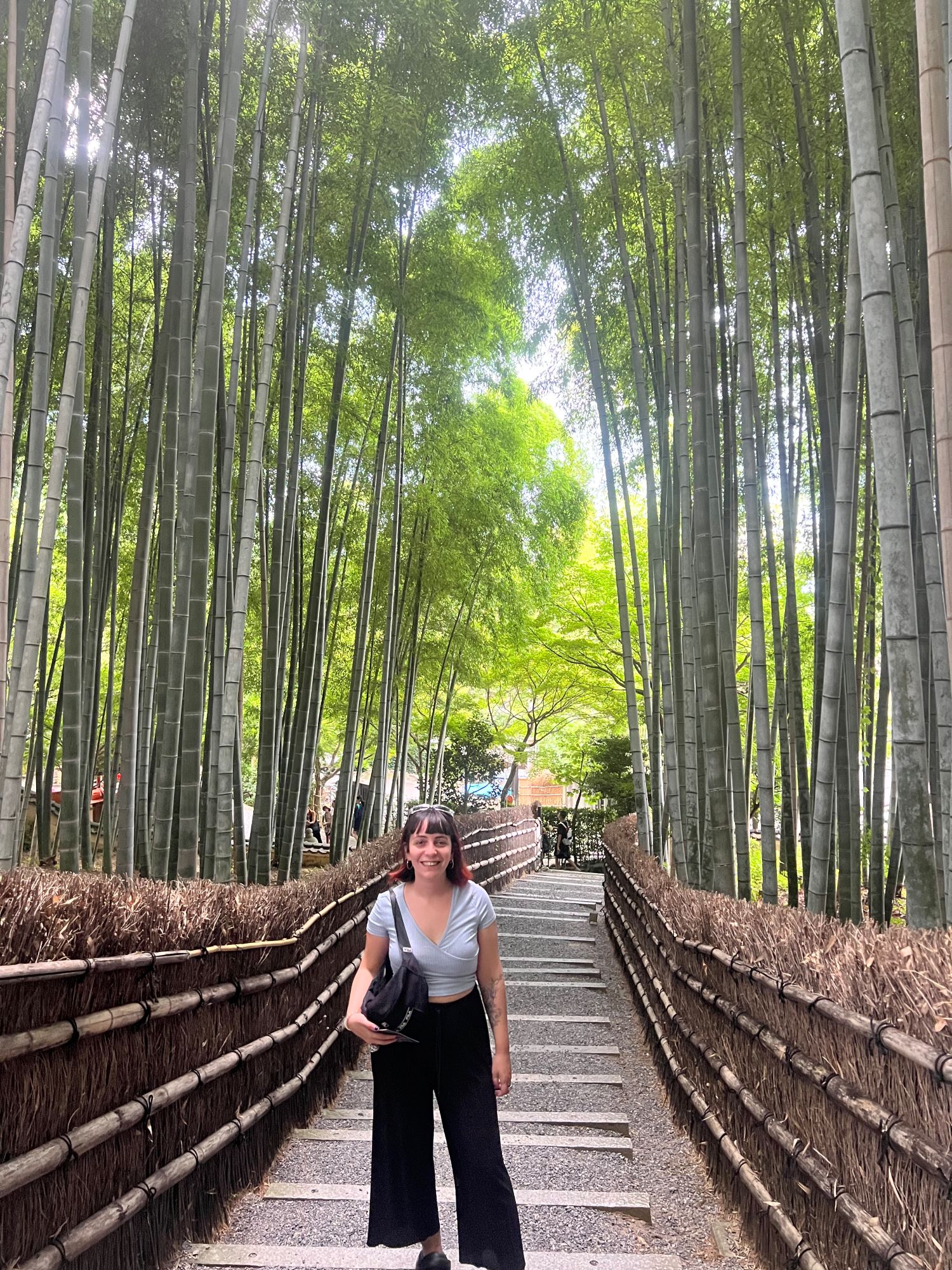
Jinchi Hu
| Home school: | Berlin University of the Arts |
|---|---|
| Accepted: | Sculpture |
| Period attended: | April 2024 to August 2024 |
After many years in Germany, I wanted to get to know a different East Asian culture again. My curiosity about Professor Kasahara's work also played a significant role in my decision to choose Tama Art University (Tamabi) in Japan. The opportunity to experience Japanese culture firsthand was incredibly appealing. Japan's rich artistic heritage and Tamabi's reputation for fostering creativity and innovation made it an ideal choice. Life in Japan, and specifically at Tamabi, offers numerous advantages. The food on campus is exceptionally good, which has been a pleasant surprise. The teachers are not only knowledgeable but also fun and engaging, making the learning environment enjoyable and stimulating. The curriculum is designed to promote creative thinking and artistic exploration, aligning well with my academic and personal interests.
My advice would be to live in an olive dormitory so that you can get a fuller understanding of all aspects of Japan in such a short period of time.
Jack Van Leeuwen
| Home school: | Gerrit Rietveld Academie |
|---|---|
| Accepted: | Ceramic, Glass, and Metal Works – Glass course |
| Period attended: | April 2024 to August 2024 |
Choosing to study in Japan and at Tamabi all happened very quickly and unexpectedly for me! However, when my tutor at my home institute gave me the option to study in Japan, followed by a recommendation one of Japanese classmates who studied glass at Tamabi in previous years, I was sold. I love craft and knew that the Japanese have such a wonderful relationship to craft putting so much attention into detail and passion for the materials they work with. After talking with my classmate about Tamabi I understood how incredible the facilities where it became and easy decision that Japan, Tamabi was the best choice for me. Along with mountains, architecture and culture of Japan, that were the cherry on top of the cake.
In terms of differences between my institution and Tamabi, I would probably say the relationship between each department in my institution it’s easy to book workshops and work with other materials and use other workshop spaces. This also allows students from other department to interact with each other creating a new connection with other students. However, I say this because I wanted to use all the facilities from every department as the facilities in Tamabi are exceptional! At least in comparison to the machinery, tools and equipment in the glass department are astonishing. Its organized everything in good condition and the student cooperate to make it stay like this.
My experience of life at Tamabi was great, I made great friends both international and Japanese, the food wow, the food is fresh cheap and delicious. The education is a lot so if you love what you study like me, you’ll be fine, but be prepared to work hard and often long hours. This was at least my experience in the glass department, but from this I have learnt so much! The teachers are incredibly kind and helpful and extremely skilled, every one of my teacher’s taught my valuable lessons at my time at Tamabi and I’m forever grateful for them and this experience.
Advice, I would say give it everything you have 6 months is shorter than you think so make the most of it. I saw someone say make the most of the library! I would agree because I really didn’t use it enough, which I think is a waste. Other than that, eat a lot talk to whoever is open to talk to you and give yourself some time to travel weather that be before after or during your studies. Japan is beautiful!
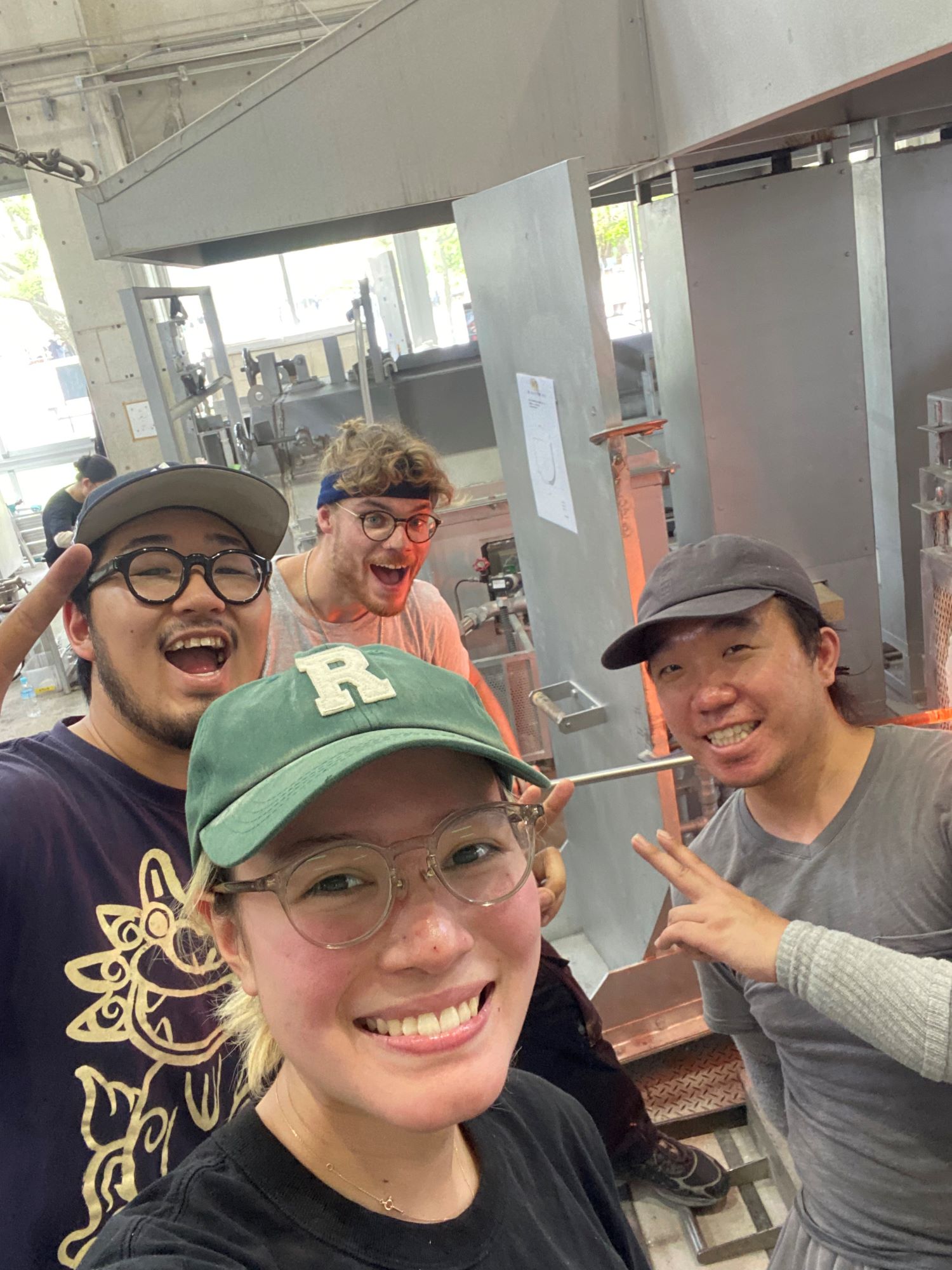
Selin Göksu
| Home school: | University of Applied Arts |
|---|---|
| Accepted: | Ceramic, Glass, and Metal Works - Metal course |
| Period attended: | April 2024 to August 2024 |
In 2019, the 100th anniversary of Japan and Austria's friendship, I discovered a profound appreciation for Japanese culture. My involvement with “Japanual”, a film festival hosted annually by my friend Naomi's family, was pivotal. It introduced me to contemporary Japanese cinema, while traditional meals and drinks shared with the Kondo family deepened my cultural immersion.
The opportunity to spend my exchange semester in Tokyo was thrilling, as I was eager to immerse myself in Japanese culture, history, and craftsmanship. As an Industrial Design student trying to enhance my skills, I applied to the Metall, Glass, and Ceramics department at Tama Art University, focusing on copper.
My semester at Tama was divided between theoretical lectures in the mornings and practical workshops in the afternoons. I honed my skills in welding, bending, and Tsuiki, a traditional copper hammering technique. Despite the language barrier, with all workshop classes conducted in Japanese, the faculty's understanding and support allowed me to adapt through observation and practice.
The campus at Tama was impressive, with excellent facilities and beautiful green spaces. The CMTEL (Color, Materials, and Trends Exploration Laboratory) was particularly valuable, offering access to the latest materials and trends, supported by both domestic and international manufacturers. I particularly enjoyed spending time at the Hachioji Library, which was an inspiring place to study, which beauty didn’t stop to stun me.
For future students contemplating an exchange at Tamabi, I wholeheartedly recommend making the most of the university’s facilities, engaging in events, clubs, and workshops, and exploring Tokyo and beyond. This experience was one of the most enriching and transformative periods of my academic journey, and I am confident it will be equally impactful for many more exchange students.
My time here was unforgettable, and I am very grateful for it! Everything ran so smoothly, and knowing that I could rely on the International Office gave me an important sense of security. Thank you very much for the immense hospitality. I will always keep Tokyo and Tama Art University in my heart!
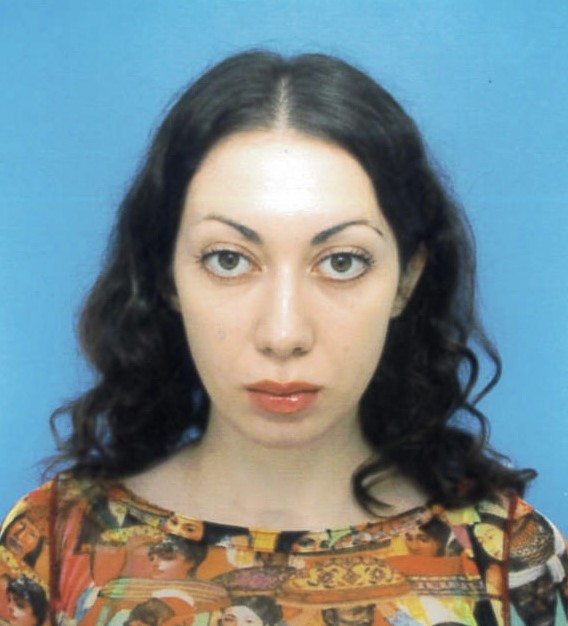
Sophia Elisabeth Ludwig
| Home school: | Berlin University of the Arts |
|---|---|
| Accepted: | Product Design |
| Period attended: | April 2024 to August 2024 |
Doing an exchange in Japan was my dream ever since I started studying and learnt that my home University has an exchange program with Tamabi. I wanted to experience Japanese culture, people, food and language as well as the craftsmanship and design in Japan.
Coming to Japan and living here for a few months has been an experience that I will never forget. I cannot even grasp how amazing this time here really was – I think it will settle in a bit later. Japan is a really friendly and convenient country to travel which makes arriving here easy. Japanese people are very friendly and eager to show foreigners their culture and skills, which is one of the great qualities of Japan.
I have to say: Learning as much Japanese as possible is something I would not only recommend but urge you to do. Try to study in courses with teachers or online classes, not only with a language app. Speaking just a little Japanese will make your experience so much more fun! Japanese people are not really good at speaking english and even with fellow young people it was sometimes nearly impossible to communicate aside from Japanese. It also opens up really valuable connections everywhere you travel or go, because Japanese people are extremely hospitable and always greatly appreciate speaking just a little bit Japanese with you.
Tamabi is a great University with an amazing campus. Nearly all departments are close together and you see a lot of students and have interaction with different departments and majors. Definitely try to peek into the other departments workshops too! They have amazing tools and workshops. I took a few workshops in my department and the CMTEL and had a lot of fun trying out new techniques and skills. My tip: Use the library as much as you can! It was one of my favourite places to just browse through the countless amazing books, not only related to Product Design.
In Product Design I was placed in the schedule of the 3rd year. Here at Tamabi the semester schedule was a bit different – we had four assignments which each lasted a few weeks. This made for great variety and new challenges within the semester. In Berlin, I usually have two to three projects which take a whole semester. A lot of focus was put on research and developing a design, whereas my University in Berlin is a bit more hands on from the beginning. I missed the Berlin approach at first but I tried to embrace the way that Tamabi teaches Product Design. The professors and staff are extremely skilled and put a lot of effort into the education of the students, had fun talking to fellow students and learning new words everyday, as well as seeing what they are working on.
Developing connections with Japanese students takes a bit of time, but they are usually just a bit shy and have to open up. Chinese and Korean students are a bit more open from the beginning and they will also become your great friends. Since I like doing sports and there are cool sports and activity clubs at tamabi, I joined the volleyball team. This has added so much more depth and fun to my week and my interactions with all the students. There is also a few clubs outside sports like manga, jazz, drums, and even a techno club, so be sure to check it out. This is a great way to get to know people outside your major.
In Product Design I learn a lot from fellow students and their approaches. I just tried to observe and copy a lot, and combine the knowledge from my Berlin University to adjust to Tamabi. This was a fun challenge and I think returning to my University in Berlin will make me realise how much I learned. I think in Tamabi and in Product Design I learned the most for broadening my research and methods for my design. It was great fun to talk to the professors, but could also be a bit frustrating because of the language barrier.
The fellow exchange students and me became great friends. We took a lot of little trips together, went out for dinner or drinks and enjoyed almost every lunch break together. Even though I think trying to make as much connection with Japanese and Asian people as possible, it is nice to befriend fellow exchange students you can relate to differently.
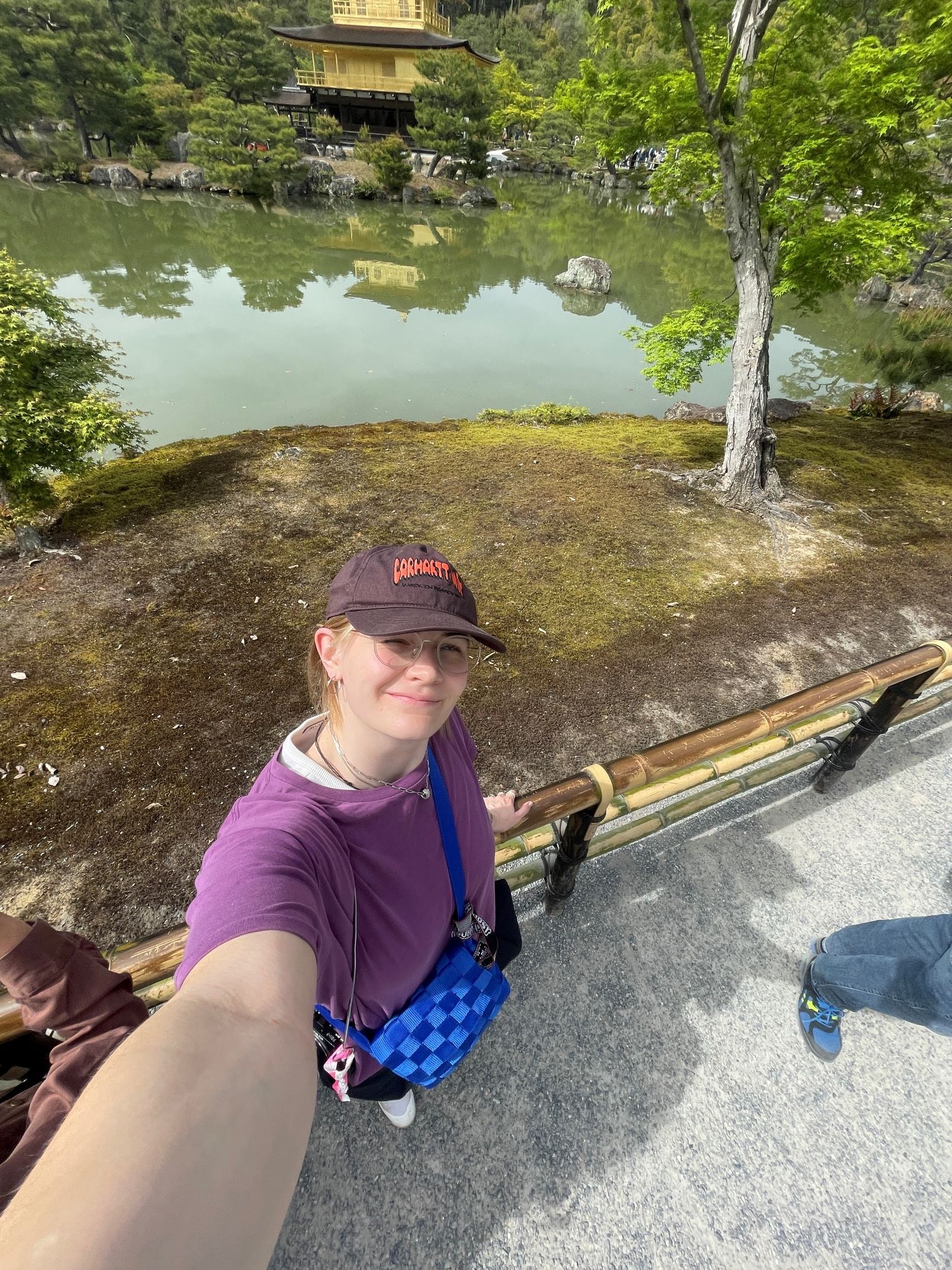
Yu-Chiao Wang
| Home school: | National Taiwan University of Arts |
|---|---|
| Accepted: | Graphic Design |
| Period attended: | April 2024 to August 2024 |
Tamabi students are full of creativity. I saw many distinct art styles here. For example, a classmate combines animation with acting, which I had never seen before. Teachers encourage students to experiment with different styles or materials, allowing students to freely express themselves. The uniqueness and freedom of students’ artworks is one of the reasons why I chose Tamabi and it was beyond my expectations. I got inspired all the time in Tamabi.
In my home school, we usually work as a team to create animation, whereas here in the department of graphic design, everyone makes animation on their own. Working alone allows students to show their own unique art style, but the workload might be heavier than working as a team.
Art and animation industries in Japan are much more prosperous than those in Taiwan. Sometimes the teacher invites well-known animation professionals to share their experiences in the industry with us. Animation companies also give talks to introduce themselves to students, which is rare in Taiwan. There are so many art museums, galleries, and exhibitions in Japan. As an art student, I not only get to see more artworks but also know more about the animation industry.
Overall, it could be challenging to study here, but you get to expand your horizons when immersing yourself in such a creative environment and a country where the creative industry thrives. Therefore, I highly recommend Tamabi to all aspiring artists.
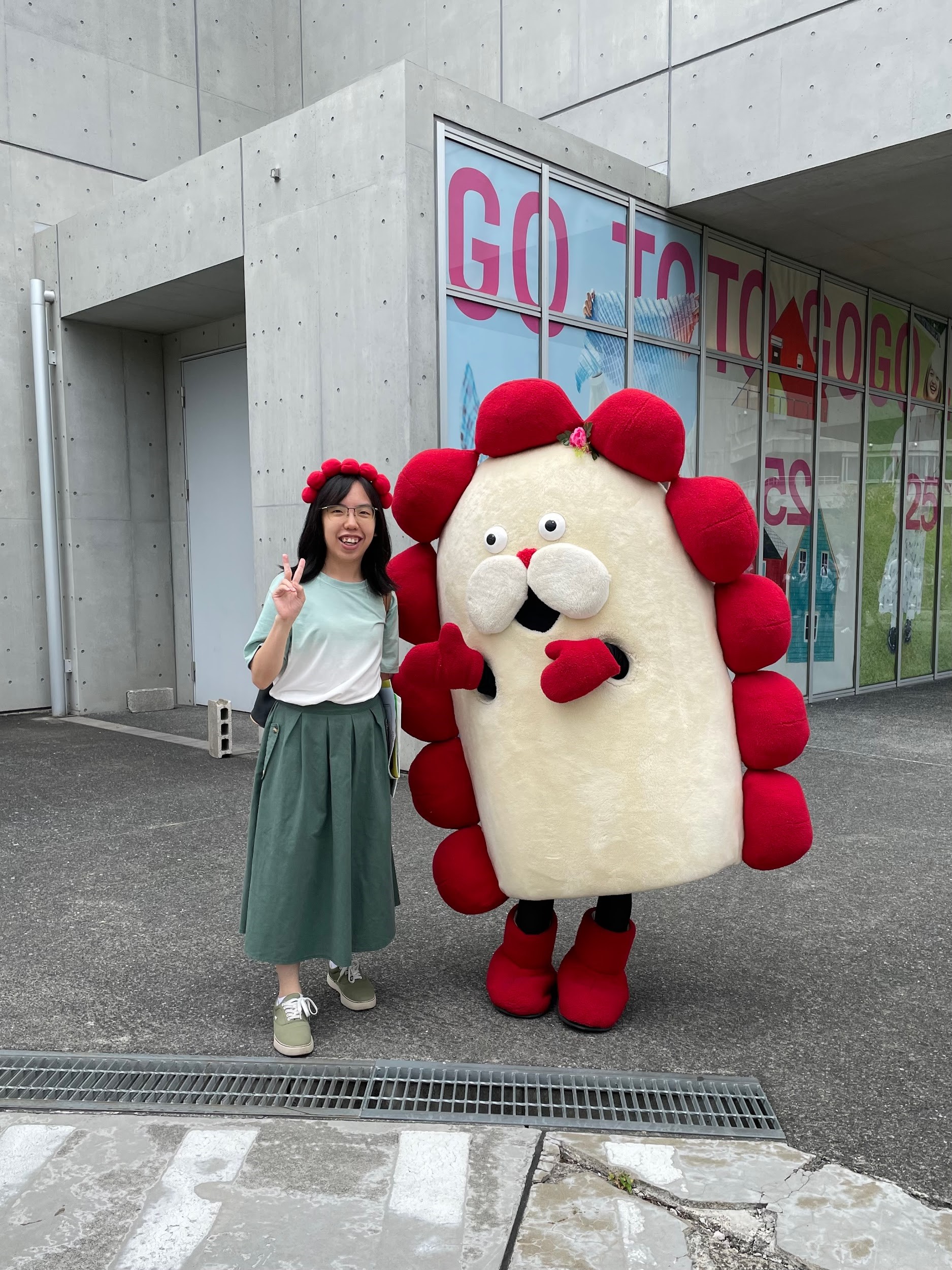
Year 2023
Annalena Mach
| Home school: | Berlin University of the Arts |
|---|---|
| Accepted: | Architecture and Environmental Design |
| Period attended: | April 2023 to August 2023 |
My interest in Japanese craftsmanship, its traditional values and relations not only to the past but also to the present, how modernity is interwoven and generally experiencing a culture that is so different from what I knew so far, made me come to Tokyo.
TAMA offers a great campus at Hachioji, walking around, seeing all the great workshops is quite impressive. The workshops for stone, wood or metal for example are not only big but seemed very well-equipped too. I would recommend everyone going there, trying to get in touch with people (if your Japanese is better than mine) maybe even working there or simply sitting there and observe how things are done. The library is a great place for working. The provided spaces for students of architecture in comparison are small and mainly made for „try works “with cardboard etc. which can be limiting for the process of model building.
All the professors are very nice, and the assistant was extremely friendly and very helpful. Setting up an individual schedule is quite complicated: the number of courses held in English is very limited and mainly for first- or second-year students. If you want to do something other, then what is recommended to you, it takes some extra effort. In general, doing things in another way than expected seems an abnormal thing to do. Understanding the structure of university and going through all the material, doing the translation and so on will take some time. All the offered courses and tasks, all the presentations and lectures are in Japanese. Since most of the classes at my home university in Berlin are held in English or at least offer the possibility of doing so, I underestimated the upcoming language barrier completely. But with the help of the assistance, I could visit the courses and do the projects I was interested in. I had the pleasure to visit two courses of a professor who didn’t hesitate putting extra efforts into the improvement of communication.
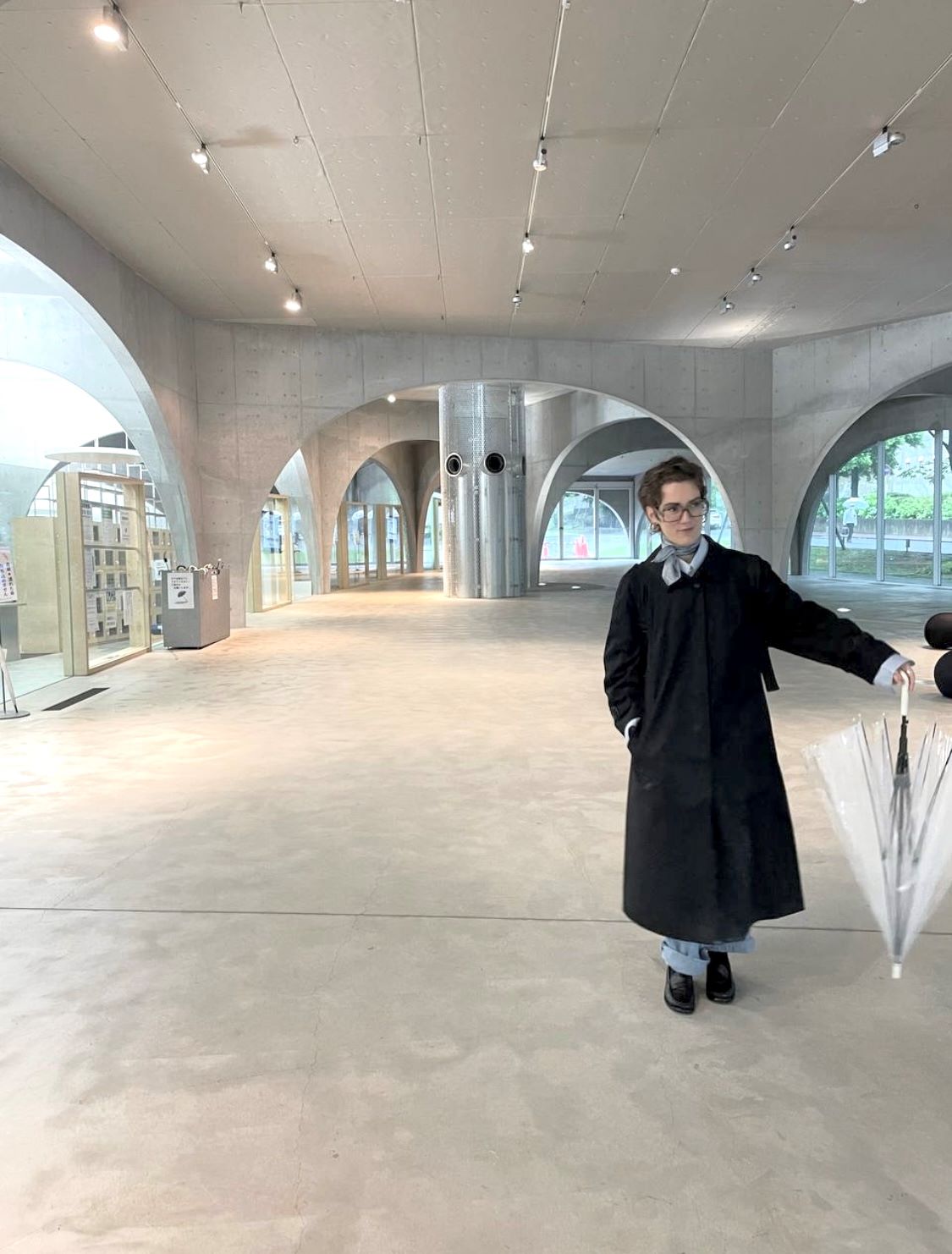
Kao Tse-yu Liu
| Home school: | National Taiwan University of Arts |
|---|---|
| Accepted: | Graphic Design |
| Period attended: | April 2023 to August 2023 |
I have been fascinated by Japanese culture and language, like animation, literature, music, traditional competitive card game “Karuta”, so when it came to choosing a country for my exchange program, I had a clear desire to go to Japan. I chose Tama Art University because its graphic design is highly reputable and offers students maximum creative freedom in their works. This made me aspire to be a part of Tama Art University, and I am very grateful for the opportunity Tamabi have given me.
One of the most significant differences between Tama Art University and my home institution is that assignments are typically carried out individually. This has allowed me to experience the process of independently completing projects, and the professors provide regular feedback and offer me numerous insightful ideas. I would like to express my heartfelt gratitude to Professor Saga Ichiro , Professor Kato Katsuya, and the assistants in the Graphic Design Department for providing me with valuable advice and assistance in completing my work.
In terms of daily life, the Olive Dorm provides a very comfortable environment, allowing me to smoothly enjoy independent living during this six-month period. I had enjoyed in the nature around the campus and dorm, also the kitchen for international students allows me to enjoy cooking and having dinner with friends. Through the life in dorm, I have had the opportunity to make friends from various countries.
Because I didn't encounter significant difficulties with the Japanese language, I didn't face big challenges in my studies at Tama Art University and life in Japan. Therefore, I believe that for those who wish to apply to Tama Art University, having a good command of Japanese can be beneficial for academic performance and life support.
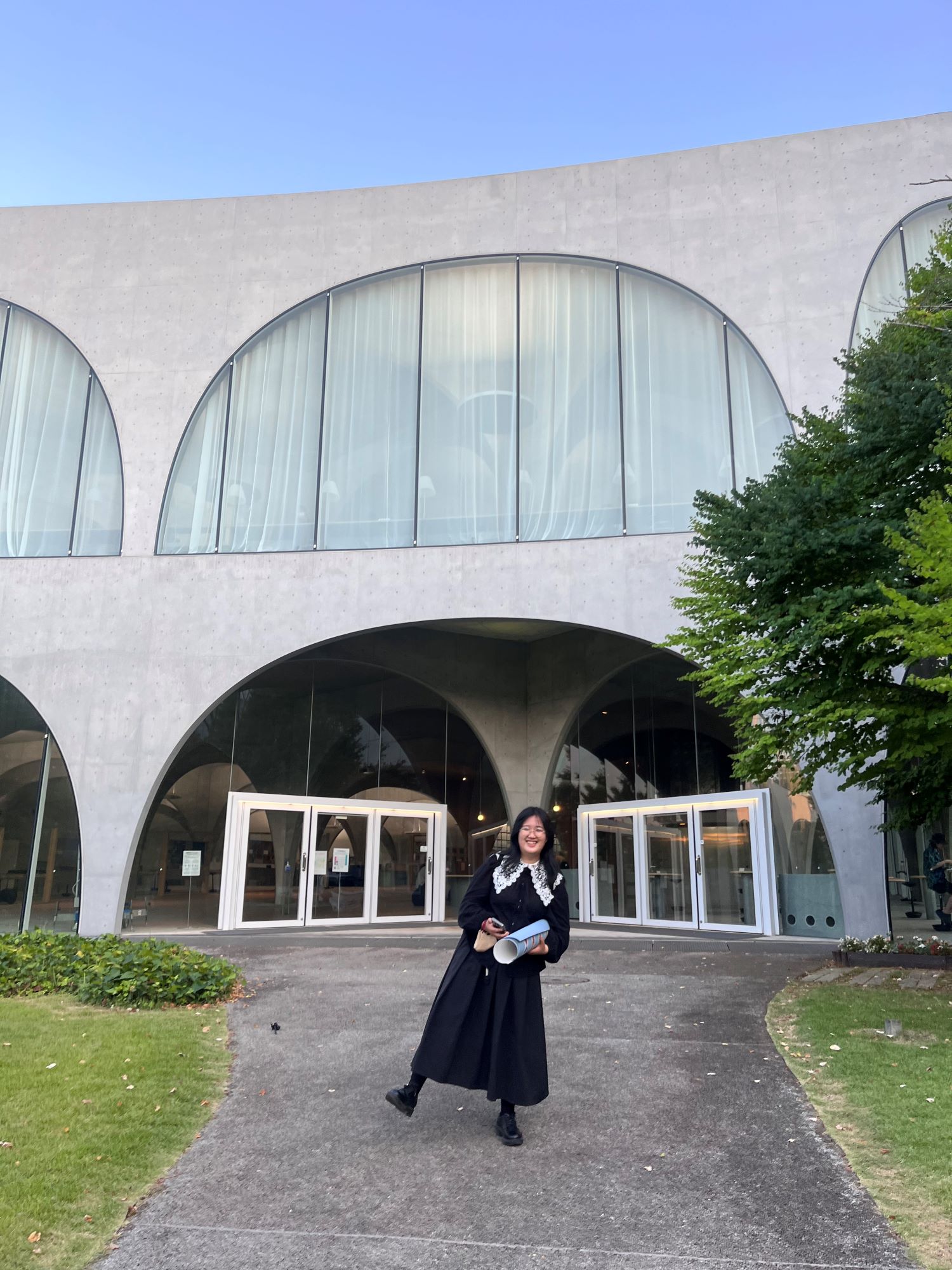
Helena Wassilowsky
| Home school: | Berlin University of the Arts |
|---|---|
| Accepted: | Product Design |
| Period attended: | April 2023 to August 2023 |
I chose Tamabi because I always wanted to go to Japan. I thought it would be a great opportunity and easy way to stay in Japan for a longer period. Furthermore, I was interested in Japanese student life and learning techniques.
University in Germany is freer not as school like as Japanese University, still I liked going on campus every day and hanging out with my classmates. Everybody spent so much time there and it was nice to be surrounded by people and sharing ideas and having conversations all the time.
The major difference would be that we sent really have a campus at UdK the different departments are all over the city. I enjoyed walking around with my friends and eating fruit from trees :) Also the teachers in product Design where very kind and I never felt scared to share my ideas and show my progress. It was such a comfortable environment, I felt safe and appreciated the kindness and thoughtfulness concerning my projects. I was impressed by how willing to help the other students where, especially with translation.
In general, I was really happy to study at a different university. I think it’s very important and opens your eyes. It may not what you expect it to be but you’ll still will learn a lot also about yourself.
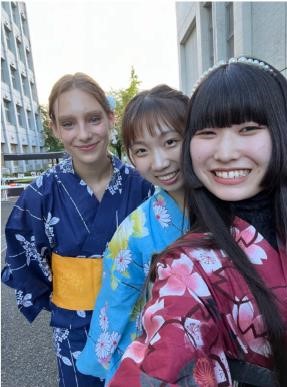
Jonna Maria Rutanen
| Home school: | Aalto University |
|---|---|
| Accepted: | Ceramic, Glass, and Metal Works - Glass course |
| Period attended: | April 2023 to August 2023 |
The reason why I chose Tamabi and Japan for exchange studies was my deep interest in Japanese culture and especially in craft traditions. Also, I wanted to have my exchange somewhere outside of Europe in order to experience completely different culture. In my home university it’s not possible to study for example Glass and as an individual subject, whereas in Tamabi it’s still possible. I think in general in Japan it is very important to master certain skill related to the selected material. I think at Aalto it is more focused on other things, like design and theory. I would advise future applicants to learn Japanese before coming to Tamabi or at least be aware that it is possible that the faculty at study departments do not speak English.
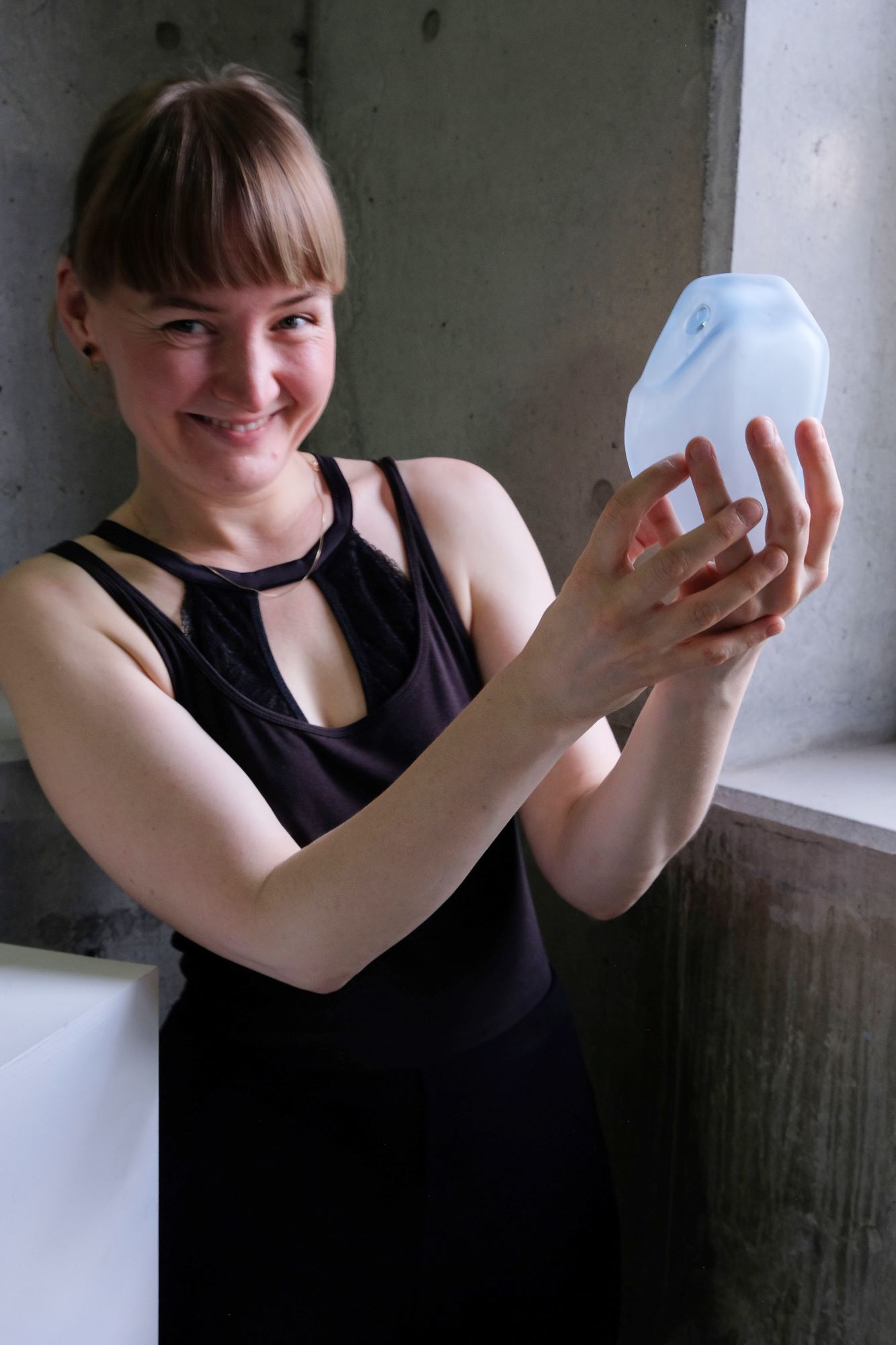
Year 2022
Chenyan Meng
| Home school: | Chelsea College of Arts |
|---|---|
| Accepted: | Textile Design |
| Period attended: | April 2022 to August 2022 |
The reason why I came here is that I want to open my eyes to see what I like. I am attracted by Japanese handicrafts and arts. I like Kazuo Ohno's dance. He stands on the other side of thinking and creates a critical dance, a new dance style and aesthetic. Shuji Terayama shows an experimental artistic style in film aesthetics. The plot and literary works have influenced many young people. Yoshitaka Amano’s painting style is symbolic and fantastic like profound and serious art. These works have deeply attracted me. Their works inspired me a lot when I was younger. I can find them in the library of Tama. The library is amazingly cool. I can sit in the library until I die with my fantasy. The book display and learning area are thought and designed, which is worth seeing and learning.
The teaching environment in Tama is very different from my original school. The classroom is very large. Each student has his own big desk and storage space, and it is very quiet. Quietness makes me feel comfortable. The course is novel and fun. I never knew that rice paste could be used for painting. And there is a complex and interesting relationship between fabric and stone. These unique teaching methods are very free and fun,really enjoy my study here.
Here are some experiences and suggestions for foreign students who want to apply the exchange program, as a person with poor time management, my best suggestion is to find a home near to school and have enough time on the road. Don't overestimate your walking speed, because waiting for the bus and train will also take a part of the time, and missing a regular train will result in being late.
Another point is language, speaking Japanese is one of the most important part in communication. The time for learning language is short before I come so I only know some basic Japanese and try to understand the meaning by listening to others. However, Tamabi's teachers and students are very friendly and some people speaking English. They help me to reduce fears and worries. Tamabi also provide language translation help for student's communication, which helps achieve the efficiency of expression and communication in classes. This is a very prominent advantage in teaching model. Students will get new skills in various challenges and opportunities. I have learned a lot here and look forward to more people joining here.
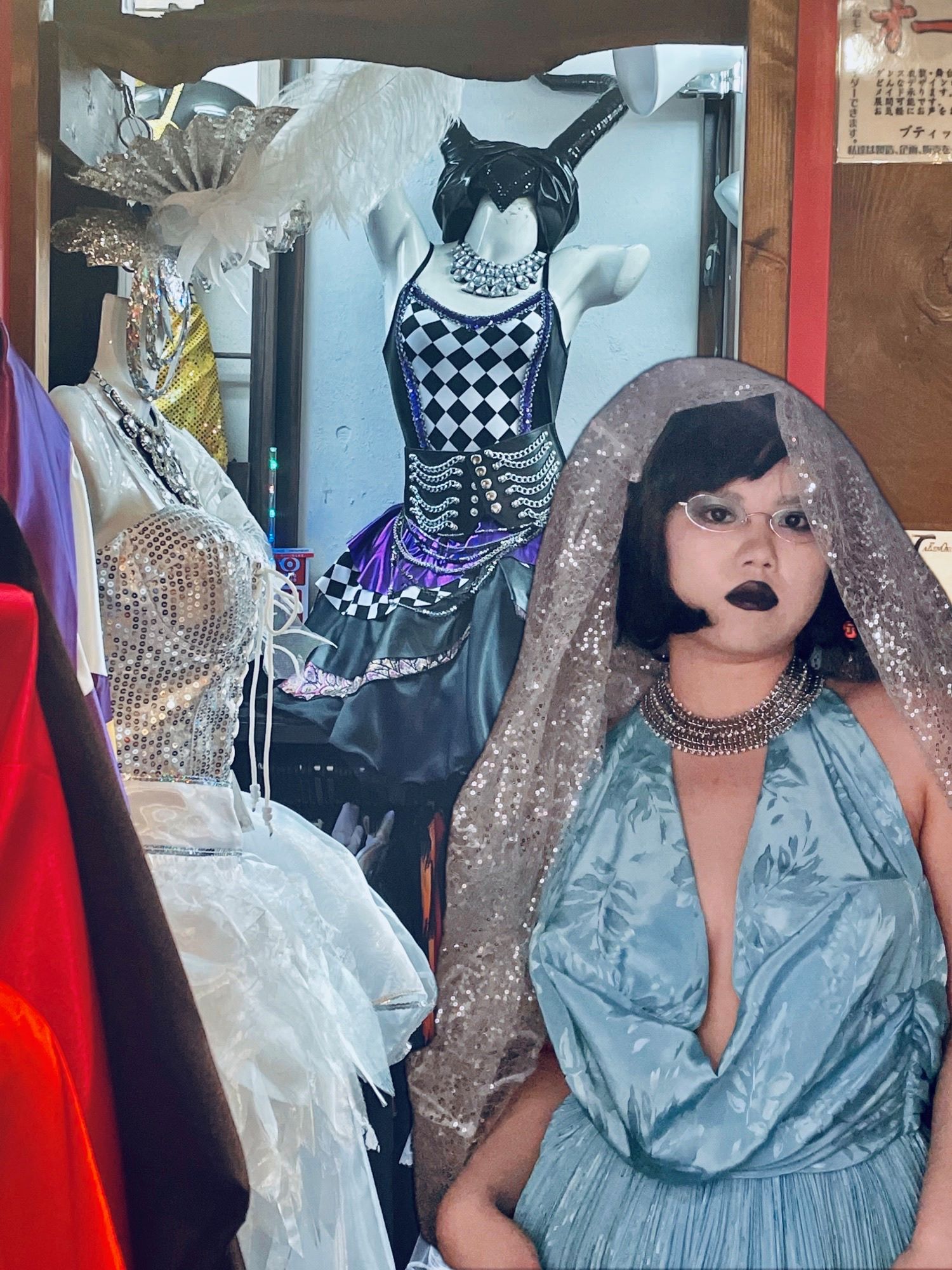
Roya Maria Haupt
| Home school: | University of the Art Berlin |
|---|---|
| Accepted: | Product Design |
| Period attended: | April 2022 to August 2022 |
Studying at Tamabi was such an amazing experience! The professors and teachers are very skilled, highly regarded designers and very kind. A lot of famous designers come to Tamabi once a week and give individual feedback for us students, which is such a great opportunity to learn and ask questions. My classmates were also incredibly kind and helpful. They introduced me to all of the workshops, changed their desks, so that I could sit more central and translated almost every consultation for me and helped me around Tokyo in general. Since Prof. Wada kindly introduced me to everyone in the beginning, therefore everyone in the product design department knew me and integrated me well. I enjoyed the focused, but very comfortable atmosphere with my classmates, we gave each other feedback for our projects, ate lunch together and had coffee breaks. Also, the summer festival with yukatas at the end of my semester was a highlight, my class mates gifted me a beautiful kimono and we celebrated the past semester together at the universities gorgeous grounds.
Also, a huge relief was the International Office and Keito, who already before my exchange answered all of my plenty questions, updated me constantly and send very helpful guides on how to navigate all of the paperwork. While at Tamabi, he showed us around the campus, made sure to assist us with settling in and answered every question that we possibly had.
The campus is a bit far from Tokyo center, but incredibly beautiful, I enjoyed sitting below the trees, having lunch on the meadow and admiring the sakura. Most of Tamabi’s departments are located at this campus and it‘s nice to meet people from different areas. Also, the 7/11, two cafeterias, a bakery and the material store are very convenient. Workers are very kind and helpful! I also enjoyed the recycling depot, where people can bring their leftover materials for others to reuse. And the product design facilities are top notch and very well equipped. I enjoyed the pattio, where students could use simple machines and build models, as well as the FabLab, where on can rent all types of tools to work with, as well as use laser cutters, 3D printers and so on. Also, the CMTEL is an amazing place to work at, I visited workshops and used the embroidery machine quite a lot.
Also Prof. Mooneys class was a delight, since she held an it bilingual, I could grasp even more of the theoretic content. She was also very helpful with settling in Japan as a foreigner.
I recommend exchange students to learn as much Japanese as possible, before going to Japan, since one can not rely on people speaking English. Also, it was very helpful for me to be pro-active and ask my classmates and teachers about my tasks, classes and upcoming events.
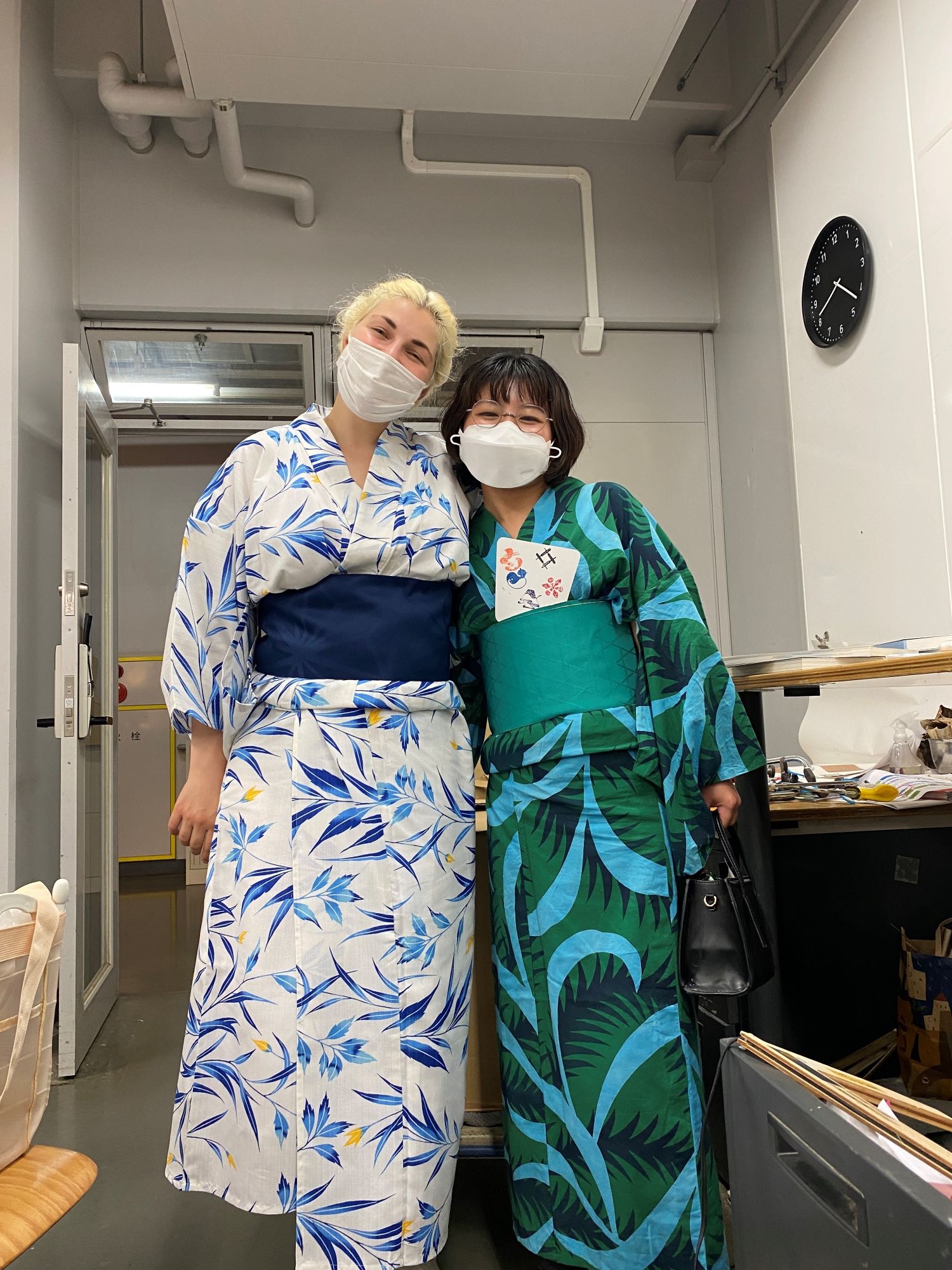
Rebekka Börner
| Home school: | Berlin University of the Arts |
|---|---|
| Accepted: | Oil painting |
| Period attended: | April 2022 to August 2022 |
The excellent reputation of the Tamabi goes far beyond the borders of Japan. The studies and the time I spent at the university exceeded my expectations. I received excellent support and had great teachers and fellow students. They made a lot of effort with me. The organization of the International Office is exemplary. I had contact persons at all times and felt very well looked after. In addition, there is the beautiful, inspiring campus.
I am first and foremost full of gratitude for this enriching experience. I have learned a lot and met wonderful people. I was able to improve my skills. I will never forget the time at Tama, it was a great gift!
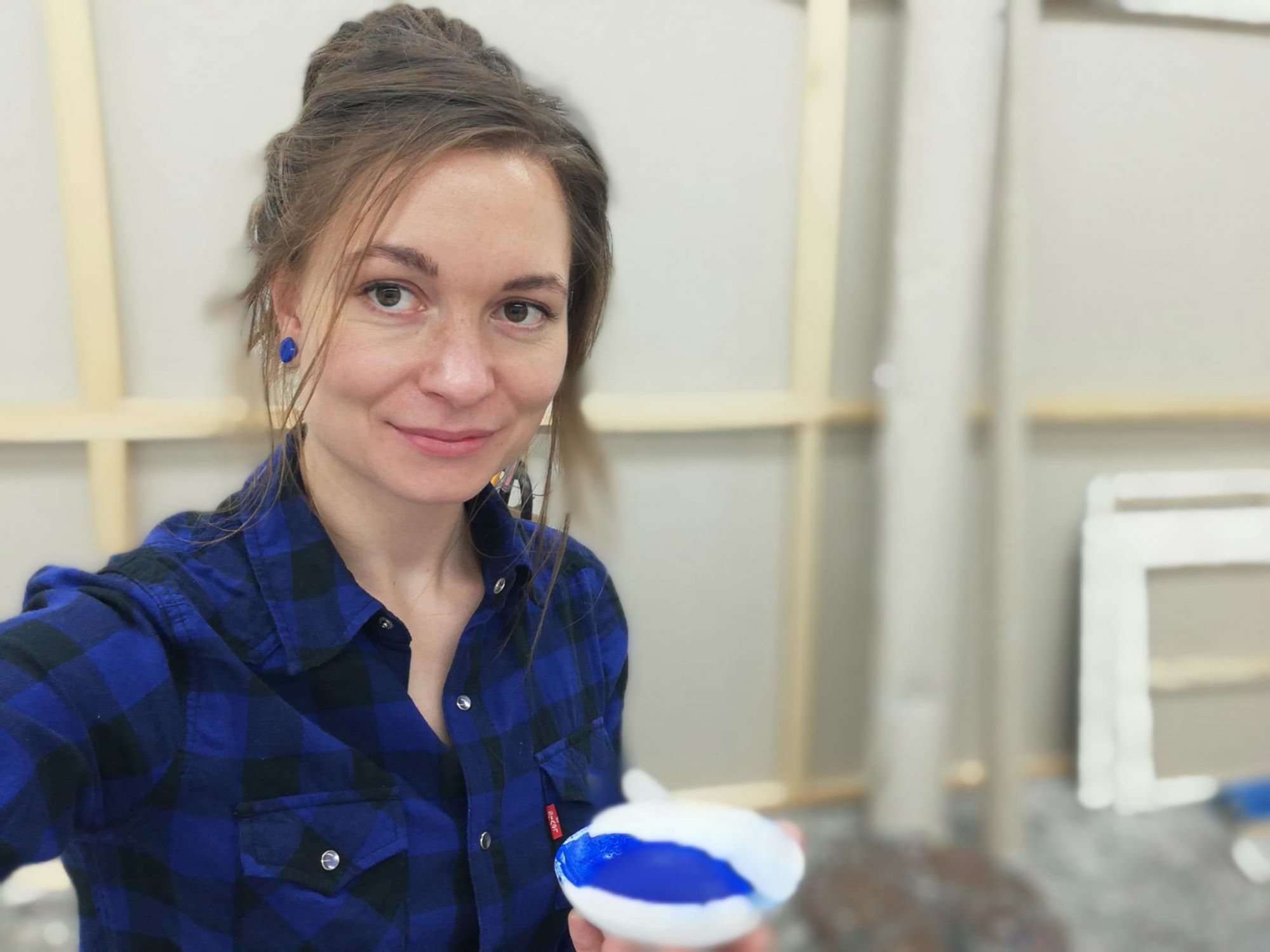
Riona Anne Reid
| Home school: | The Glasgow School of Art |
|---|---|
| Accepted: | Textile Design |
| Period attended: | September 2022 to January 2022 |
When researching the different exchange opportunities, Tama Art University especially caught my eye. I knew before starting at the Glasgow School of Art that I wanted to go on exchange in 3rd year and experience living in an entirely new culture. After visiting an exhibition in Edinburgh of Japanese textiles, I became utterly fascinated by the range of techniques that were used and knew that I had to go to Japan. I was already aware that Japan has a deep cultural history with textiles and that Tamabi would teach processes that would not be taught anywhere else.
There were big differences between Tamabi and GSA. Textile Design has a whole building to itself where each floor is full of incredible weaving and printing facilities. This creates an incredibly creative community, firstly within Textile Design and then as a campus. Tamabi has a 6-day work week with scheduled classes, this surprised me initially but I knew that before I arrived (this was for Textile Design but other departments seemed to have a different schedule). The specialisms/studios are completely different too. Tamabi’s 3 textile specialisms are for space, for the body or art. I was mainly in studio 3 (art) which was a great opportunity to approach textiles from a completely different point of view. The staff in both the Textile department and the exchange office are so helpful and understanding.
I had a friend from my home university who was studying in Kyoto. After landing in Tokyo and knowing no one, it was nice to know that I at least knew someone in the country who was about to go through the same thing. I think it would have been good if we were able to be put in touch with the other exchange students before arriving in Japan. However, my concerns quickly vanished when classes started and I met some of the best people I have ever had the pleasure of knowing. We experienced the exciting things that Tokyo had to offer as well as quiet nights in Hashimoto that I will never forget. I not only learned about Japanese culture but about countless other cultures of everyone I met there too. Studying, living and travelling in Japan was the best decision I have ever made. It allowed me to take inspiration from entirely new surroundings, deeply understand a new place and experience it all with some of the best people I have ever met. I am so thankful to everyone that made my experience in Japan unforgettable.
My advice to other applicants would be to at least take a beginner’s class in Japanese before going, it will help you to have a more rounded experience. It is also good to research societal rules and Japanese culture in general before you go so you are more aware. I suggest if you are in textile design to live close to Tamabi (maybe Hashimoto) as you will have a packed schedule. I found the heat and humidity difficult in August/September but that is my fault for being from somewhere cold! Make sure you travel and see Japan, you will see places and have experiences you will never forget.
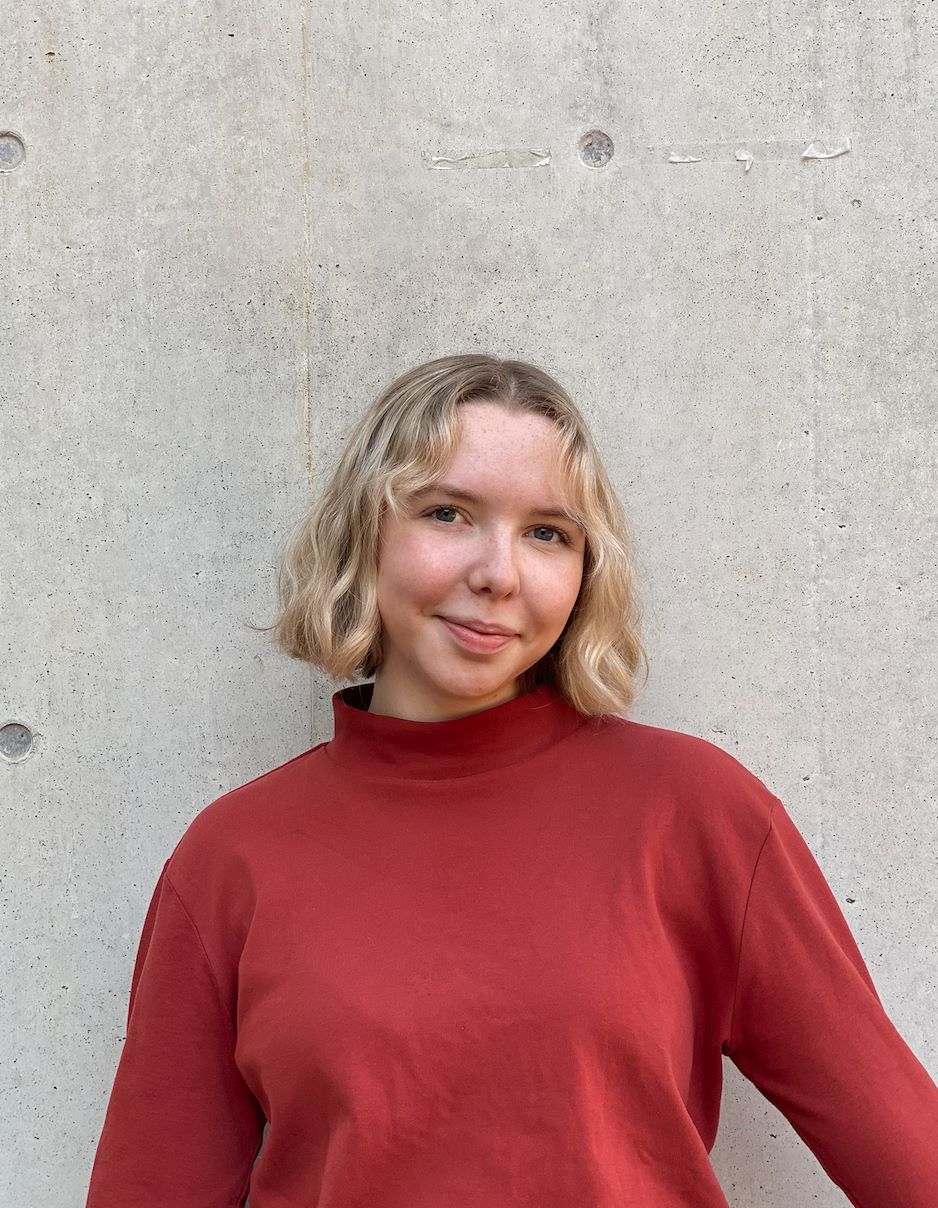
Seoyoun Kim
| Home school: | Hongik University |
|---|---|
| Accepted: | Information Design - Art and Media course |
| Period attended: | September 2022 to January 2022 |
I have been interested in Japanese culture since I was young, especially in the Japanese gaming industry. Studying abroad in Japan was my dream, and after having a great experience during my first trip to Japan, my determination grew stronger. I saw an interview with someone who had landed a job at my favorite company on the Tama Art University website, which is why I chose Tama.
I lived in Seoul, South Korea, so I didn't feel a big difference in daily life in Japan. However, there were small differences, such as people being kinder and better at maintaining public order.
One of the differences between Tama and our school is that Tama has great facilities for creating art. If you consult with professors, you can use most of the facilities. Additionally, the atmosphere among students is very lively and free. If you come from Korea, you will be surprised to see them sitting on the grass and having lunch (since we were all warned about ticks and diseases from them when we were young!).
Tama Art University's library is also very beautiful, and the bread from the bakery nearby is delicious. If you participate in the exchange program to Tama, I highly recommend that you clearly define what kind of work you want to create, and you should also have at least basic Japanese language skills.
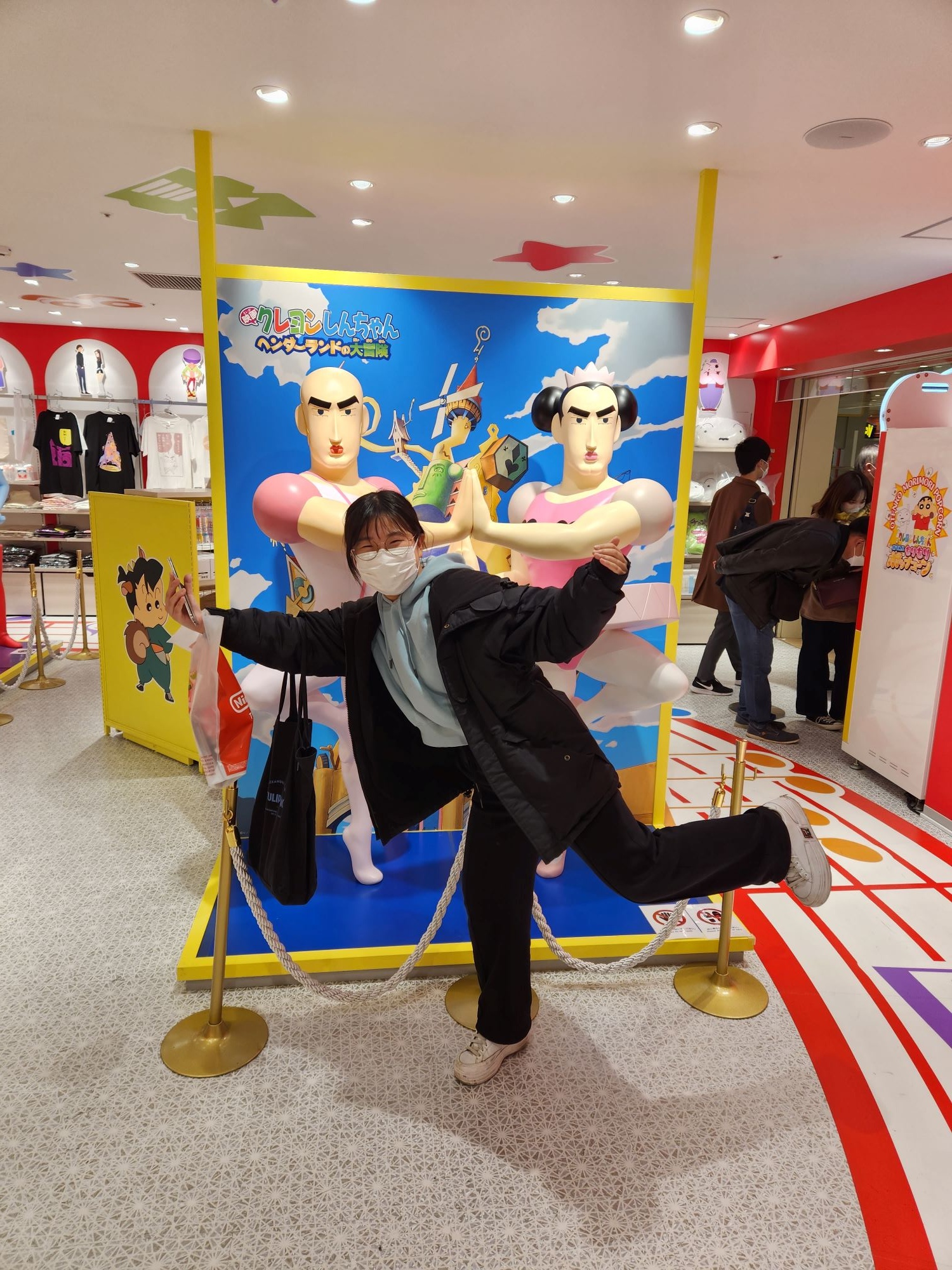
Ze yu Ye
| Home school: | Taipei National University of the Arts |
|---|---|
| Accepted: | Graphic Design |
| Period attended: | September 2022 to January 2022 |
Tamabi gives students a lot of freedom to create. Teachers also encourages the themes that students want to do. The works of the students are very diverse and not fixed into one shape. Seeing each other’s creations when presentation can stimulate more ideas and punch my thought. I feel good in Tamabi.
After I came to Tamabi, I was surprised that it is very similar to my original school. Whether it is a school building on the mountainside, a lot of beautiful grass and plants, or even a great degree of freedom for students. I feel very similar for these things (the only difference is that Tamabi does not raise cattles LOL). Maybe the similar environment allows me to adapt to this new environment more quickly.
Also, in Tamabi, there are more professional fields that TNUA does not have that I can see more different types of works. And I not only can communicate with different people in many major, but also can make friends in different countries. It was outside my comfort zone so I experience many feelings I never feel before. I’m very grateful for this opportunity to exchange. It will be my best memory.
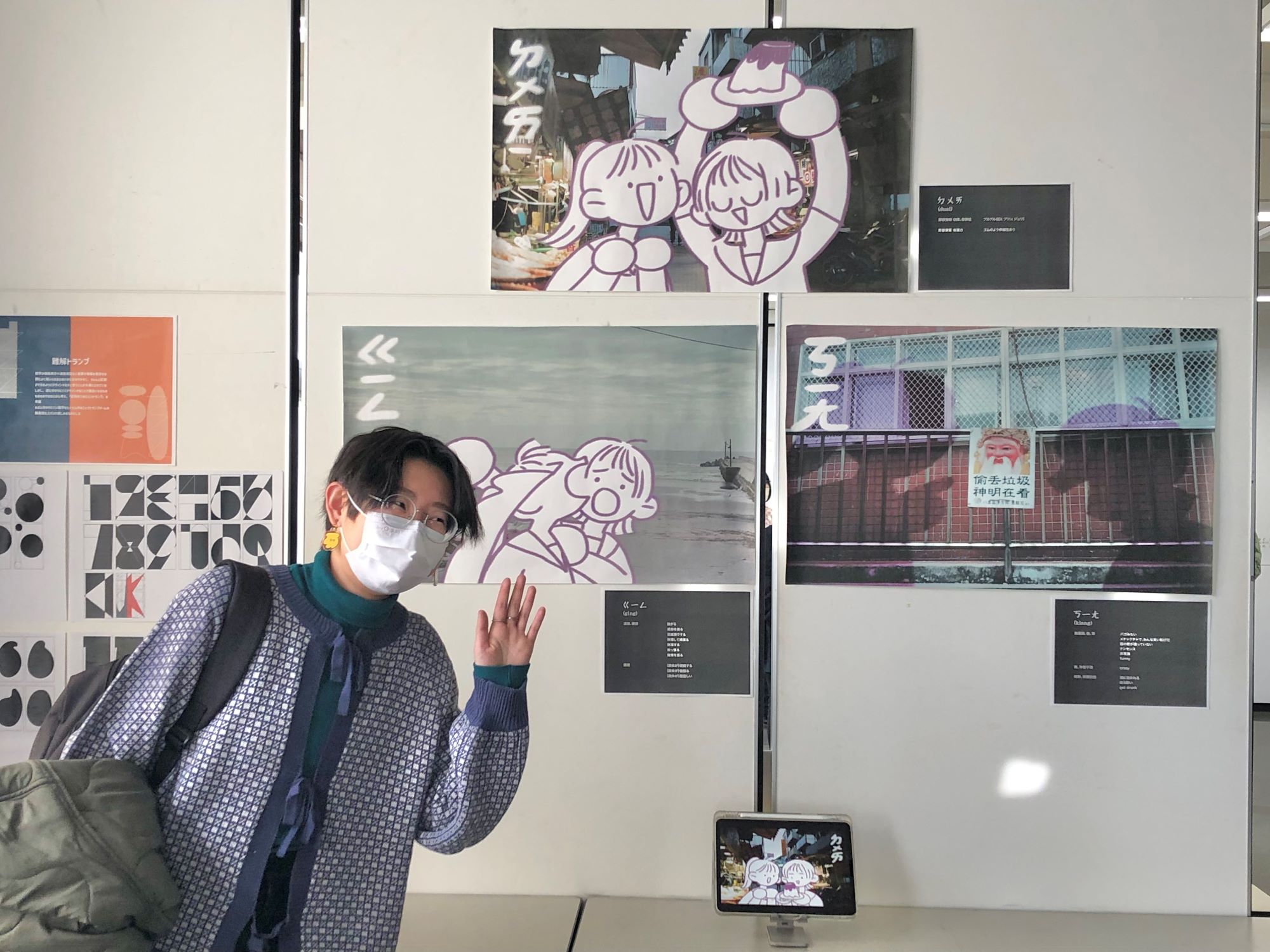
Year 2019
ZOU YiWei
| Home school: | Central Academy of Fine Arts |
|---|---|
| Accepted: | Oil Painting |
| Period attended: | September 2019 to January 2020 |
First of all, Japan is a very diverse country, which perfectly preserves the traditional culture and is very open and innovative. I like the fact that Japanese culture has always been curious about it. Tama Art University is the birthplace of the Mono-ha. As we all know, the Mono-ha is the perfect integration of Japanese culture and Minimalism art, forming its own unique art school and making a great show in the context of the mainstream modernism of the western world in the 20th century. I think this school must have a special place, so I first chose Japan and choose Tama Art University.
During the four months of study in Tama University of fine arts, my tutor Mr. Kurihara paid great attention to the inspiration for students, as well as the communication and discussion with students. In the discussion, I have combed my thinking and heard many different opinions. The teacher often shares his research and favorite paintings and movies with us. In the study of CAFA, there are less opportunities for such communication. Thank you very much for the opportunity to have such close communication with teachers. In addition, I feel free to create art here. The teacher has no restrictions on my creation. And, I can hear the creation experience and creation sharing of different teachers in the weekly lectures of the Department. I especially like the sharing of teacher Murase. The content she shares is very lively and interesting.
Of course, the hardware facilities of Tama Art University are also very good. Various facilities of the University facilitate students' life and creation to the greatest extent. If I want to give advice to future exchange students, we should study the language well. I feel that I have suffered a loss in language, so I can't communicate and learn very deeply. I hope that the next exchange students can gain more here and make more local friends, you will have better life in Japan.
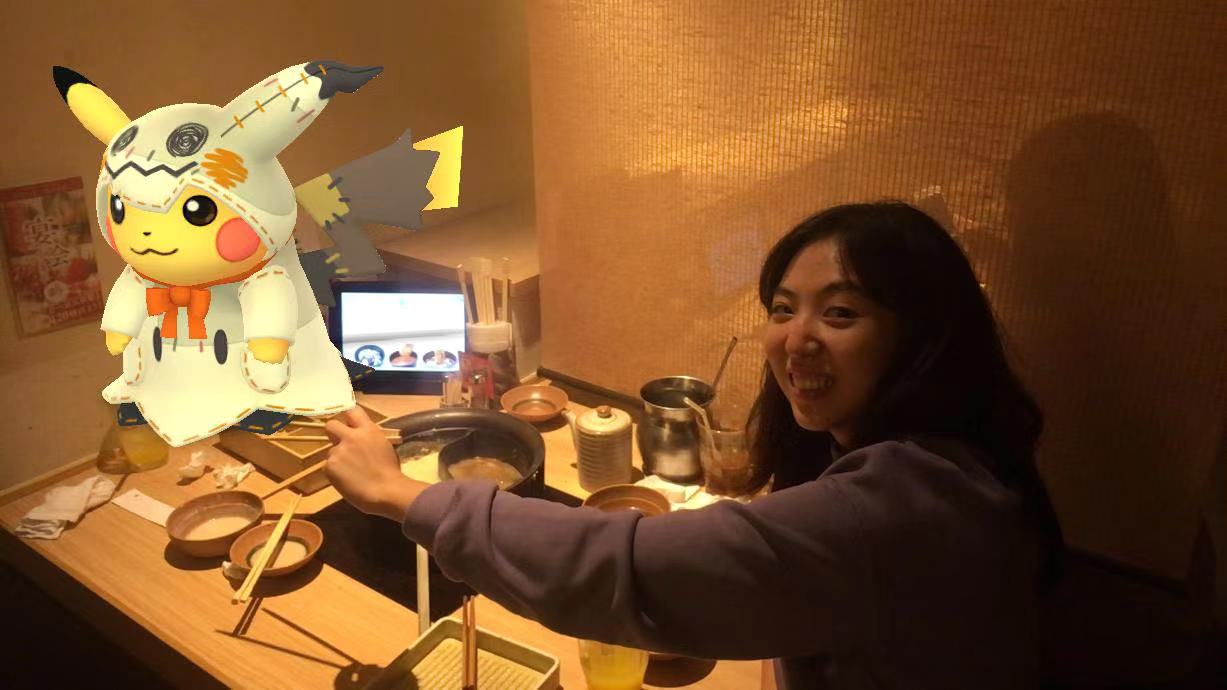
SeungJoo Lee
| Home school: | Hongik University |
|---|---|
| Accepted: | Textile Design |
| Period attended: | September, 2019 to January, 2020 |
First of all, the reason that I chose Tama Art University was the atmosphere of this school. the grey buildings and green trees gave me some calm feeling and I thought that feeling goes with me. Before I came TAU, I searched about facilities and faculties of Textile design Course, I really liked it. The broad space for doing artwork and FUJIWARA DAI, the designer who was in charge of Issey Miyake director before, was also teaching at this school. The difference between my home country’s school and Tamabi was approach to the artwork. At Tamabi, the class starts from learning textile techniques and develop the idea and the process to apply them to artwork. And the processes are important and the phase is slow. Therefore, I could think more carefully about textile itself and wrap up my whole artwork process.
Before coming to Tamabi I usually did my artwork using graphic design tools (photoshop, illustrator etc) but now I do my artwork started from my own hand. So that's what made me feel more affection for art or design works and that valued my own series of work processes. I learned a lot about textile techniques (weaving, dyeing, knitting, pattern making for fashion etc) and how to match those techniques with actual design. Moreover, I got opportunities to see other students’ artworks and their thoughts during the all classes with Tamabi’s students. So, I could learn about the different ideas, thoughts, approach and enthusiasm to their own artworks and their works gave me inspirations. Despite the lack of language communication, the students, professors and assistants here are very good people so I could overcome any difficulty with their supports.
Also, Tamabi’s school festival is really cool, you can see various exhibitions of each departments and you can buy some cool goods that Tamabi students made and the library is so good to see various art/design books. The overall life in Tamabi and Japan gave me great experiences and lessons. I recommend Tamabi a lot for those who are looking for exchange studying in Japan.
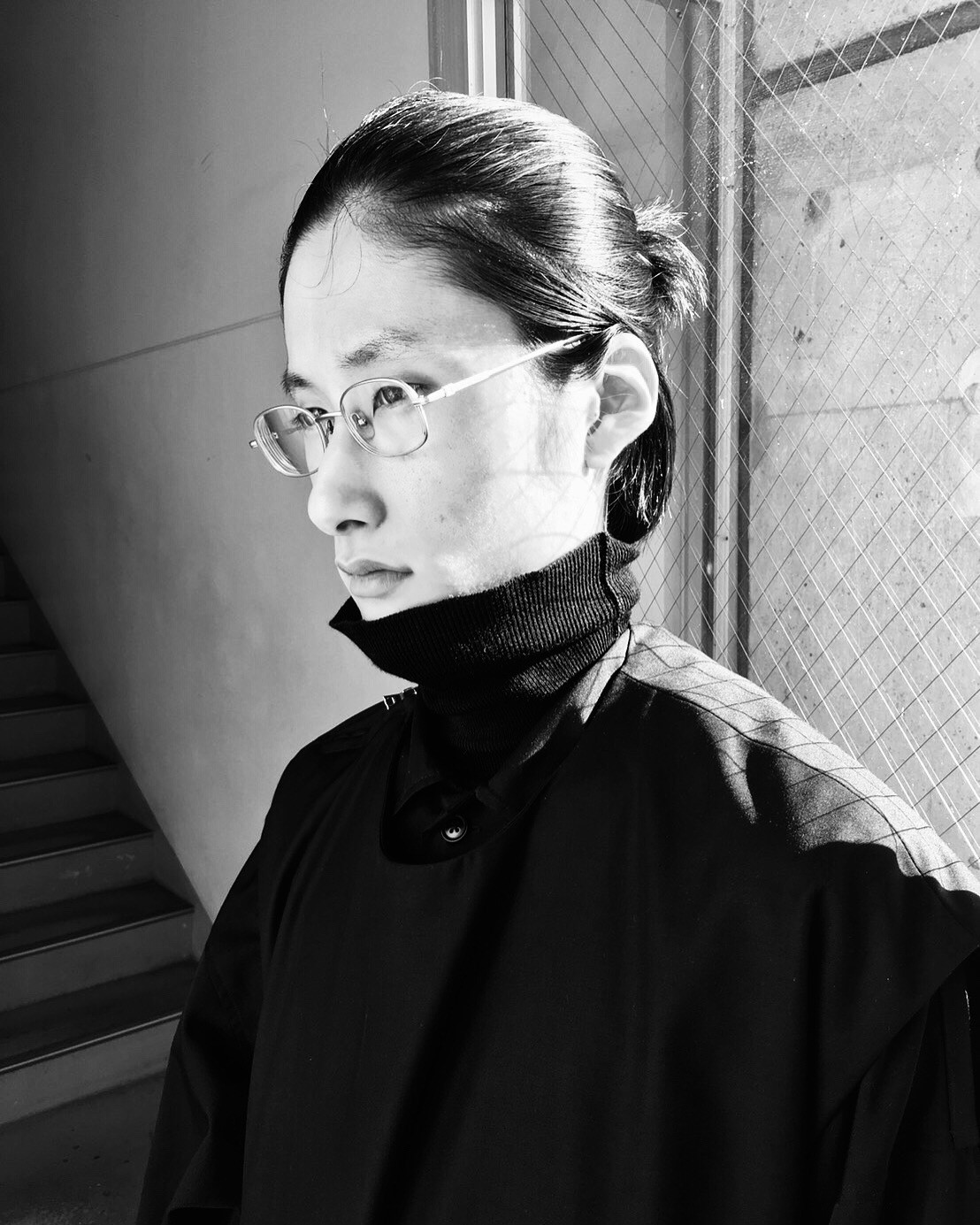
Year 2018
Esbjörn Grip
| Home school: | HDK, University of Design and Craft, Gothenburg |
|---|---|
| Accepted: | Architecture and Environmental Design |
| Period attended: | April, 2018 to August, 2018 |
I’ve been fascinated with Japan since I was a small kid, so when I got the opportunity to come to Tama, I was really happy. It started like for so many others with manga and evolved into a cultural interest. I wanted to learn more about the society and the Japanese design philosophy.
When I first came here I was so overwhelmed by everything. Arriving in march was beautiful, since there was cherry blossom everywhere. Tokyo is more than I ever thought it could be, there’s so much to do. The museums are world class and everything you do will amaze you. This city can feel so quiet and organised even though its the largest in the world. I would often just travel around and everywhere I looked there was something interesting. It’s a special combination of nature and huge skyscrapers with red blinking lights. I started taking a lot of photos while walking around the city, just to remember it all.
The food was amazing! Sushi might be the most famous one overseas, but in Japan, they eat so many other things. I learned to love Ramen and Okonomiyaki. Eating here is something I will truly miss.
Not knowing the Japanese language was a bit frustrating since all the classes was in Japanese. Often I missed information and got confused. It made the education very challenging. But I must say, it also made for an interesting exchange. Finding other ways to communicate and learning by looking. The teachers are very accomplished and professional, and they have so much to teach. We learned to communicate through images and models.
Not many Japanese know any english but the ones who do was very interested in talking to me. The people I met were so friendly and I made a lot friends who gave me an insight in the Japanese Life. Being a foreigner was both a blessing and a curse. You got a lot of attention but at the same time, I sometimes felt alienated.
Tama is located on a huge campus, which was so cool for me since my home university is scattered in the city. The school here wants to be free but compared to Scandinavian design schools, it still maintains a lot of control over the students. People here don’t really make critical design, instead most of the works I saw were commercial, at least in the design department. But being here has been such a good compliment to my education. I learned to build models and prototypes and to think in a more functional way. People are so skilled with crafts and the presentation. I think the differences might just be based on culture.
Everything is just different - the teacher/student relationship, the bureaucracy and the classes. When I got used to going to school here it started to feel more relaxing and I could focus better on the projects. We were only 10 exchange students in total and that made a lot of interaction with the regular Tama students. It took a lot of time to get used to life here. But it has been the coolest experience of my life and Tokyo continues to surprise. Everyone who comes here sees different things, and I experienced so much that I can hardly remember it all.
I really recommend coming here if you have the opportunity. You will leave this place filled with new perspectives, friends and memories. Being a student at Tama will surely make you grow as a person.

Cynthia Lee
| Home school: | Rhode Island School of Design |
|---|---|
| Accepted: | Graphic Design |
| Period attended: | April, 2018 to August, 2018 |
I was interested in Japanese subculture art like manga, game and anime, and how that can be brought into the modern art culture. Hoping that I would work in Japan in the future, I wanted to have a mini experience of life in Japan.
The biggest difference between RISD and Tamabi would be the critique system. Where RISD requires students to attend classes every week and talk together as a group about their work, Tamabi Illustration classes’ critiques were done 1:1 with the professor very shortly. I wish I had more chance to talk with professors (even though my Japanese is not perfect) to talk about what I am doing great and what can I do to improve.
The merits of Tamabi’s class system is that the outcome of the work is enhanced because students are given longer time to think and work on their project. RISD focused mostly on experimenting until now while Tamabi focused on bringing out students’ individuality to create their own unique portfolio. I encourage students to pre-think about what they really want to do as illustrators/designers, since there are not many projects and it will be a semester long.
It was a bit unfortunate for me that there was no free workspace (studio) for students to work at. The place I lived for 5month was not big enough for me to work with paint and brushes. We were informed that we can rent a studio but it looked like it was not used for a long period of time. Other than that everything about facilities were good. The printers and plotters were free to use (you have to buy your own paper roll for plotter though), and computer rooms were open for students to work.
Taajwar D’Van Howard
| Home school: | University of Cincinnati |
|---|---|
| Accepted: | Product Design |
| Period attended: | September, 2018 to January, 2019 |
So many people questioned why I chose to study at Tamabi. I have never been to Asia but I have always been interested in some products of Japan such as the cuisine, art, anime, and culture, but I had no perspective of what the real-life culture of Japan was like. With real Japanese lifestyle being an unknown, I also chose to study at Tamabi specifically because I was told it was a very rigorous program and I like a challenge. One of the biggest differences I noticed between America and Japan is the culture of waste.
In Japan, people are more thoughtful and respectful about their use of stuff, and I noticed its impact on things such as recycling, products, and even infrastructure. I was also surprised by how much responsibility and trust was given to the students by the school and the faculty, and how involved the faculty was in daily activities. I enjoyed the freedom I had to make decisions in my project because in the real world you don’t have a professor telling you what you have to do, you must make the important decisions yourself. I believe the freedom to decide things for myself and having to juggle the many difficulties of living in another country have helped me grow as a person. I am also trying to live more minimally and less wasteful like I was in Japan.
I think the best advice I could give to future applicants of the exchange program would be to live close to campus and try to live with or near other international students. Even though I was only a train station away, I was pretty far from other students. My time would have been significantly better if I only had people who lived closer to me.

Xiao Tan
| Home school: | University of Cincinnati |
|---|---|
| Accepted: | Product Design |
| Period attended: | September, 2018 to January, 2019 |
I didn’t put too much thought into my school-selecting process: my classmate from japan told me Tamabi is a well-known design school in Japan; the campus is really close to Tokyo; Japan is super close to my hometown in China. Therefore, I naturally put Tamabi on the top of my list.
A lot of things in Tamabi really surprised me when I first arrived. One of them is 6-days-a-week school days and having classes every school days. Unlike my university in the US, Tamabi has a clear “5 periods” system for daily class schedule, which means every day, is evenly divided into 5 time periods, and students go to different classes in different periods. Personally, these arrangements remind me of my high school experience.
The product design studio one I was in really shows its advantages. Students are working together in small groups, but everyone no matter which year he/she is in, shares one big workspace. In a small group, students get more chance communicating with their instructors; students talk to each other more, even though they could be in different years, when they were put into one same room. During my semester in studio one, I got my hands on two different main projects along with my other classmates. Both projects required us to collaborate with companies outside of the university. Students need to start with themes that provided by companies. Students also get mentoring and other resources from the companies. These kinds of projects can prepare the students for their future career.
In terms of student life, Tamabi has two cafeterias and two convenient stores in the campus. Students could use some extended open hours considering we are design students so a lot times we do need to stay late. Technically students need to come to school almost every day, but commuting between home and campus could be tough. Making studios open 24 hours including the weekend could be convenient for students. I really appreciate my experience in Tamabi. It’s such a special experience.

Sami Bizien
| Home school: | Ecole supérieure nationale des arts décoratifs de Paris |
|---|---|
| Accepted: | Graphic Design |
| Period attended: | September, 2018 to January, 2019 |
I choose to come to Japan because I was very curious to discover the parts of the Japanese culture that we can't know about from overseas. Before studying graphic design, I've been doing chef studies and my passion for this kind of creativity got me interested about Japan gastronomy and culture. Then I chose to make graphic design studies and my interest move on to typography and Japan is a place where the work on typography looked very interesting.
I chose Tamabi for the Department of Graphic Design which looked really good and complete. I also liked the location of the university, living at 10 min from University allow me to discover Japan from an another point of view, and I liked the possibility to live between Tokyo and the mountain which took me a lot of time to discover.
The difference between my school (ENSAD) and Tamabi are big, if you firstly look at the organization of the two different structures school/university you can see a lot of difference, without thinking about the difference of education. Professors and staff are also different, I'd like to personally thank International Exchange Section for your support all along my exchange here, even if I had some trouble with my lack of speaking Japanese, I haven't had any problem during this semester.
In terms of good points on Education, administration and life in general, I would like to thank again to International Exchange Section for the support this semester. You had been very understanding about all the needs and questions I had to ask. I also need to thank Prof. Saga for all this semester. I found a very good professor who creates a very good relation to his students. Even if I haven't understood all the things told I have observed super nice work ambiance during all class. He took students to go further into their work thought and I guess work personality. I judge professor on the discussion we can have about work and culture and I shared good ones with him. Surely, he is a good professor that any student should work with. Also a big thank for all the cafeteria staff, very helpful and offering a good curry meal every day!
I learned a lot about my work and thought about how it would change in the future more than on any skills I guess, which is for me a very good evolution, I understood a lot on my working procedures and work subjects.
Advices for new applicants
Curry meal every day, everything is good but those are the best.
Enjoy the library a lot more than me, it's really big and full of books about many subjects to work but also discovers new things for the culture. Don't live on a budget with an apartment in Tokyo and prefer a good one in Chofu or near Hashimoto (mine was between Hashimoto and Uni) because you will have the mountain for background and the possibility to discover the beautiful nature of Japan. If you are in Graphic Design ask for the typography class I think that you won't be disappointed.
Astha Avinash
| Home school: | National Institute of Design |
|---|---|
| Accepted: | Textile Design |
| Period attended: | September, 2018 to January, 2019 |
I have always loved Japanese culture and have wanted to learn more. Running my eyes through the list of countries and programmes that my college offered for overseas exchange, there was one in particular that intrigued me — Tama Art University.
My affinity towards Japan, had contributed to this choice. Besides being keen to learn in a distinct land, I was curious to know everything about this Asian country — what has been, what is thriving and what will be.
The more pragmatic reason of choosing Tamabi is the wide range of course availability. With that, I knew I would have the freedom to structure a suitable study plan for myself. I was eager to explore the dimensions of my perspective through an art university. The variety of courses that Tama Art University offers covers a large range of options ranging from traditional to modern day textile techniques.
I am glad to express that my decision has proven to be fruitful — I have added abilities to form ideas and build individuality. While my home university helped me imbibe the core skills of design problem solving and design functionality, Tamabi enlarged my think tank and increased my versatility.
As a life experience, Japan has been truly inspiring. Living and learning with highly skilful, humble people became my driving force, even in times of difficulty. The Land of the Rising Sun, is an apt title for this astonishing beautiful, extremely organized and super-efficient country. I am going to cherish these six months for a lifetime.
As a budding designer I wanted to broaden my horizon with international exposure. And I can definitely say that I have witnessed great learning through different pedagogy and skills development methodology. This journey of interacting with people and art, beyond language and cultural differences has helped me grow — in ways more than one. Apart from all this, Tamabi professors and especially International Exchange Section has been really helpful. I would recommend all the future students to learn basic Japanese as it will come in handy. The course at Tamabi and the culture of Japan inspires me to give my best potential in my future endeavours.

Matias Ylikangas
| Home school: | Aalto University |
|---|---|
| Accepted: | Graphic Design |
| Period attended: | September, 2018 to January, 2019 |
Japanese culture has interested me for a long time and most of my sources of inspiration come from this country, so applying for exchange studies in Japan was self-evident for me. I also wanted to do my minor studies in animation (I’m a visual communication design student) and Tamabi has a great curriculum for animation so, in that sense, Tamabi was the perfect choice for me.
Studying animation in Tamabi as an exchange student meant that I had lectures/classes/critiques only two days a week and the rest of the time I was working on my animation and designing posters for an illustration class. It was a lot of hard work and it took almost all of my free time, but I think the setting worked great for me. I also appreciate that I was given full control and responsibility over my work. In the classes we showed our progress every week and the professors gave advice on what to improve. At times there was a bit of a language barrier (I only understand the bare essentials of the Japanese language) but we always managed to work things out. It was quite a shock at first, but I got used to it and asking for help always paid off. Comparing my home school and Tamabi I think the biggest difference is that in my home school working is more of a group effort. Even if we don’t have a group assignment everyone always helps each other out and the critique sessions are more like a group chat, whereas in Tamabi (or at least the classes I was in) the work is done in solitude and students rarely seem to comment on each other’s work. I also think that in Tamabi the focus lies on perfecting technique and aesthetics rather than conceptual and critical thinking. Then again, maybe it’s harder for an exchange student to see those things.
In general, I think my exchange period in Japan has been very eye-opening and it has helped me build confidence and become more independent. I have been to Japan twice before, but still the culture shock really got to me during the six months I lived there. I think that if you prepare and acknowledge these things, it’s much easier to cope with them when they hit you.

Agust Gydemo
| Home school: | Oslo National Academy of the Arts |
|---|---|
| Accepted: | Textile Design |
| Period attended: | September, 2018 to January, 2019 |
I have been interested in the special way of thinking about and handling craft one can find in Japan for a long time. I also wanted to experience a different culture under the umbrella of a school environment and exchange ideas with fellow artists but in other countries.
Japan is a beautiful country with a lovely, if somewhat shy, people. The food is much better than in Scandinavia and I enjoy the culture more. The staff at Tamabi is lovely. Everyone in the exchange office, in the cantines and in the teaching staff is very helpful and nice.
The Tamabi campus and library are great. All the workshops are impressive, so it is a shame that students are not allowed access to them easily.
I have learned some basic Japanese and some about the rich culture. Some new techniques and artistic practices have been taught me as well.
I would advise anyone going to Japan to study the language well beforehand. I could not participate in more theoretical and advanced courses because of the language barriers between teachers, students, teaching materials and myself.

Pia Gjermo
| Home school: | Oslo National Academy of the Arts |
|---|---|
| Accepted: | Architecture and Environmental Design |
| Period attended: | September, 2018 to January, 2019 |
I chose exchange program for Tamabi because I wanted to experience the culture of Japan and learn about Architecture and design in this part of the world. Tamabi was very different in many ways from my home university. The school is very big and the campus is very large. At my home university I study interior architecture, but in Tamabi I got to study architecture and landscape design, something that I liked very much and I learn a lot!
I loved staying in Japan, even though it was very confusing at times and I didn’t understand the language, it’s a good thing that Tamabi has a very good and helpful international exchange office and that people in Japan are very generous and helpful. I wish that I learned more Japanese before I came to Japan, but I manage anyway and I learned some in the Japanese classes at Tamabi! Overall I really enjoyed life in Japan, and hope to come back someday.

Katy Clark
| Home school: | Glasgow School of Art |
|---|---|
| Accepted: | Textile Design |
| Period attended: | September, 2018 to January, 2019 |
I Chose to apply to go to Tamabi because I had always been intrigued by Japanese culture, as it is so different to my own in the UK. I have also always admired the textiles and fashion of Japan such as the traditional embroidery and Kimono. Compared to GSA, Tamabi is a lot more structured and students in the same classes are doing similar projects, whereas at GSA the students are left with more freedom to create our own projects. Tamabi was a very inspiring place to work, and I thought the classes were all well taught and interesting. The Uni life was very inspiring due to the beautiful campus grounds, buildings and friendly, helpful staff and students. Whilst at Tamabi I learnt to become inspired by my surroundings and to see a project through from start to finish. While in Japan I learnt to be more independent and adapt to a new way of life that I was at first unfamiliar with. I also managed to use my time in Japan to travel and take in some of the beautiful sights of Japan. I would advise future applicants to Tamabi to document their surroundings and projects throughout the exchange and to go out and explore.
Caroline Neumann
| Home school: | Berlin University of the Arts |
|---|---|
| Accepted: | Information Design |
| Period attended: | September, 2018 to January, 2019 |
A sum between support to develop projects; access to techniques and handcrafts; and the contact which artist and cultural practices which are quite different from where I have been were the points that I was looking for when I chose Tamabi to study.
Different from the University where I’m enrolled, the Berlin University of Arts, where the buildings of the university are spread in the city, Tamabi is based on a campus, which is far from the city center of Tokyo. That aspect helps to focus on the studies and also to have a close contact which the university community, on the other hand, somehow it’s quit isolate from the city, which makes the dialogue between artistic practices and the surrounding society more difficult. Besides that, Tamabi has a much more professionalizing approach, aiming well-presented projects, contact with galleries and internships in companies.
Because it’s really impressive infrastructure and facilities, Tamabi offers really good conditions to study. From the administration team to the department staff, everyone from Tamabi are always willing to help you, even if you don’t speak Japanese, they will try and figure out a way to help. The machines and laboratories are easy to access; the spaces are well organized and prepared for the different artistic practices that they propose.
For future applicants to the exchange program at Tamabi, I would suggest to stay tuned at events that are held outside the period of the classes, such as workshops, exhibitions, film screenings and talks. Most of these are in Japanese, but even so it’s possible to enjoy and to learn much from it. Maybe the main point is to be curious: ask things, go to the workshops, visiting the gallery.
In this experience in Tamabi, I could not only find what I was looking for, but also I’ve learned to be more open and sincere, to deal with the unknown which more curiosity and less fear and that communication is much more than a question of language.

Huang Min
| Home school: | National Taiwan University of Arts |
|---|---|
| Accepted: | Information Design |
| Period attended: | September, 2018 to January, 2019 |
Since I was little, Japanese animation and comics have always been in my life and influenced my way of thinking. When I was in college, I started to watch Japanese movie and TV show, and fell in love with them. So, after studying Japanese for three years, I finally come to Japan.
Every teacher I meet in Tamabi is full of enthusiasm and welcomes any ideas, so it is fun to discuss the concept of work with them. Also, there are always many stunning exhibitions held in the campus, and lots of movies able to be borrowed in the library. And, I am grateful for having the chance to take PBL course. In this class, I participated a program with Japanese students. This experience not only improves my Japanese speaking skills, but also gets to know about the process of project in Japan. The most important thing is I make many friends in the class due to the discussion and corporation in the project. Every classmate is so kind and it is so hard to say goodbye to them.
My advice for the future exchange students is to do challenge as more as you can, like traveling, home visiting, part time job, Japanese communication party and so on. More new things that you try, more people that you meet, more lifestyle that you know, more different life that you can choose. This half year has really changed me and my life, and I am grateful to everyone I met in Japan.

Meng Fanwen
| Home school: | China Central Academy of Fine Arts |
|---|---|
| Accepted: | Graphic Design |
| Period attended: | September, 2018 to January, 2019 |
Firstly, I’m really appreciated for international exchange chance provided by school, and it’s a great honor for me to attend this university for one term. I have known exchange students from all over the world and a plenty of new Japanese students and teachers. I have attended a great many interesting activities and courses, what an amusing term!
My major is Picture book when I was in my alma mater, and I was researching works related picture book and illustration. In my alma mater, professors often share excellent design works and wonderful designers from Japan with us. So I have developed interest about Japanese design and culture, especially for my major, illustration. The illustration of Tama Art University is famous all around the world and there are a number of awesome works that is very attractive for me and I would like to exchange and experience life here.
Japan is a very clean and tidy city, and everyone is polite and respects with each other that makes me admire them. When I landed here I fell in love scenery here and I enjoyed myself here as to forget to leave. The course schedule in the university is also interesting, and I have experienced making poster making drawing books as well as pop-up books here and teaching methods and course contents that I never experienced in my alma mater.
I have learned a lot of new things and I have gained a good deal of knowledge from course which I couldn’t get from my alma mater. These courses for me are more like amazing gifts.
I’m also grateful for staff of the international division. They organized us to visit tourist attraction such as Tokyo Tower and Tokyo Sky Tree which make us relax from academic tasks. We not only experience abundant courses but also feel the charm and attraction of Tokyo. We still tasted Japanese local delicious food, buckwheat. It tastes really delicious!
Last but not least, I’m very thankful to this chance provided by my university and Tama Art University and I’m very happy to spend such a fulfilling term!

Year 2017
Zhang Qiaoxi
| Home school: | China Central Academy of Fine Arts |
|---|---|
| Accepted: | Graphic Design |
| Period attended: | April, 2017 to August, 2017 |
As we all know that Japan is famous for design in the world and Tama Art University has developed a number of leading designers in field of Japanese Graphic Design. This is why I chose Japan for my first place and try my best to become an exchange student in Tama Art University.
I am very interested in the modules of the program about graphic design in Tama Art University. I think that the academic atmosphere here is really different from my home university. It is freedom of design guidance and complete setting in design project. In Tamabi, I have communicated and cooperated with people from different backgrounds. We have exchanged the experiences that we experienced and discuss the cultural differences. It is a wonderful experience for me to exchange here. And the library of Tamabi is so helpful for me. I can research and discover so many design knowledge and have more interesting idea in my design work.
Finally, thanks very much for Tamabi to give me this opportunity to be an exchange student. And thanks for teachers who taught me and helped me in my exchange time. It is an unforgettable memory for me. Thank you very much!

Dasom Cho
| Home school: | Hongik University |
|---|---|
| Accepted: | Textile Design |
| Period attended: | September, 2017 to January, 2018 |
There are several reasons I chose Tamabi. In fact, I have been interested in Japan because of Japanese dramas and J-pop. I always wanted to go trip to Japan or to live in Japan. This is the main reason I decided to go to Japan. Searching the Web for information about Tamabi, I found Tamabi is one of the most famous art universities in Japan and the textile design department of Tamabi is also prominent. I also visited the homepage of Tamabi and saw some pictures of facilities. I was fascinated by its excellent facilities.
My life at Tamabi, Japan was like dreams. After starting to study there, I found Tamabi is the best place for students to do their works and to study. In reality, of course, the facilities were outstanding. There are enough space and proper equipment for every student. Besides, every person of Tamabi was so kind. They helped me whenever I asked for help. I appreciate it. I could concentrate my mind and efforts only on my works, thanks to them. Also, one of the reasons I was satisfied with my choice was travel in Tokyo. Tokyo is great for traveling alone. Especially I liked Japanese traditional buildings. There are many traditional buildings in Tokyo and I was inspired by them.
All classes I took at Tamabi were dyeing classes. In the classes, I learned Japanese traditional dyeing techniques called Yuzen and Katazome. I have never heard about these techniques before I studied at Tamabi. I was so glad to learn something entirely new.

Milla Vainio
| Home school: | Aalto University |
|---|---|
| Accepted: | Department of Ceramic, Glass and Metal Works (Ceramic Course) |
| Period attended: | September, 2017 to January, 2018 |
I chose Japan because I have been really interested in Japanese culture and art at very long time. My home school is more design school, not so much art-school like Tamabi. I’m more like art person so Tamabi were exactly right choice for me.
I felt that in Finnish and Japanese cultures are quite similar, people were really friendly but formal. Maybe that´s why I didn´t felt that much culture-shock when I came to Japan.
I liked very much that courses were really good scheduled, professors were truly interested in my works and I get useful critique. I also liked our Art Festival-week, was nice to see students works in different departments (for me and also for people from outside school) and whole event were nice organized. Most of courses techniques were familiar to me but I think I learned quite a lot about myself an artist and I assume that I’m now more relaxed in my work. I also think that now I have some kind of perception about Japanese culture and lifestyle. I want to come back to learn more as soon as I can.

Valeria Nekhaeva
| Home school: | Aalto University |
|---|---|
| Accepted: | Information Design (Art and Media Course) |
| Period attended: | September, 2017 to January, 2018 |
I believe that putting oneself in a different environment stimulates new ideas and leads to new understandings of the world around us. Spending one semester at Tama Art University is a unique opportunity to explore a rich Eastern culture.
I guess the main difference is that Aalto University is not only an Art School, but it combines the departments of Engineering, Computer Science, Applied Physics, Mathematics, School of Business, etc. All the departments will be soon moved to one campus and we are expected to collaborate with each other. Multidisciplinary approach is valued the most.
Tamabi has great facilities and everything you need to experiment with new ideas. There’s a lot of attention from the faculty and the campus is very green which makes it a great place to be.
Japan, with both a high tech culture and a traditional culture, is a very special place to observe the impact of technological advances. This is what I’ve been busy with here.
I will recommend Tamabi without any doubt. It is a special opportunity to broaden your professional identity, and to develop artistic practice within a different - and rich - environment.

Helene Peters
| Home school: | Berlin University of the Arts (Universität der Künste Berlin) |
|---|---|
| Accepted: | Architecture and Environmental Design |
| Period attended: | September, 2017 to January, 2018 |
I chose Tamabi for my semester abroad for a couple of reasons. Firstly, I wanted to go to Japan in order to experience a culture utterly different from everything I had experienced before. Secondly, Japanese architecture and design are very well respected and appreciated in Germany and Europe and I wanted to find out more about it, in particular the interplay between traditional values and extreme modernity. Thirdly, I liked the idea for the degree in Architecture and Environmental Design to be rather general, meaning you could do projects in Landscape Design, Architecture and Interior Design and thereby broaden your knowledge in all of these bordering fields. The courses give much space for independent work.
At Tamabi the relationship between the Professor and the Student seems less personal than at my home school, which resulted in me working very autonomously. All the professors and assistants are extremely nice though. I enjoyed the campus, which is extremely well kept, and, of course, in particular the library which offers a great place to work next to the studio. The most important things I have learned at Tamabi were how to deal with challenges of independence and communication. Coming here with extremely limited Japanese it was not always simple, or even possible, to properly explain the things I wanted to do, ask the questions I needed to ask or find out what was expected of me. It took patience, humor and a lot of calm to manage to communicate. In the end, I learned to simply let the work speak for itself and, therefore, to make my work as self-explanatory as possible. As for personal communication I tried to simply go with the flow as much as possible, which I highly recommend for anyone coming to Japan.
The difference between Japanese and German, or European, culture was also considerable in a lot of aspects. At first it confused me, took me aback, but at some point I more or less got the hang of it and developed a sense of familiarity with the Japanese outlook. For any students, in particular those who study architecture, coming to Tamabi in the future I advise you to take as many walks in Tokyo as possible. What makes Japanese spatial understanding so interesting is their understanding of inside and outside. It is surely possible to read up on it, but to really fathom these concepts I think it is necessary to experience as many of these spatial situations as possible.

Tobias Groot
| Home school: | Gerrit Rietveld Academie |
|---|---|
| Accepted: | Information Design (Art and Media Course) |
| Period attended: | September, 2017 to January, 2018 |
I chose to come to Tokyo to see how my fascination for intimacy and sexuality would develop in a country that’s know for its unique approach to these concepts. Since I work a lot with new media and digital imagery, I decided Information Design would be a good department to develop my skills with software. Being offered with the amazing opportunity to come to Tamabi for a semester, it is an experience I am forever thankful for.
Obviously there’s a huge difference in culture, and these differences are also noticeable within the universities. The relation between professor and student is different, more hierarchical and respectful in Japan, whereas back in Amsterdam communication is more informal and sometimes harsh/rude, but always honest.
In Japan I have learned to appreciate craft more, and to be less overwhelmed by technology. Because there’s so much exposure to technology, also in art, I started to rethink my perspective on it. I think coming to Tamabi would be most fruitful when following courses within a department that is focused on craftsmanship, since there’s so much to learn and the workshops are great. The kind of rational, conceptual way of thinking that is applied in Western art is less important in Japanese art education. That's why I would advice other exchange students to focus on design and craftsmanship because it’s so well developed.
Tamabi is a beautiful and relaxed environment and just walking around the campus is a delight. Next to studying, Tokyo has been a great city to explore and try to learn about. There’s a lot going on, and its vastness allows for everyone finding something they like. Food is great, people are polite, and overall respect make for a comfortable and easy urban experience.

Yen Chieh Hsu
| Home school: | National Taiwan University of the Arts |
|---|---|
| Accepted: | Graphic Arts |
| Period attended: | September, 2017 to January, 2018 |
Since Tamabi is a famous and excellent Art school in the world as we know, I decided to take this challenge and applied for exchange program at Tamabi. Also, Tokyo is an amazing city that has diverse cultures, many possibilities and beautiful histories. Because of those reasons, I choose to apply for Tamabi to study for half year. It was a great choice.
In Tamabi, the learning environment is really nice and professional. You can find any professional equipment you need at school. It helps students to learn faster and students don’t have to worry about the lack of resources. Courses I took at Tamabi were intense but interesting. The professor from printmaking department gave me lots of freedoms of making art works but it didn’t mean there was no standard. The professor played a leader role and led me to create better works instead of only telling me what do I had to do.
Not only learned about making better work in Tamabi but also the Japanese culture, social skills, being independent in a different country and so on. I love Tokyo, I love Tamabi because I met kind and intelligent people there. In the beginning was a bit hard to blend into a different culture but I made it and I had amazing experiences in Japan. I would like to go back to Japan someday again because there’s always something new is waiting for me to explore it.

Sudeshna Saxena
| Home school: | National Institute of Design, Paldi Ahmedabad India |
|---|---|
| Accepted: | Textile Design |
| Period attended: | September, 2017 to January, 2018 |
Being on exchange in Japan has been one of the best experiences of my life. A country where the language and culture are foreign to you, the task of studying and making it worthwhile over five months is a task both thrilling and scary.
I chose Tamabi because I wanted to be in a cultural context different from but equally rich as my own. I learned a lot, not only in my discipline (textile design) but also from everything else I was lucky enough to experience. My school in India is a design school and Tamabi is an art school. The approach taken by the professors at NID in India is very different from how the professors teach at Tamabi. There is a lot of freedom of expression. The work culture at Tamabi is what impressed me the most. The discipline that people have regarding their work is truly remarkable and inspired me to push myself. The students were extremely nice to work with and it was refreshing to see multiple different perspectives in the field of textile design. The focus on quality and time management has helped me by making me focus on finer details without wasting too much time.
Life in Japan was very smooth. I was exposed to a new level of responsibility because I was also living alone. The international exchange department was extremely helpful whenever I had any issues that I could not have dealt with on my own. I am truly grateful for the guidance and timely advice.
I highly recommend future Tamabi exchange students to attain a basic working understanding of the Japanese language as there were times at which communication was a challenge. Being at an art institute, having the professors understand your concepts and ideas is of utmost importance and I feel that knowing basic Japanese could facilitate this further. All in all, I would like to conclude by saying that I had an unforgettable experience in Japan and I want to thank everyone who was a part of it.

CHOI Soomin
| Home school: | College of Fine Arts, Seoul National University |
|---|---|
| Accepted: | Graphic Design |
| Period attended: | September, 2017 to January, 2018 |
I decided to study in Japan because I have a great interest in Japanese character design and illustration. It was a great opportunity to learn about illustration and do my work in Tamabi because my school in Korea doesn’t have much class about that. I loved the free atmosphere in illustration classes and to look at the works which other students done. Also print facilities in graphic design department were really helpful for doing my assignments and works. Unfortunately, there were not many chances to talk about other student’s works and communicate with them, since the number of illustration class hours was really small. Applicants to the exchange program at Tamabi should learn Japanese in advance unless you want to waste those few class hours.

Oda Iselin Sorcha Sønderland
| Home school: | Oslo National Academy of Art and Design |
|---|---|
| Accepted: | Graphic Design |
| Period attended: | September, 2017 to January, 2018 |
In my school we had an exchange program to Tama Art University. I have always been interested in Japan and the Japanese culture, so I saw this as an amazing opportunity. I did not know much about the school in advance, and I had barely any Japanese skills, but I took the chance.
I think the difference between Oslo National Academy of Art and Tama Art University would mostly be the cultural difference between our countries. I got the impression that the Tama students were more interested in making beautiful and detailed posters, with a sort of modern pop-art vibe. I did not see much critical design, and it seemed more important to make things that would be used in marketing. I suppose this has a lot to do with the current Japanese culture. My school in Oslo, I would say focus more on the process and the idea behind the product, and then the aesthetics follows this idea. We also have more lectures on critical design. Sadly, the lectures in Tama were mostly Japanese, so I cannot really know for sure what the Japanese way of thinking is around design.
If I needed help I could always go to the exchange section, they were very polite and friendly, and they would do anything to help me out. I have learned a lot about the Japanese people and culture, things that I like and things that I dislike. All in all, I am in love with Japan and can’t wait to learn more Japanese, and come back.
For the future applicants, I would just advice to be prepared that Japan has a very different culture from the west, you will be constantly confused, offended and feel awkward. So, I want you to come with an open mind, allow situations to occur and try to just relax. Remember, you are in someone else’s country, they have their ways and ideas, and you are free to disagree and speak your mind, but just remember to respect that. It is difficult, and you will get a culture shock. But it will pass, and things will be easier. The people I have met are amazing and so lovely, I believe I have made friends for life. My last advice would be to start learning some basic Japanese before you go, it will be strongly needed in many situations. You can manage without, but your trip will be much more amazing if you have a little bit of basic Japanese.

Kelley Gessner
| Home school: | University of Cincinnati |
|---|---|
| Accepted: | Product Design |
| Period attended: | September, 2017 to January, 2018 |
I chose to study Product Design in Japan because the exceptional culture is inspiring and I saw it as a way to challenge myself as a person and designer by immersing myself in something I have never experienced.
I was particularly interested in Tama Art University because they are a smaller institution focused on many art disciplines. Being around many creative students from different disciplines was very intriguing because I wanted to incorporate many of these practices into my own designs. I became very interested in the Textile department and was pleased to become close friends with the other international students and Japanese students that were taking courses in this area. I was able to see their processes and end results as we developed our friendships throughout the semester. I was taking courses in Product Design and the course work in Studio 1 was incredible. I worked with two very well renowned companies, Fuji Film and Uni Mitsubishi. Each of these companies gave in person critiques weekly and as a student I was able to work on projects with authentic applications.
The administration and students were very accommodating and understanding of the language and cultural barrier I faced. The International Office and the Product Design administration made me feel welcome by including me on the events going on in the school and by putting on a separate event for the international students to be introduced to the other English speaking students outside of our main disciplines. I wish I had learned even more of the language beforehand, but nevertheless, I made lifetime friendships, learned a new culture, gained many perspectives, and overall grew as a person and designer.

Lily Steiner
| Home school: | University of Cincinnati |
|---|---|
| Accepted: | Product Design |
| Period attended: | September, 2017 to January, 2018 |
When I first started planning for study abroad I knew I wanted an experience that was different from my school that gave me a new viewpoint on design. My University at home is a large /var/www/html/ University that offers a large variety of majors. It was great to go to a small arts school. There are lots of different experiences, events available to me at Tamabi and in Tokyo that I would have never gotten exposure to if I had stayed in Cincinnati.
It was easy to adapt into student life while at Tamabi. The staff is collection of amazing designers and it was great to get their insights and perspective on my work. The students are very nice and friendly, but can be a little shy at first. They try their best to help you if you need anything. The facilities are great and there are a lot of machines available to use. The school store and paper store have most supplies you need, but there are lots of crafts stores located in the city that most students and teachers can tell you about if you ever need anything specific.
While I was at Tamabi I took a couple of product design classes as well as a lecture class. Throughout the semester I was able to complete several different projects. Most of my projects taught me new ways of thinking and looking at projects. Design and inspiration can be found in the most unexpected places and its important to understand and utilize this. My professors and students pushed me to think more creatively and to question the purpose of why I design products on a much deeper level.
My advice to future exchange students is that it is an amazing experience to study abroad in Japan, but to really be aware that English really is a secondary language in Japan. Communication can seem hard at first but there are many ways you can connect with students even if they don't seem completely comfortable with English at first.

Claudia Kerr
| Home school: | Chelsea College of Art UAL |
|---|---|
| Accepted: | Textile Design |
| Period attended: | September, 2017 to January, 2018 |
I chose to come to Tamabi as not only have I always been fascinated with Japanese culture, the school looked very innovative, working on exciting projects such as the banana fibre project. I loved how they work with natural materials and wanted to look closer in to sustainability which is very similar to my school back home. We focus a lot on Architecture and Environmental Design, and I love how Japanese textiles is closely linked to using Japanese natural materials such as rice, nori and basho and using slow processes to produce work. I thought it incredible how hardworking all the students are in textiles at Tama, they are all so motivated which was really great to be a part of. I also loved how expressive they are with color, which is an important element to my own work and has definitely made a lasting impression on my practice.
During my exchange I have learnt so much about Japanese culture and daily life. It gave me the time to also learn more about myself and what I am capable of. Coming to a country like Japan which is so unique, was a really challenging task and I am really proud I made it here and bonded with so many new people from around the world. It is very different to my life, and school back home in so many ways. I had never given a presentation about my work to my class before Japan where the final product and technique is the most valued aspect. In Chelsea there is a lot of focus on concept and development including a sketchbook. The end product almost isn’t as important as your progress to get there. This was a big change in my way of working and although it was tough, it will definitely help me progress in the future.
Advice I would give to future applicants would definitely be to learn as much Japanese as possible… the hardest aspect of the course is the language barrier, so the more you know the easier it will be to follow and communicate with the Sensei’s and fellow peers. Also be prepared for long working hours and lack of food for vegetarians/vegans at Tamabi! But the International Exchange Section at Tamabi will be the biggest help and source of advice for any student. I really appreciated this service during my stay in Japan.
I have really loved my stay in Japan so much! There have been some difficult spots to get through but those only made the good times even more special. I think Japan is such a beautiful country and so interesting. I have always felt really safe and well looked after by those around me. It has definitely been an experience that will change my life forever. I see myself, others and pretty much the world in a complete new light! I have learned what I appreciate the most of my own country, and what I think our (English) society could improve on. Japan is so peaceful and rich in history and traditional, which I love so much. I will definitely be returning to Japan one day as there is still so much I want to see, though I feel satisfied leaving now as I have met some amazing people, worked hard at my studies, experienced all of Tokyo and a few other cities close by which were all really special moments. Thank you Tamabi for accepting me and allowing me to join your amazing community of creative people!

Year 2016
Barbara Brasileiro
| Home school: | Aalto University |
|---|---|
| Accepted: | Graphic Design |
| Period attended: | September, 2016 to January, 2017 |
I’m originally from Brazil, and I moved to Finland to start my master’s studies because I believed in the positive influences and experiences when you are in a new environment. Being accepted in Tamabi took this beliefs to another level, bringing so many inspiring moments and people. This was my first time here, so I was already overwhelmed by so many aspects, and having the chance to be part of the Tamabi life made all ‘over-special’.
I firstly choose Tamabi, for its well known recognition of one of the best art and design schools in Tokyo. Also, the campus facilities are outstanding and to make it even better there is the wonderful Toyo Ito Library I had the privilege to spend hours inside studying. After arriving I found the campus even better with the mood in it being so friendly and full of hard work and focused students. To see so much effort and good work production was really inspiring and stimulating. Also we had the privilege to have some interesting cultural activities for the exchange students.
I learned more about the importance of finely tuned materials and processes to yield desired results for my future designs. I had a great time learning the process of traditional Japanese indigo dyeing and how to apply that to new and interesting materials and processes. I picked up some Japanese, but definitely not enough. The professors are all world renowned designers and was exciting to have them critique my work and teach me new tricks to get inspired and create.
At Tamabi I was able to take graphic creation, Japanese typography and photography courses, using its incredible facilities. The decision of my exchange was made quite fast, because of that, I didn’t have time to learn the language. But my eagerness to come to Tokyo, and to Tamabi were really strong. They believed on me and my communication skills, and I am very grateful for it. Also the staff in the university was kind and helpful. I believe I made the best choice and I was fortuned with an incredible supervisor Yamagata sensei. I was able to make dear friends in Tama that took me to amazing experiences around Japan.

Vilde Thygesen
| Home school: | Oslo National Academy of the Arts |
|---|---|
| Accepted: | Graphic Design |
| Period attended: | September, 2016 to January, 2017 |
The university is located in a quiet and beautiful environment. It is easy to access and has so many outstanding facilities, both related to your specialization and to general campus life, such as several cafeterias with a wide variety of cheap and delicious meals, a Takeo paper shop, an art material shop with everything you need and of course the astonishing library designed by Toyo Ito. I studied at the Department of Graphic Design and took several classes in illustration and Japanese typography. One of the biggest differences between Tamabi and my home school was the immense amount of students, often with more than 60 people in one class, contrary to around 7 in Oslo, although both solutions has their pros and cons. I also got the impression that projects at Tamabi usually have a specific final product in mind, while the focus in Oslo circles more around the process and not so much the result.
I deeply appreciated the opportunity to participate in exiting cultural activities such as Zen meditation, tea ceremony and lessons in the Japanese language. Even though I can’t say I hadn’t been warned before applying to Tamabi, it is definitely recommended to know at least some basic Japanese before the start of the semester. Still, the staff and students are patient and understanding, and as always, the international office was very helpful and accommodating. Soon, you’ll learn to work around the limitations and to communicate better with a more visual language.
I have most certainly grown from my experience of living in Tokyo and studying at Tamabi, both professionally and personally. When I look back at my stay, I am filled with love and longing for all the amazing people I met and the culture that I got to be a part of, if only for a few months. I am left with so much new knowledge and inspiration which I will continue to apply in my future creative works. In closing, I am grateful for the opportunity to study in Japan and will forever cherish this time. I hope you will too!

Clara Dorfi
| Home school: | University of Cincinnati |
|---|---|
| Accepted: | Product Design |
| Period attended: | September, 2016 to January, 2017 |
Some years prior, students from Tamabi came to my school to present their work and tour our school. I was fascinated by the projects and how different their approach to design seemed. When the opportunity came up to study at Tamabi, I was reminded of this. I also wanted to study in Japan because I knew very little about any Asian culture in general and saw this as a wonderful opportunity to expose myself to a completely new culture.
My home university is a large /var/www/html/ university, and my program places a lot more emphasis on technical skills and practicality for the workplace. At Tamabi, there is a lot more exploration with projects and themes are much looser. I've felt more of a chance to think conceptually at Tamabi.
The facilities of Tamabi are incredible- plenty of space and equipment available. The cafeterias are also very nice and have good options. All faculty have been very helpful as well! More specifically, I've been able to participate in sponsored studios in my department, which is an incredible opportunity that I am not sure would have been possible at my home institution.
I have learned how to adapt to a completely new environment and culture, and how to work around limitations and with what I have (for example my computer failed early on in the semester, so I worked in the Mac room at Tama). I have learned to communicate better with only visuals and images, and how to design with more cultural sensitivity/awareness.
I would strongly advise for a foundation in the Japanese language. Aside from that, come into the program with an open mind and a positive attitude.

Wesley Bauer
| Home school: | University of Cincinnati |
|---|---|
| Accepted: | Product Design |
| Period attended: | September, 2016 to January, 2017 |
I chose Tamabi because when I visited back in 2014, I really saw an interesting and different way of thinking. Not only in the students' work in the product department, but how every person had a great sense of communal awareness, and empathy.
I could go on for hours about the differences between University of Cincinnati and Tama Art University. I am not saying that one is better than the other, but they are two completely different types of education systems. University of Cincinnati is grounded in practical design with great research, confirmed engineering and manufacturing understanding, and real life industrial design work experience. Tamabi has a fantastic tradition of pushing design at its edges and exploring the future of product design. The Tamabi product design program will teach the skills to finely tune materials, color, scale, function, design metaphors, and product story. Not to mention, absolutely excellent cafeterias with a variety of Japanese food options at a low cost. The students of Tamabi are their own breed of inspiring young artists and designers and are what make the program so highly regarded.
I learned more about the importance of finely tuned materials and processes to yield desired results for my future designs. I had a great time learning the process of traditional Japanese indigo dyeing and how to apply that to new and interesting materials and processes. I picked up some Japanese, but definitely not enough. The professors are all world renowned designers and was exciting to have them critique my work and teach me new tricks to get inspired and create.
My advice to future product students studying abroad at Tamabi is to create as much as you can, pick an aspect of Japanese culture you like and dive deep into it (even leave Tamabi every once in a while), and talk to the other students in your studio to get inspired, bounce ideas off each other, or just hang out and get to know them. Also bring a lot of warm clothes.

Katherine Garbutt
| Home school: | The Glasgow School of Art |
|---|---|
| Accepted: | Textile Design |
| Period attended: | September, 2016 to January, 2017 |
I chose to study in Japan because I wanted to learn more about traditional Japanese textile techniques. The Textiles Design department has fantastic facilities and the teaching is very “hands on”. In my home University the focus is centered on the design process, while in Tamabi the students learn more through making. The staffs were so knowledgeable and it was great to have the teaching assistants as well as the Sensei (teachers). I learned Katazome, Yuzen, and Rozome techniques which I would have been unable to study in Glasgow. The classes are organized slightly differently as well. In Glasgow we chose a technical specialism; print, knit, weave or embroidery, however in Tamabi the students chose whether they are designing for the body, space or fine art. This gives the students more freedom with the technique they chose and also it focuses their research to a particular field.
The campus at Tamabi is beautiful and it was so nice to watch it change through the seasons. The library was my favorite place to spend time, the building is designed with students in mind and it is a great place to come if you are feeling stuck on a project. All the staffs I met at Tamabi were kind and helpful and every time I needed help it was given with such kindness and patience. There was always something happening on campus, an exhibition or event and it was great to meet people from other departments. I particularly enjoyed getting to know the students who were taking part in the Pacific Rim project (a collaboration with Art Center College of Design in California, US). Their brief for this semester was called “Future Craft” and it was really interesting to hear about what they were working on.

Daksha Salam
| Home school: | National Institute of Design |
|---|---|
| Accepted: | Textile Design |
| Period attended: | September, 2016 to January, 2017 |
To say that I’ve always wanted to visit Japan is an understatement. Japan, its people and its culture has always intrigued me. To be more specific, Japanese textile has always been my key inspiration. I came to know about this program from a senior of mine who had gone for the same exchange two years before me. Seeing the vast scope and infrastructure, I wanted to incorporate the values and learning I could take away into my design learning. Here, at the Department of Textile Design of Tama Art University, we were very lucky to have a certain amount of freedom in the classes we chose. We had the option to pick from the three studios: Space, Body and Art. I focused on various traditional dye techniques and one print course that I managed to put in the basics of using a march loom.
Yuzen was my first introduction to the classes at Tamabi. It was a technical class where dyes are resisted on to fabric using rice paste. I was under the guidance of Iyanaga sensei. Koizora (恋空) was the title for my Yuzen project. Koizora would literally mean sky of love in Japanese. Instead of translating it verbatim and showing love in the sky, I wanted to create a pun with the English word of Koi (koi fishes). Koizora was also the first Japanese movie I watched which was the main source of my inspiration. In this class we acquainted ourselves with indigenous Japanese ingredients. We were not only adjusting to the new techniques but we were also familiarizing ourselves with the language, the everyday routine and schedule of a Tamabi textile student.
Learning how to find a balance between being a student and yet trying to manage traveling around Japan and experience Japan from the perspective of a tourist was really interesting. Not having prior knowledge of Japanese was definitely a drawback but it helped me understand and learn visually with minimal conversation. It has been an enriching experience where I got to see the difference in the work culture in comparison to my home university back in India. After this exchange I want to bring in my learnings from Japan into my work in India, where I can incorporate the discipline and the work ethics into my daily life.

Alice Thompson
| Home school: | Chelsea College of Arts, University of the Arts London |
|---|---|
| Accepted: | Textile Design |
| Period attended: | September, 2016 to January, 2017 |
Tamabi was an exceptional and special place to study; I wholly enjoyed my time and it was what I expected and so much more. I was able to decide with guidance what classes to take from the curriculum. At Chelsea we specialise (in either Print, Stitch, Knit, Weave) after the second semester in first year of degree; I specialised in Knit. At Tamabi, I took classes predominantly in weaving, and also Katazome (stencil dyeing) and in hand knitting/crotchet/ply split. So it was a wonderful opportunity to extend my design practice and have more time to experiment in weaving especially. Using national materials and natural processes was something I wasn’t as familiar with in my own work, and is now something I will definitely work to back in the UK. Using natural dyes, materials such as in the Banana Textiles project, and making things more from scratch was something I saw more and more as the term went on and I was encouraged to do in my own work too.
I found the work of the students and the many projects at Tamabi consistently inspiring and original. The ever-changing displays and the presentations across all departments were great to see day to day at Tamabi, for example in the viewing gallery in the Textile department through to see the graduation works, and also the work in Pacific Rim was so inspiring and impressive.
I will encourage the students who have an opportunity to go on exchange next year to definitely come to Tamabi. If I had any advice, I would say to just be aware that the classes are taught mainly in Japanese. But I found it easy enough to understand through the visual communication of the demonstrations, and there would always be someone, whether this be a staff member or student to help with something. Each and every single person was so friendly, and people really took the time and patience to help.

Sebastian Becher
| Home school: | Berlin University of the Arts |
|---|---|
| Accepted: | Architecture and Environmental Design |
| Period attended: | September, 2016 to January, 2017 |
My semester started off with the task to design a wooden chair. Led by two professors, we learned about woodworking and design. The wood workshop offers a huge selection of machines and the staff helps out as good as they can. Making a chair was much harder than I thought, but leaves you with a great feeling after finishing and being able to use your own creation.
The second project dealt with the design of a students’ museum on the campus of Tamabi. A task which managed to change my perspective on architecture in general, as I learned to incorporate different elements, found specifically in Japanese architecture, into my design process. Having been able to present and discuss my work with Toyo Ito at the final presentation was a big honor and a very memorable experience.
Getting to and around campus was very easy, the campus offers a wide range of activities including the library, photo studio, bakery, material store and so on. I was stunned by the helpfulness of all the people and would definitely recommend this experience to everyone who’s interested to go and study in Japan. It really helped me to widen my horizon and open up to new and different things. Meeting the other exchange students on campus or in Tokyo was also great to share experiences and give advice during the stay. Seeing a different way of living, teaching and learning is always interesting and especially the broadness of available courses (Architecture, Interior and Landscape) makes Tamabi special and unique.

Antonia Cattan
| Home school: | Berlin University of the Arts |
|---|---|
| Accepted: | Information Design (Art and Media) |
| Period attended: | September, 2016 to January, 2017 |
I chose to come to Japan for several reasons, but mainly because I guessed it was a country with a somehow untouched culture and traditions, that were kept so strong throughout centuries even though it followed the technological and capitalist developments like elsewhere. My “guessing” turned out to be right!!!
The student life at Tamabi was very nice, although there are so many differences in comparison with my home school in Berlin. The staff was incredibly helpful, both from the International office and from the Information Design Department I was enrolled, always trying to make my life in the campus as productive as possible. Besides, the facilities, workshops and equipment are really great, what helped me a lot to develop a project during my stay.
If I could go back in time, the only thing I wish I did better is to learn some specific handcraft or technique I could only have access in Japan, so I would advise future exchange students to focus on exploring the amazing facilities they will have at Tamabi that they don’t have at their home school!

Magdalena Mitterhofer
| Home school: | Berlin University of the Arts |
|---|---|
| Accepted: | Information Design (Art and Media) |
| Period attended: | September, 2016 to January, 2017 |
I wanted to go to live in Japan for many different reasons. Too many to list here. When I found out that there was a possibility to do an exchange semester in Tokyo, I was very happy. I could choose between Tama Art University and Musashino Art University, and I chose Tamabi because it seemed to offer more specification in the topics I am interested in: New Media, Film, and Information Design. I was looking for something more specific, after three years in Berlin University of the Arts where I was simply studying fine arts.
Explaining the difference between my home school and Tamabi, I would start with their locations. While UdK is located in the center of the city, Tamabi is far off Tokyo’s busy areas. I think that makes a big difference in the way students work. The quiet atmosphere at Tamabi, what could possibly distract you, lets people study more intensively, I think. The attitudes of the students towards the “Art world” were so different as well. Many students live in the school’s neighborhoods, but I lived near Shinjuku which made my way to school a real travel every time. That was totally fine for me, but it meant, that I had to organize myself. In the evening I was often sitting in the beautiful library building and watching the sun go down. In the train rides I was reading “Almost Transparent Blue” by Ryu Murakami, “In Praise of Shadows” by Jun’ichiro Tanizaki, and Roland Barthe’s “Empire of Signs”.
If now someone asks me what I learned at Tamabi, it is difficult to answer, but I think I learned a lot about other forms and understanding of art. In Akihiro Kubota’s class, people spoke about terms like “Bio Art”, a concept I didn’t know about before. “Media Art”, a very broad concept, seems to be very big in Japan, and I was impressed how professional students in my class worked with new programs, programming and interactive systems. Kubota sensei’s colleagues, Akihiko Taniguchi and Akihide Saito, a new media artist and a photographer respectively, seem to be real role models, and I was really touched about how they often took care of their students. In Chihiro Minato’s class, I got lots of information about contemporary exhibitions in Tokyo. He showed us many websites, parts of movies and artworks he thought we should know about. His class was very international, so we spoke English which was nice. We also spoke very casually about Japanese art history, and its reciprocal influences with the west. That was quite interesting and I am planning to research more on that. By the way, Chihiro Minato is a research member in the “Institute for Art Anthropology”, located at Tama Art University’s Hachioji campus. It has many books. It is a nice space with many plants - worth a visit.

HUANG Luqi
| Home school: | China Central Academy of Fine Arts |
|---|---|
| Accepted: | Information Design (Interaction Design) |
| Period attended: | September, 2016 to January, 2017 |
Because of the brilliant traditional culture and perfect design jobs, I chose Japan for my first place and became an exchange student at Tamabi. I think the biggest difference between Tamabi and my home school CAFA is the meaning of “Freedom”. For example, teachers here usually communicate well with students and ask what they think about the students’ designs, but they never obstruct their autonomous works.
I always liked to stay in the library and got lots of information. Also, one of the most important things for me was to travel around Japan. Traveling brought me lots of memorable experiences. If there is any suggestion to the next exchange student, I will tell him/her not to forget to travel around where you live. Thank you very much!

YU Junghwa
| Home school: | Hongik University |
|---|---|
| Accepted: | Information Design (Interaction Design) |
| Period attended: | September, 2016 to January, 2017 |
I feel very lucky to have been able to study at Tama Art University, and in fact, I still cannot believe my good fortune! I had been interested in Japanese culture and had been watching a lot of Japanese animation and movies for quite some time, but there turned out to be much about life in Japan that differed from my expectations, which was very exciting for me.
My study abroad was in the Department of Information Design, which gave the students a large degree of freedom, so I was able to take on various challenges. Tamabi has a center called CMTEL (Colors / Materials / Trends Exploration Laboratory) where you can search for the most up-to-date art and design materials to use in your projects, and a beautiful library where you can view all kinds of books and movies, both of which aided me greatly in my studies. I was also able to meet diverse people at Tamabi, and my encounters with exchange students from other schools were highly valuable and enjoyable, while with the Japanese students I was able to converse a lot in Japanese. My part-time job and events I attended gave me numerous opportunities to interact with people as well. Thank you very much for this marvelous and unforgettable opportunity!

SHAU Tzu
| Home school: | National Taiwan University of Arts |
|---|---|
| Accepted: | Ceramic, Glass, and Metal Works (Ceramic) |
| Period attended: | September, 2016 to January, 2017 |
Studying at Tama Art University is a fulfilment of my long dream to learn the spirit and skill of delicate Japan ceramics works. Inarguably, Japan is a country full of aesthetics everywhere in everything, especially in art and in food. So many museums are my favorite places to go. And having a big meal of Sushi has brought me so many delightful moment and memory now and forever. Also, various religious festivals and culture exhibition have made my staying in Japan colorful and unforgettable.
The library of Tamabi is so informative and helpful for me. There are many kinds of precious and useful books available for different needs. Through application, much more, the library can even buy the book for me if I cannot find it there. It is really sweet and convenient.
Yes, I do feel impressed by many things here in Japan, especially by Japanese's obedience in life and perseverance in work. Although my classmates are sometimes crazy and noisy but they always follow the rules eventually.
